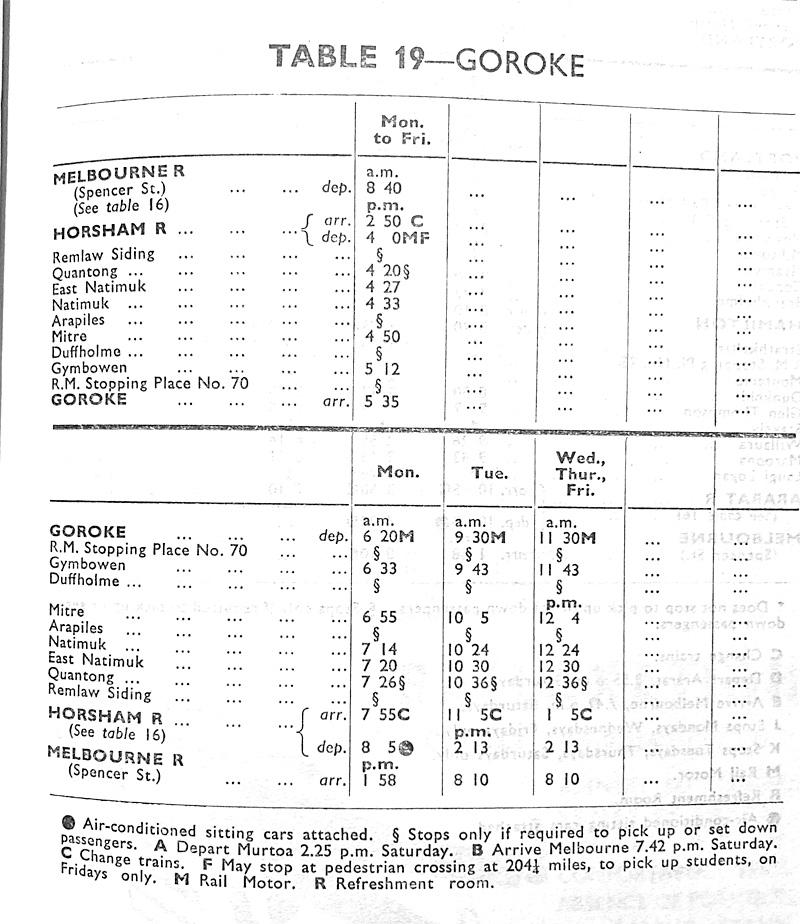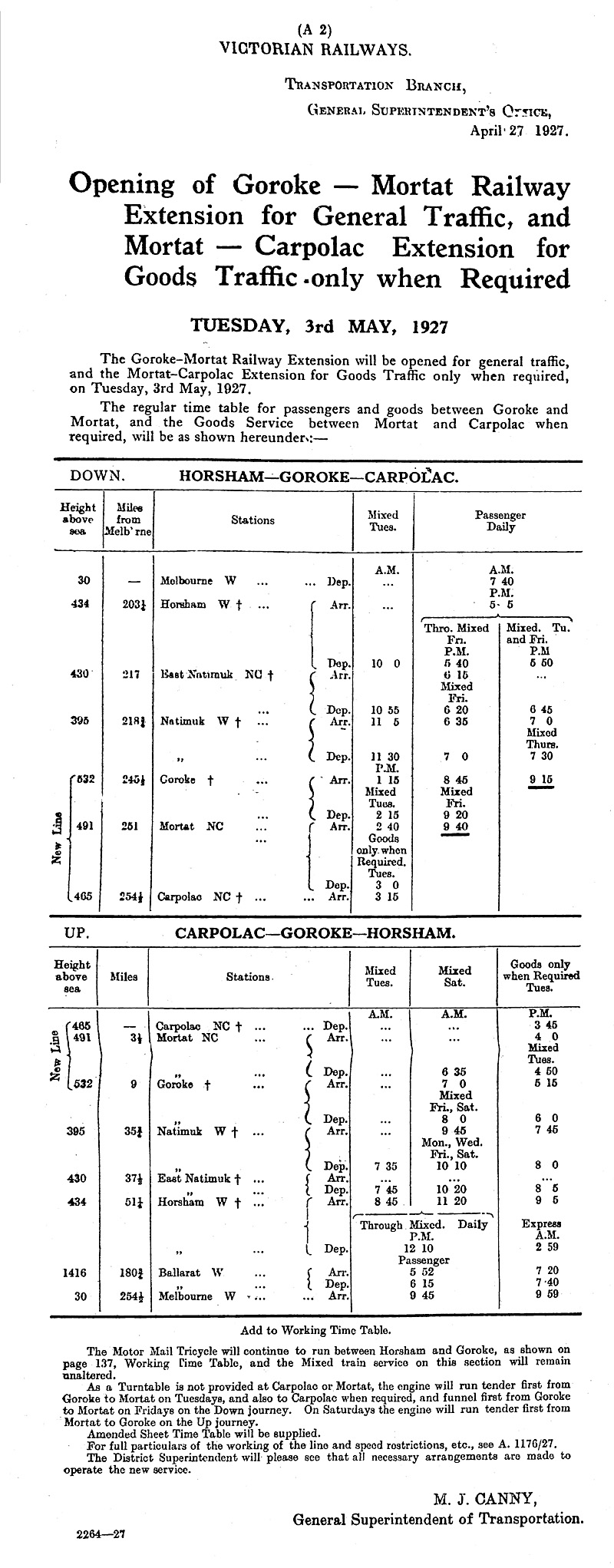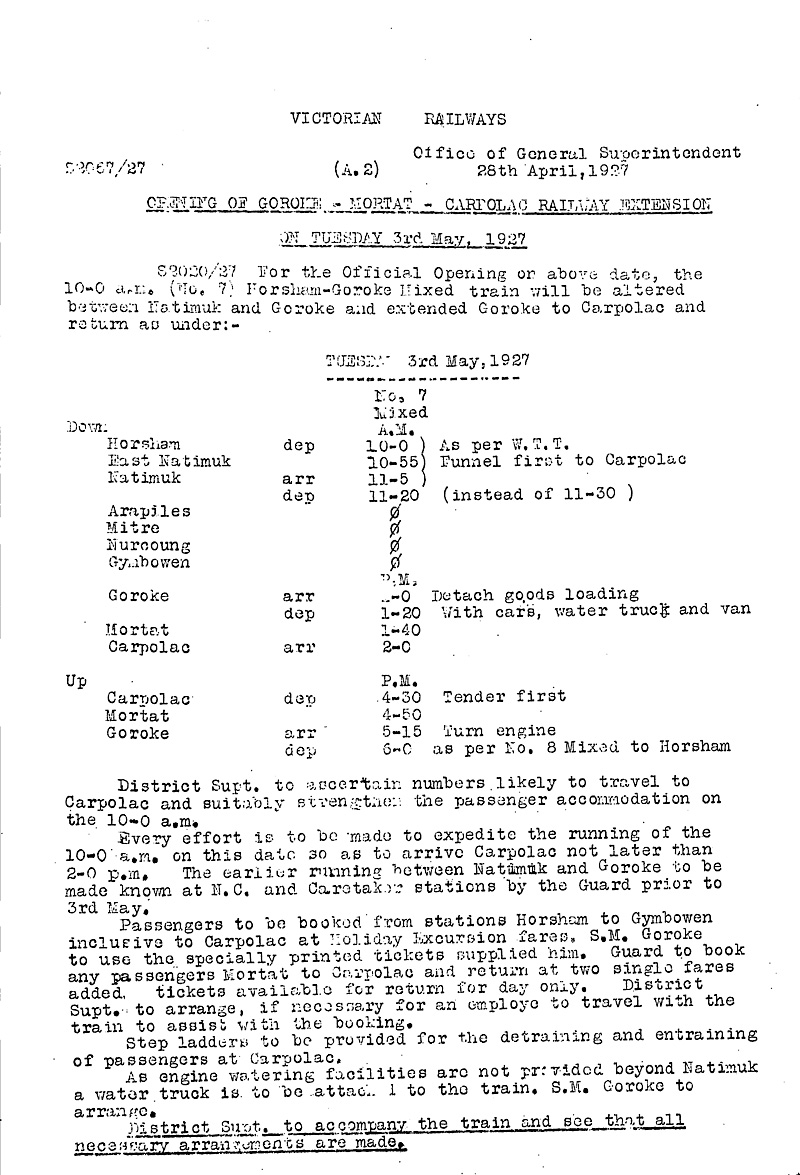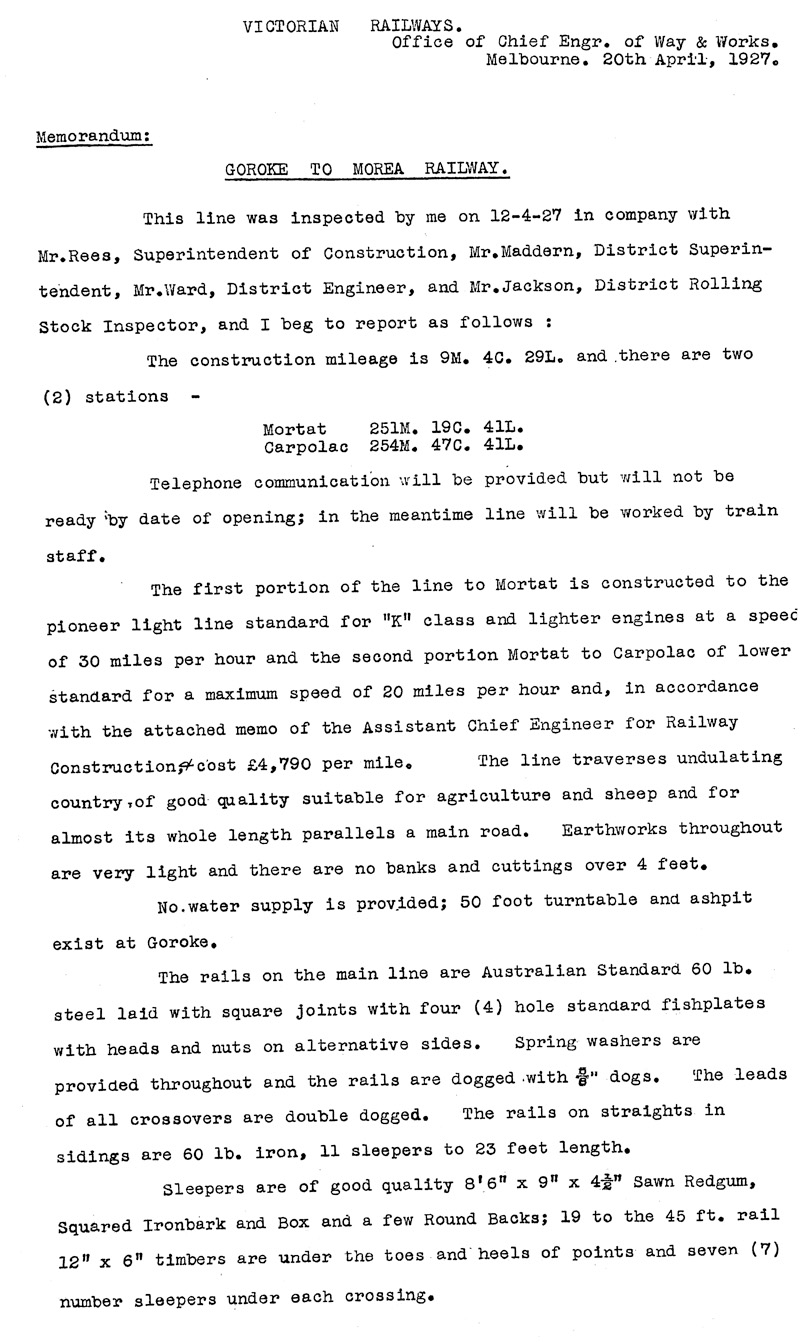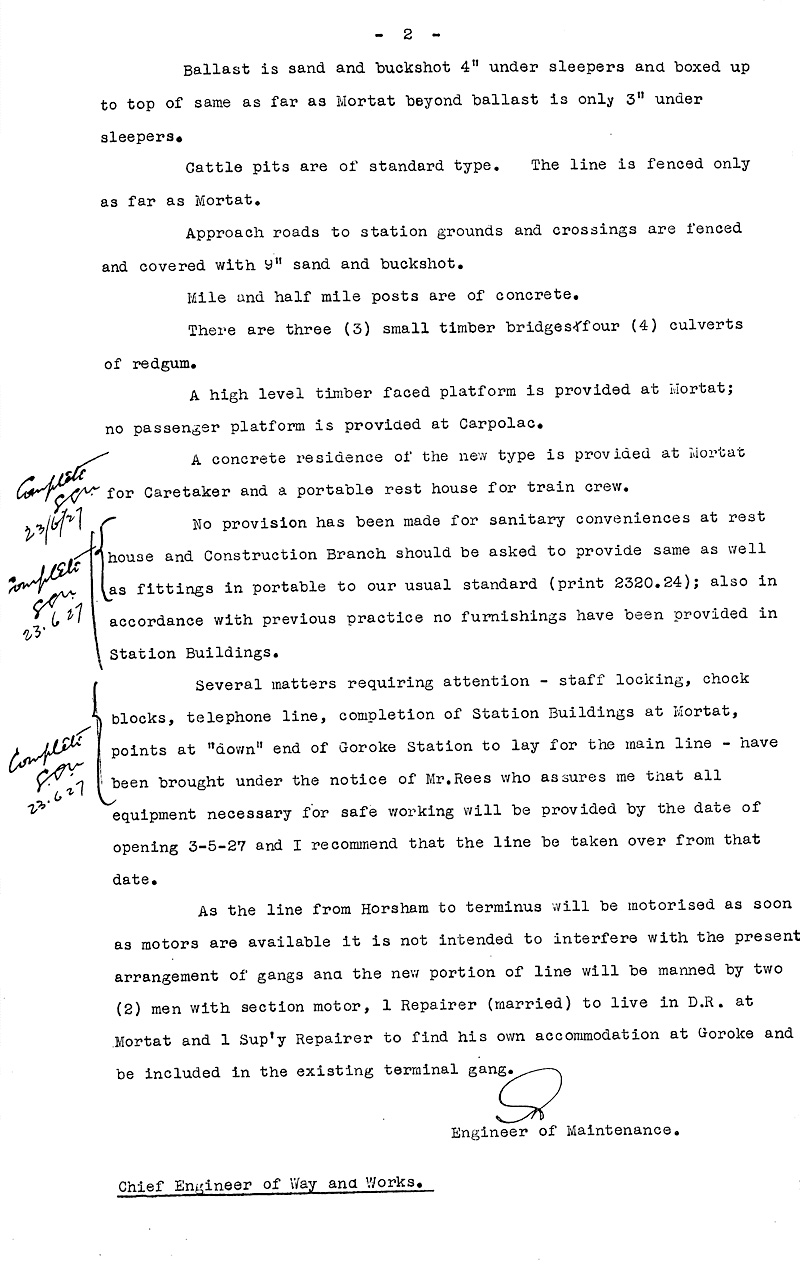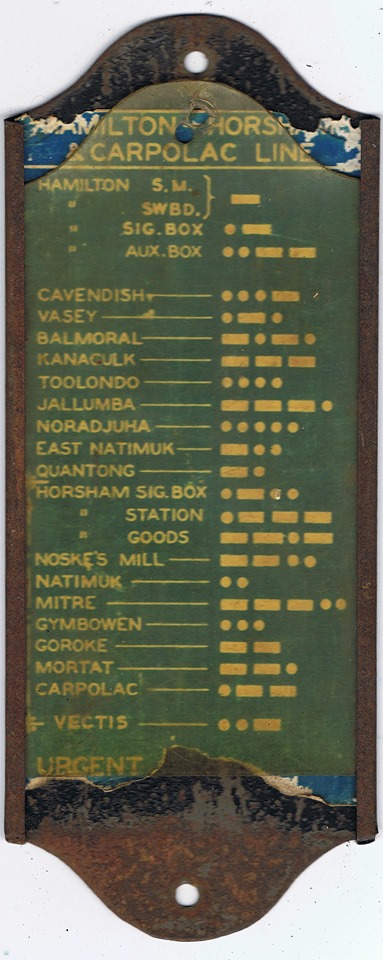Horsham - Carpolac
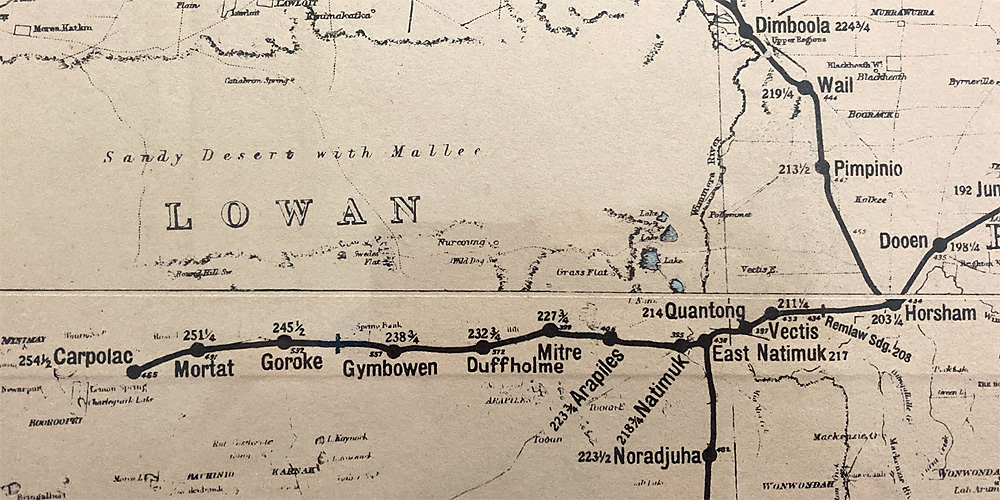
Horsham to East Natimuk opened Aug 25 1887
East Natimuk to Goroke opened July 31 1894
Goroke to Carpolac opened May 3 1927
Horsham to Goroke passenger service withdrawn April 16 1965
Remlaw Signalling Arrangements
Vectis Signalling Arrangements
East Natimuk Signalling Arrangements
Natimuk Signalling Arrangements
Goroke Signalling Arrangements
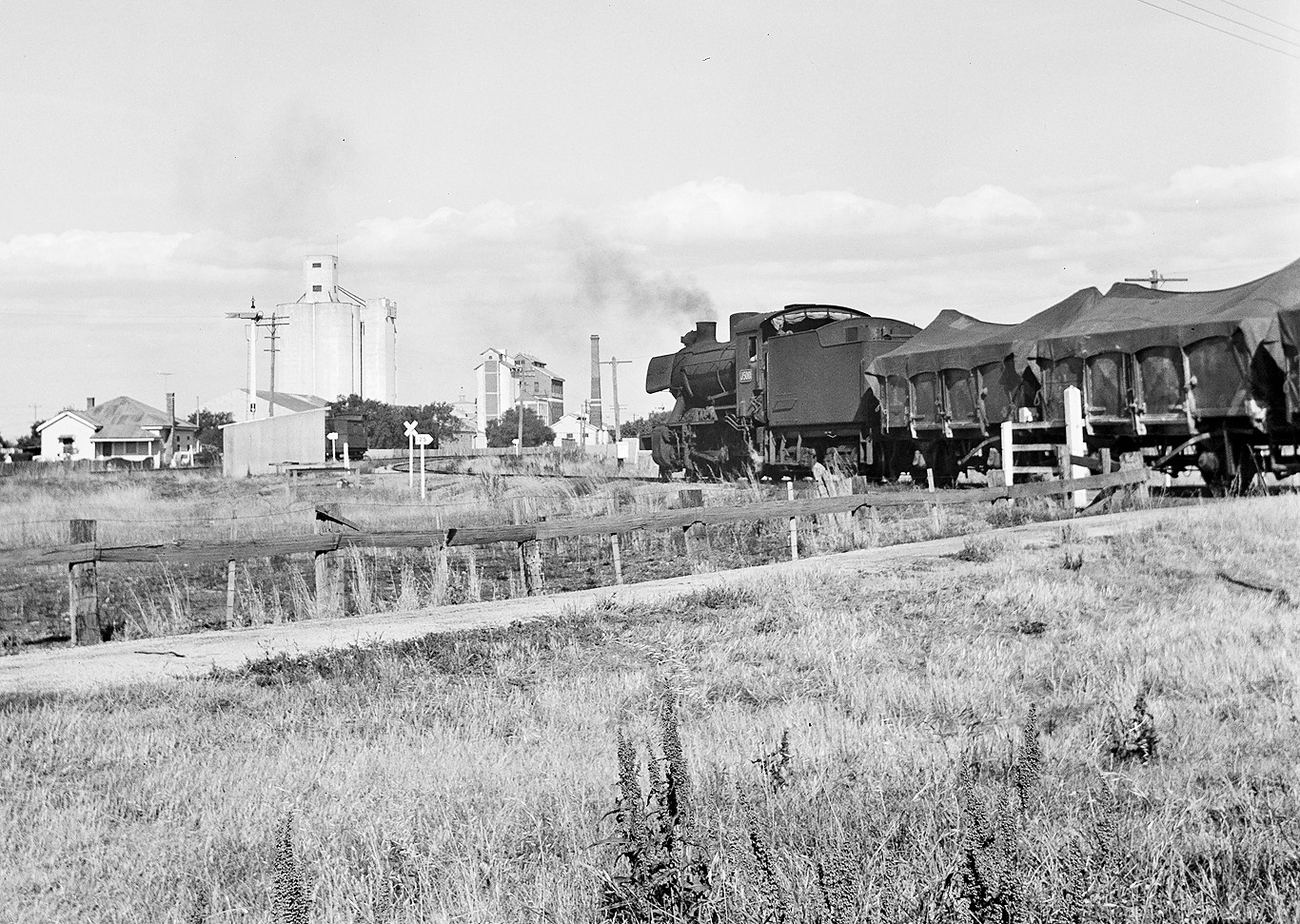
ABOVE: J 500 on an up goods approaches Horsham's up distant signal circa 1960. (SLV collection)
Remlaw siding
1963 Remlaw signal arrangement diagram
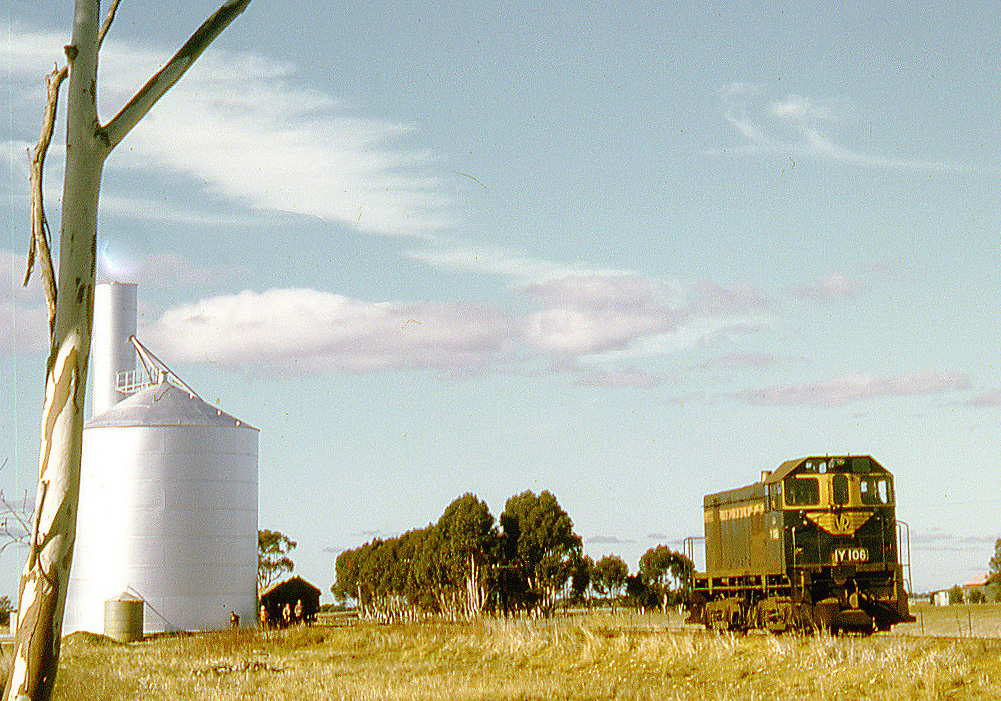
ABOVE: Y 106 has arrived at Remlaw Siding to pick up loaded grain wagons after running light engine from Horsham. 12 June 1972. (photo courtesy Neville Gee)
Quantong
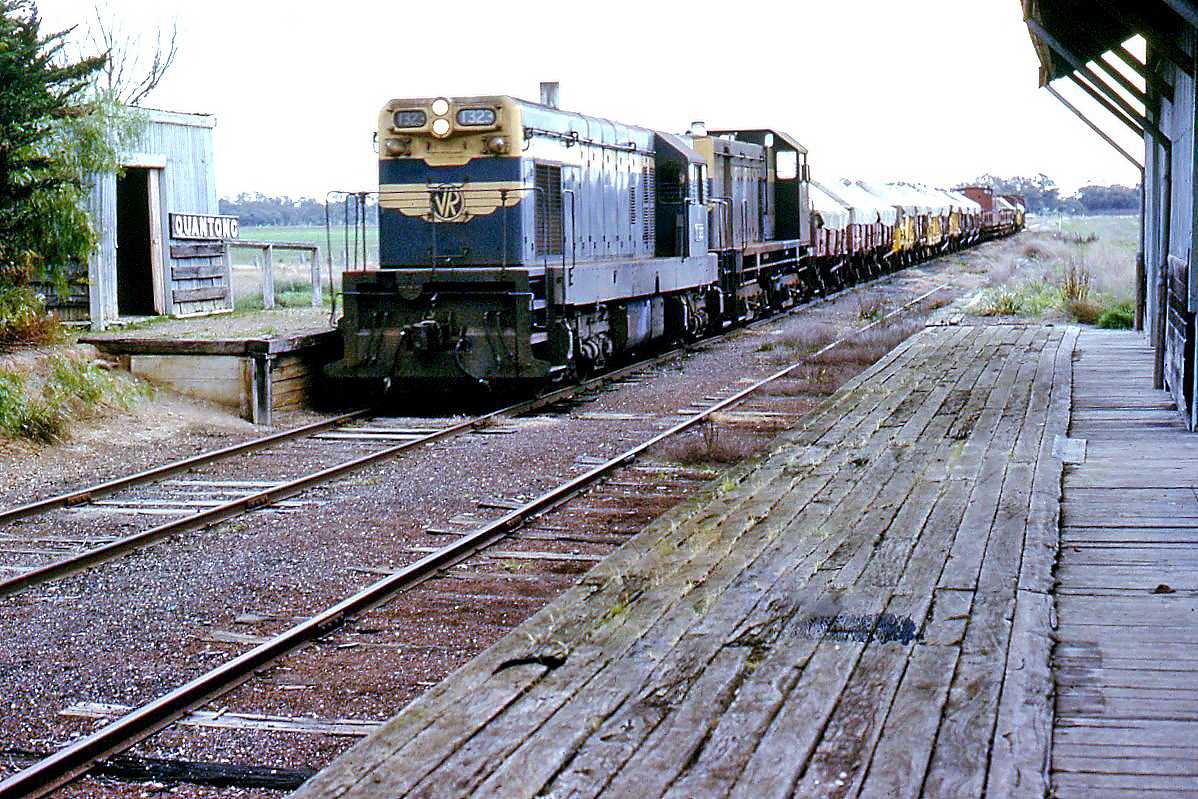
ABOVE: The combined Hamilton and Carpolac goods with T 323 and Y 142 are at Quantong station having just crossed the Wimmera River Bridge en-route to Horsham. 29 July 1971. (photo courtesy Neville Gee)
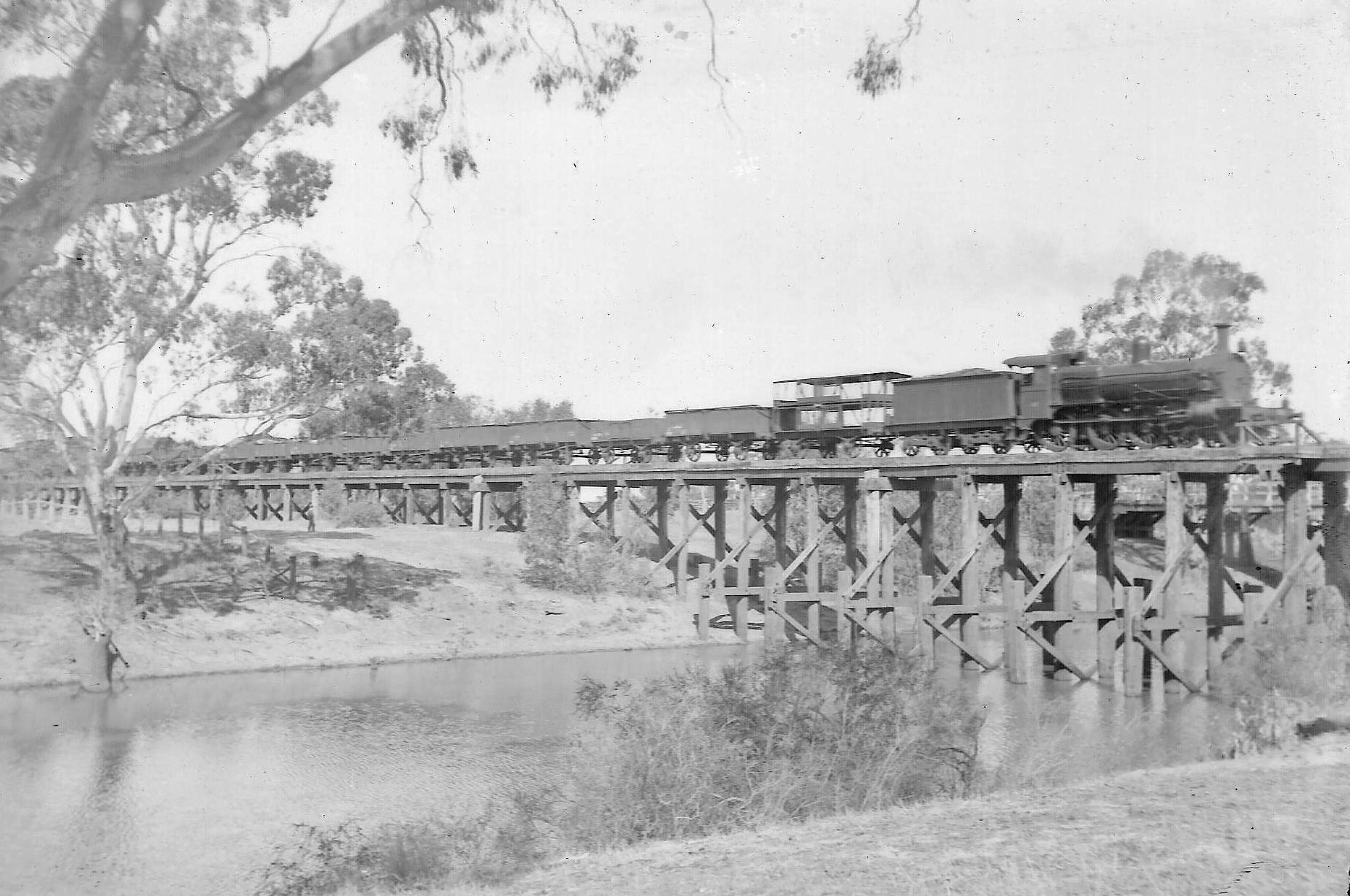
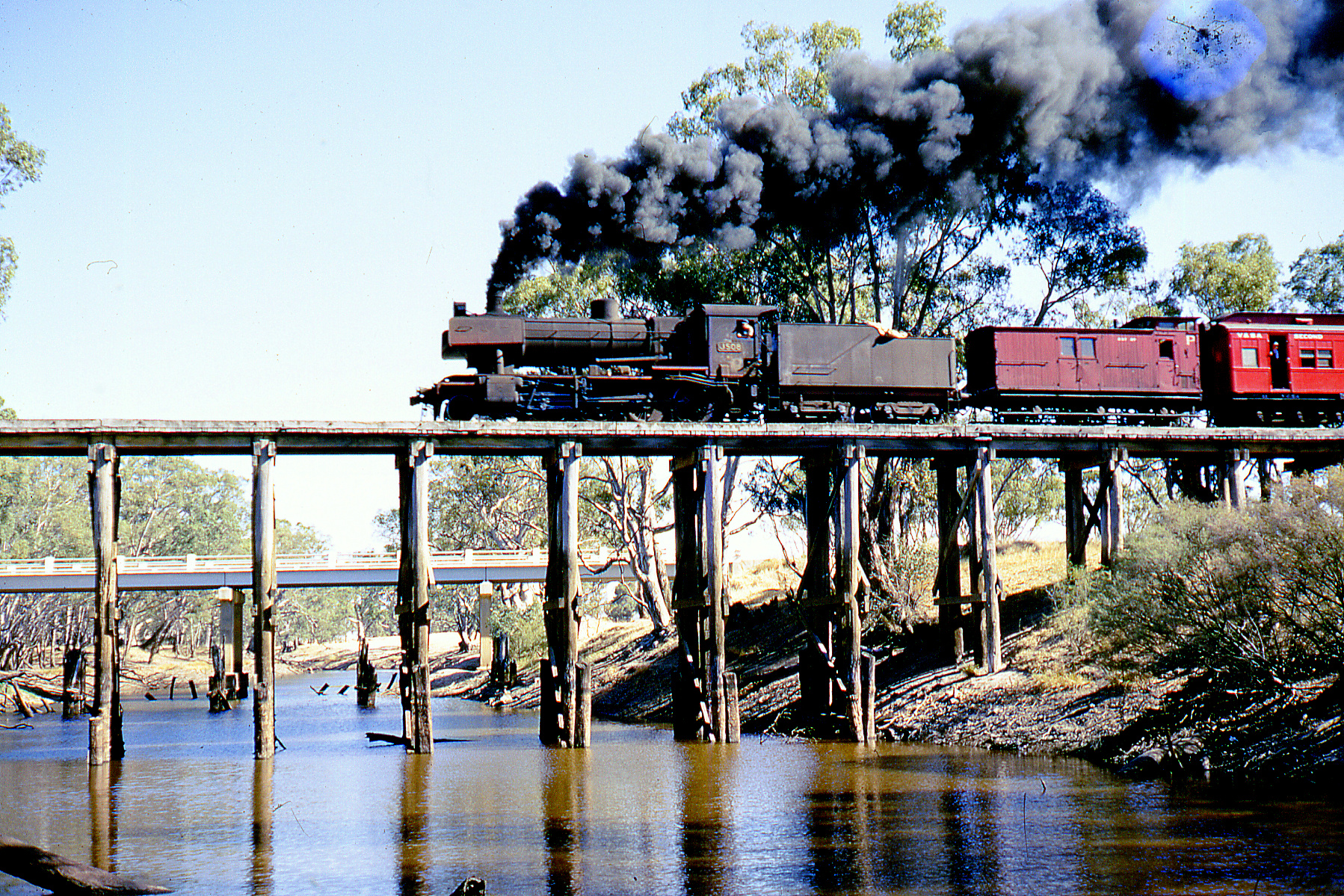
ABOVE: Coal burner J 508 crossing the Wimmera River with a tour train heading towards Horsham. 13 March 1967. (photo courtesy Neville Gee)
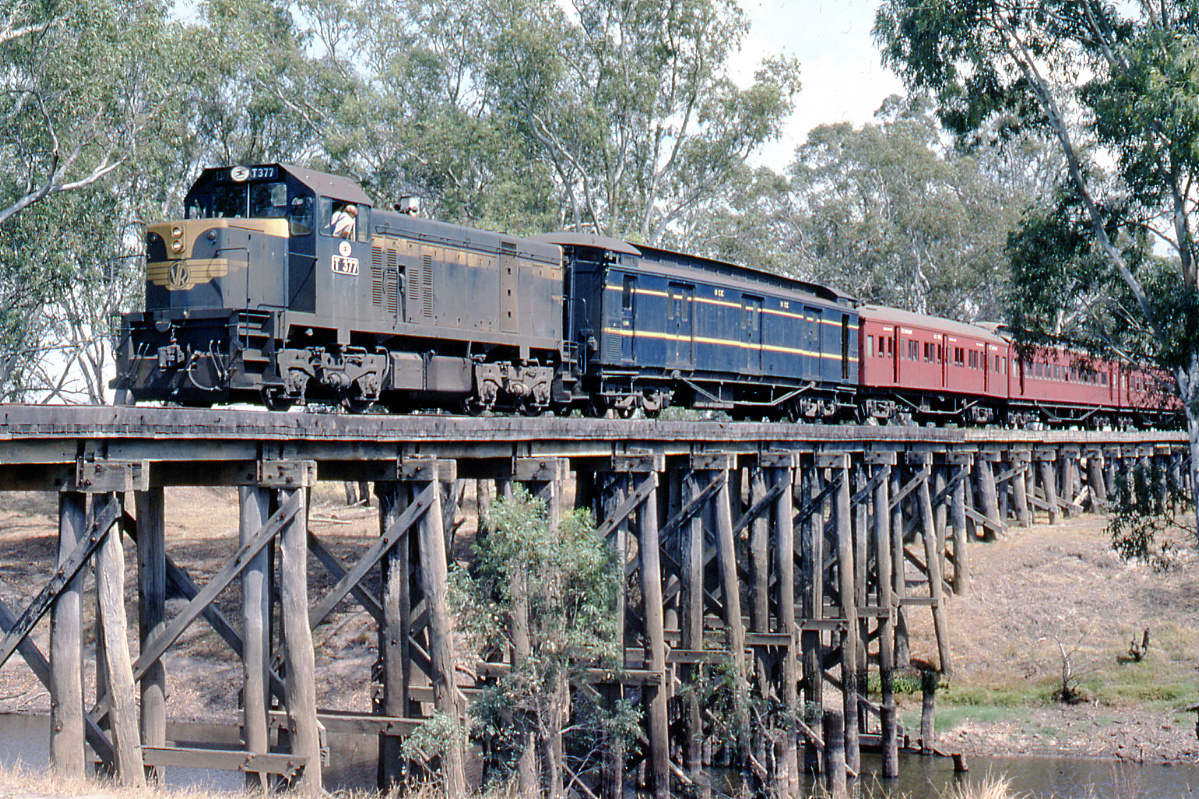
ABOVE: A good view of the substantial Wimmera River Bridge as T 377 on an up train sets back for a photo run. May 1983. (photo courtesy Neville Gee)
East Natimuk
1947 East Natimuk signal arrangement diagram
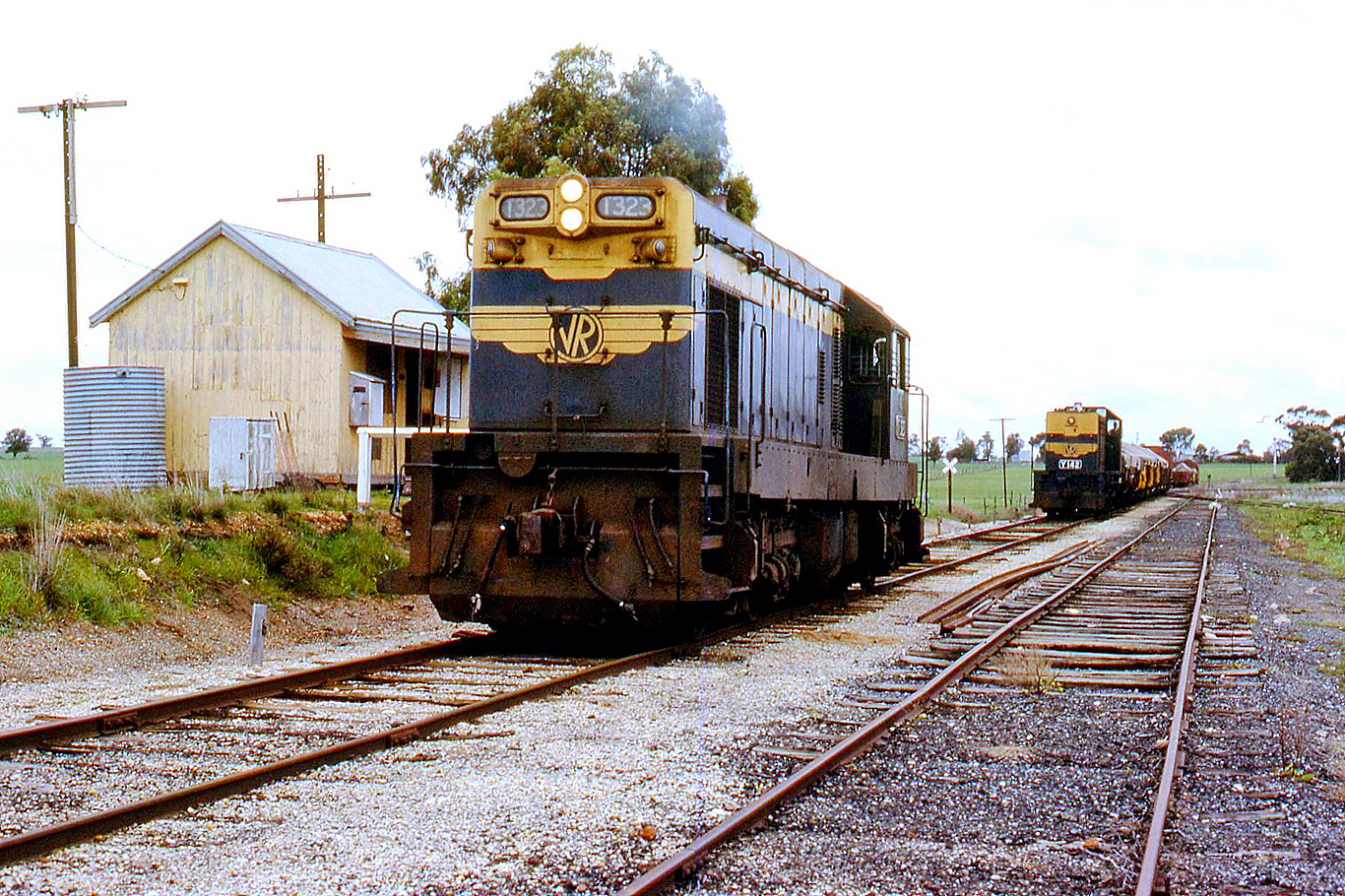
ABOVE: On days when the Hamilton to Horsham and Carpolac to Horsham goods trains both ran they would be combined at East Natimuk. Seen here T 323 from Hamilton and Y 142 from Carpolac are combining their trains on 29 July 1971. (photo courtesy Neville Gee)
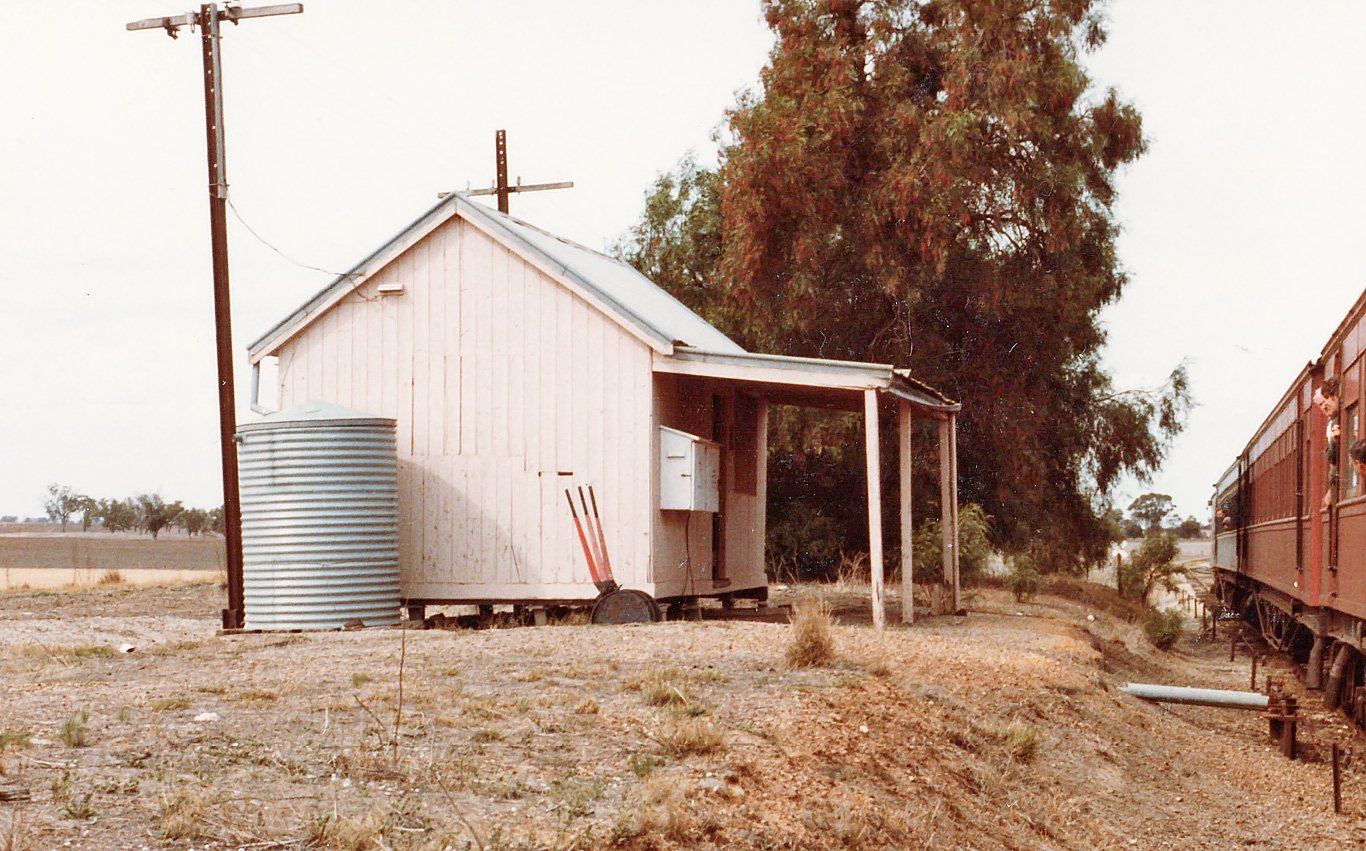
ABOVE: East Natimuk station building, May 19 1983. (photo courtesy Bruce McLean)
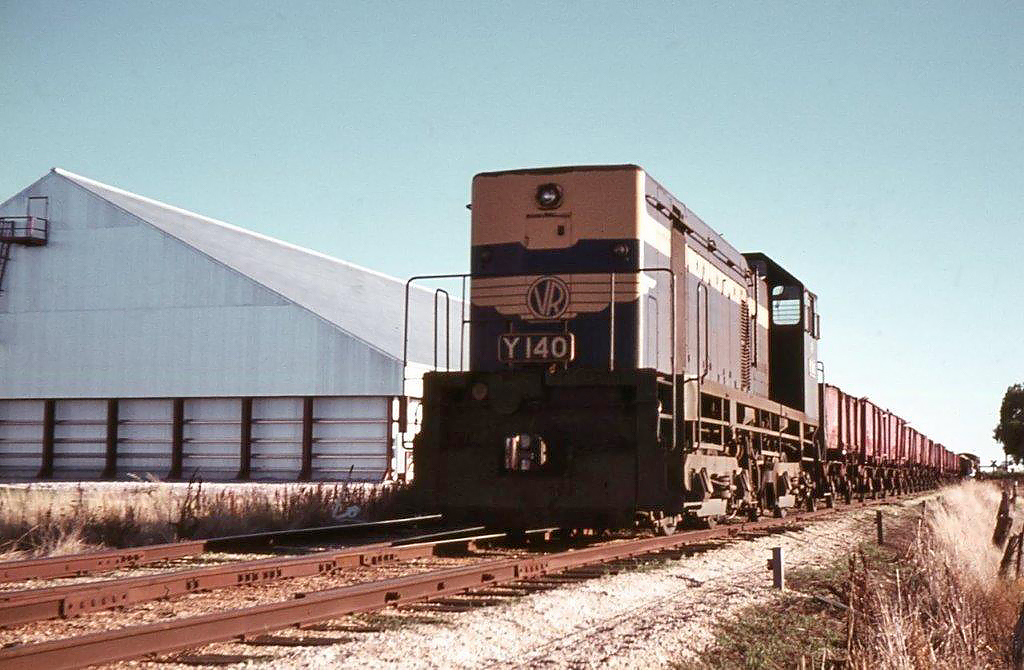
ABOVE: A down goods at East Natimuk, March 30 1971 (photo courtesy Doug Miles)
ABOVE: An up trainload of flour poses for a photo at the junction at East Natimuk, 1917. BELOW: Taken from almost the same spot as the photo above, this view shows the junction very well, the line to Balmoral disappearing on the left and the line from Goroke curving away to the right, May 19 1983. (photo courtesy Bruce McLean)
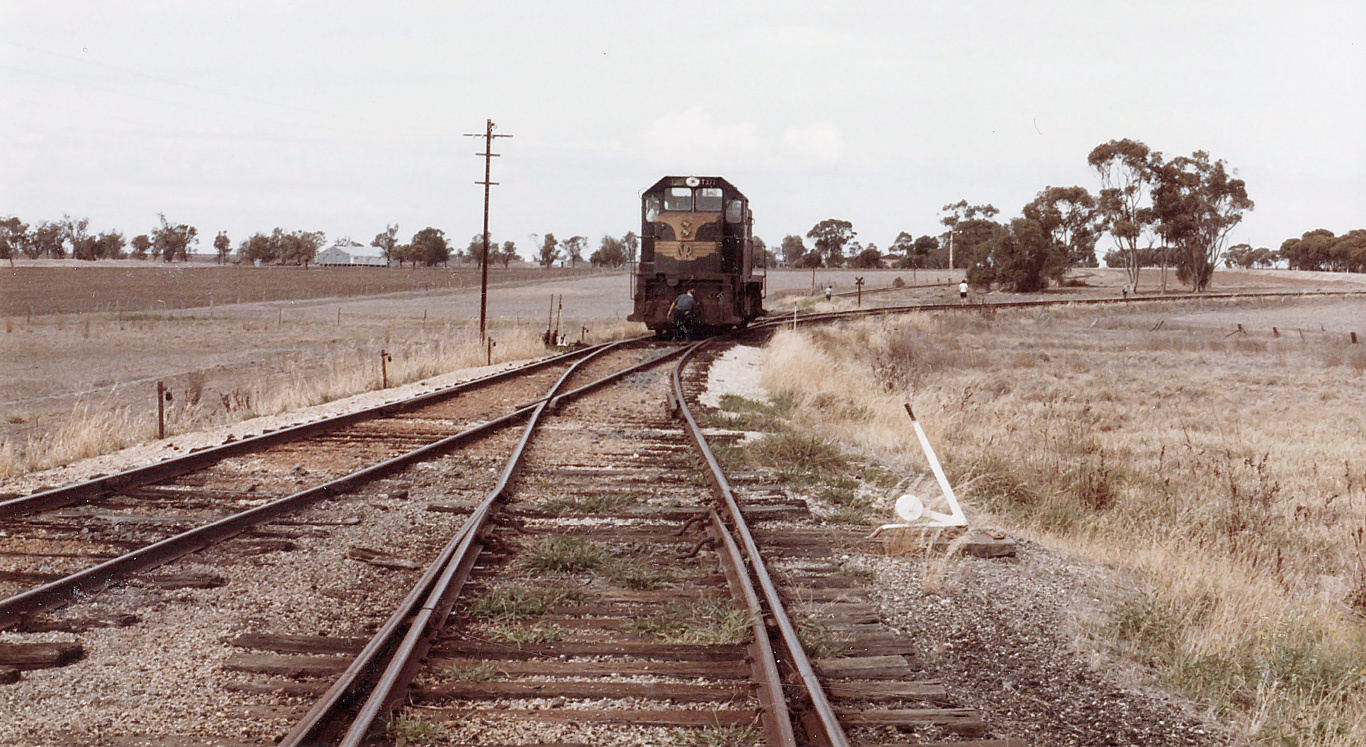
Natimuk
1912 Natimuk signal arrangement diagram
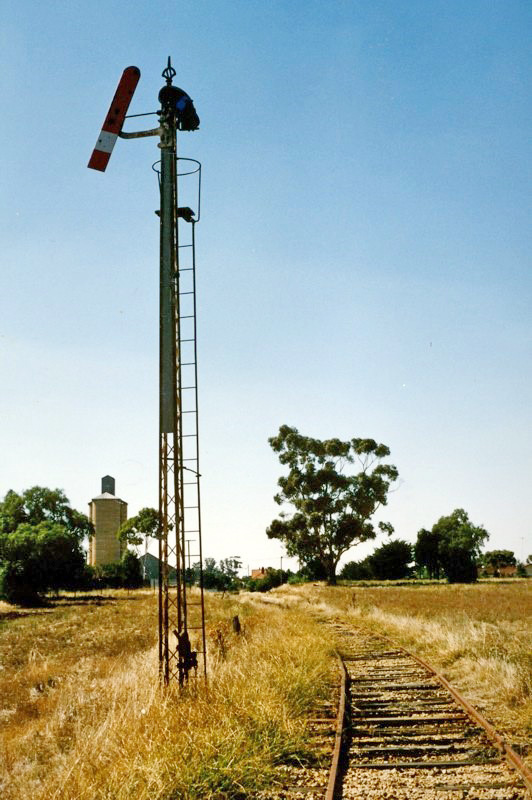
ABOVE: The down home signal at Natimuk, after the line's closure. (photo courtesy Lance Cross)
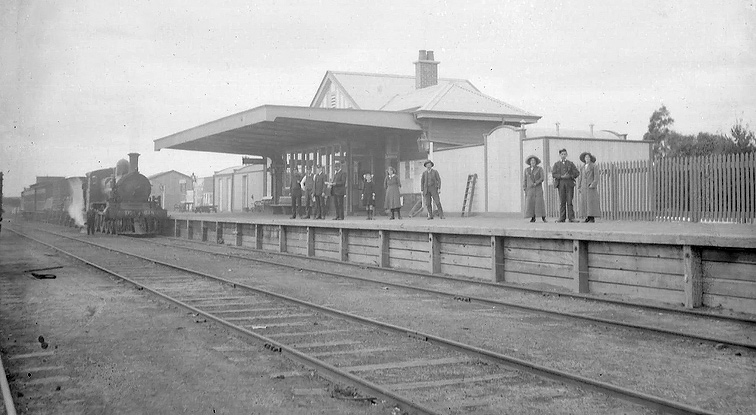
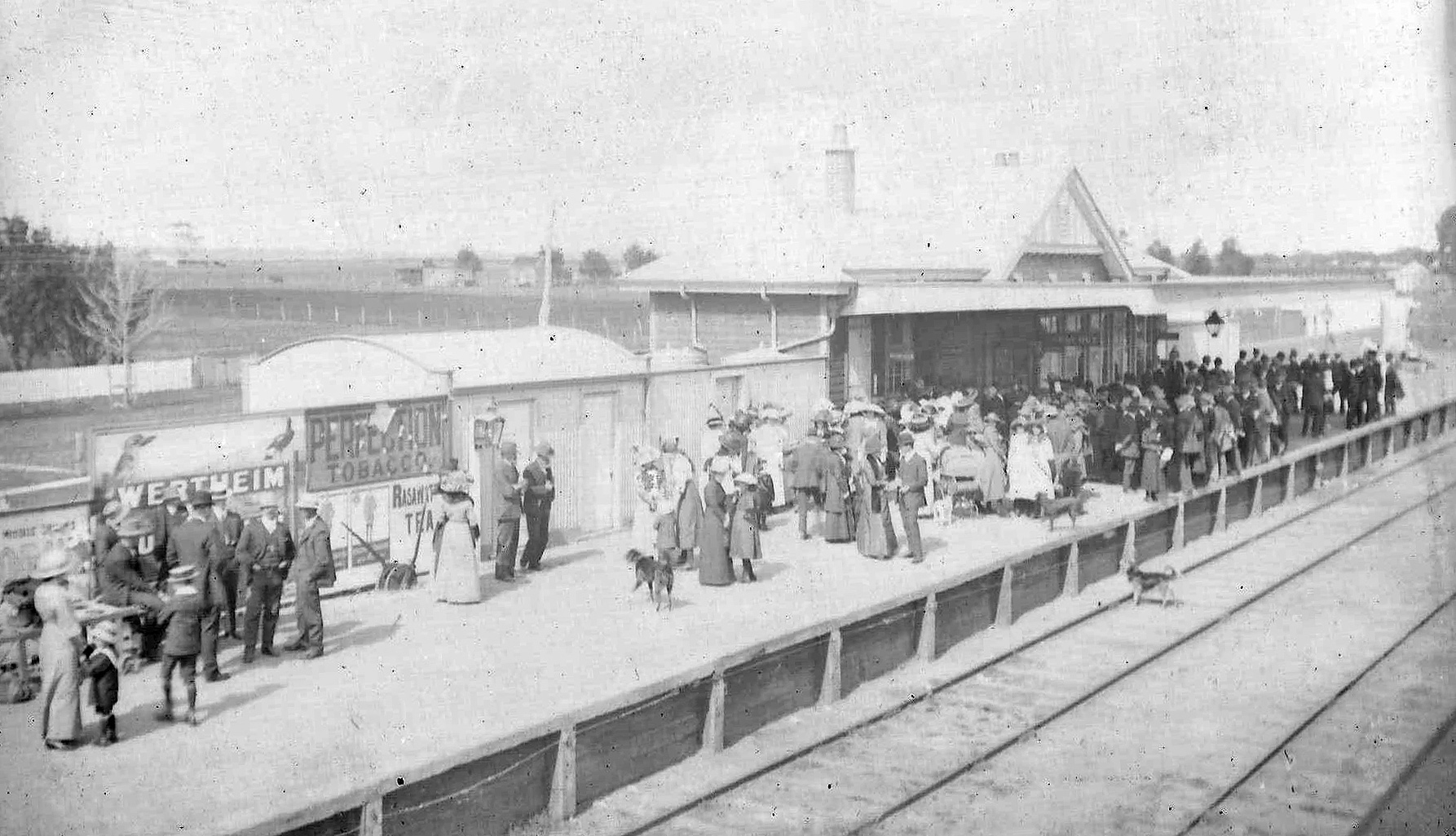
ABOVE: Natimuk station. The presence of signal levers on the platform helps us date the photo; up and down home signals were provided on Jan 22 1912. One wonders what special occasion resulted in such a gathering.
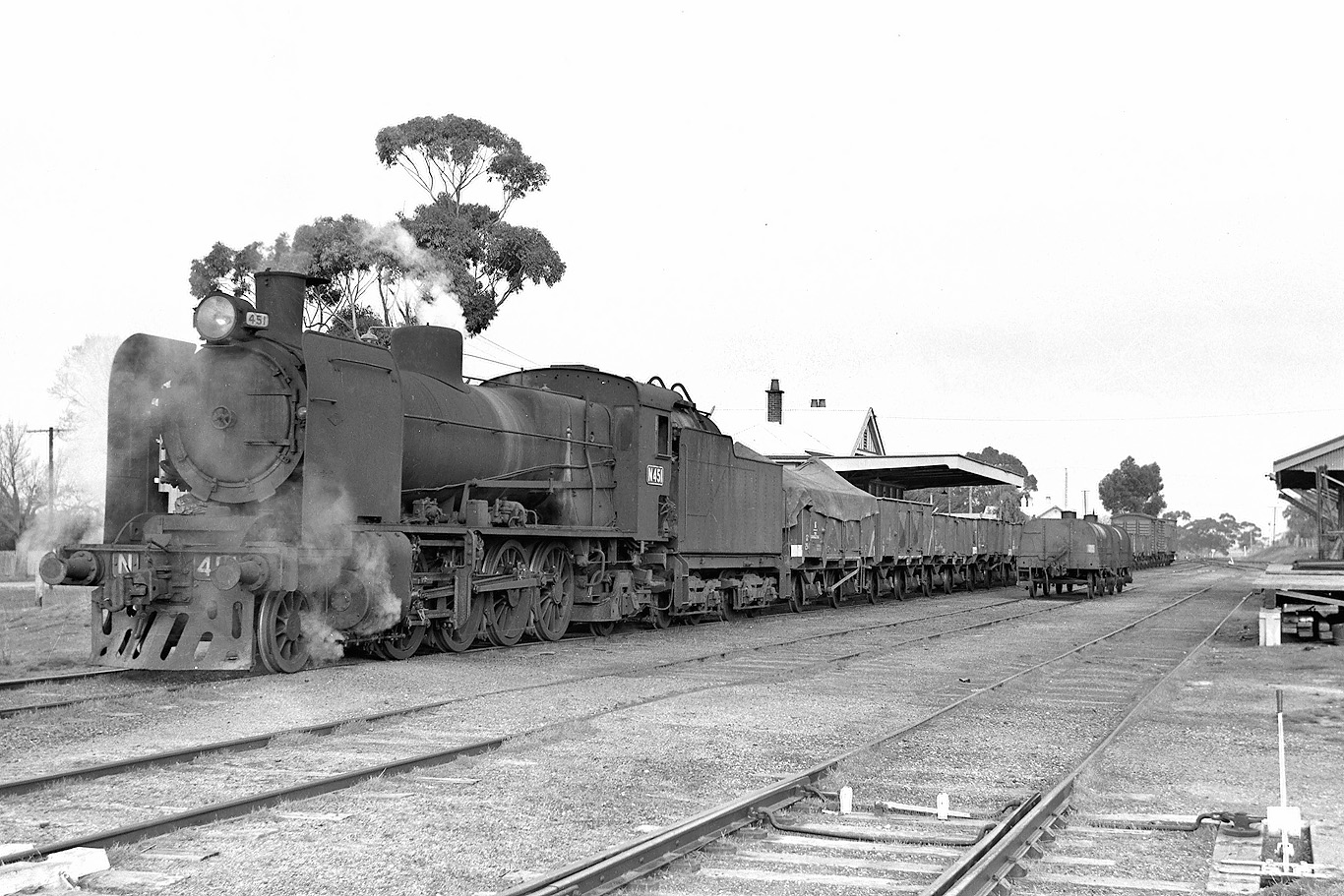
ABOVE: N 451 on an up Goroke goods at Natimuk. The water trucks have been filled and put into No 2 road for the next down goods. This was the only oil burning N class Des ever had to Goroke, June 13 1958. (photo courtesy Des Jowett)
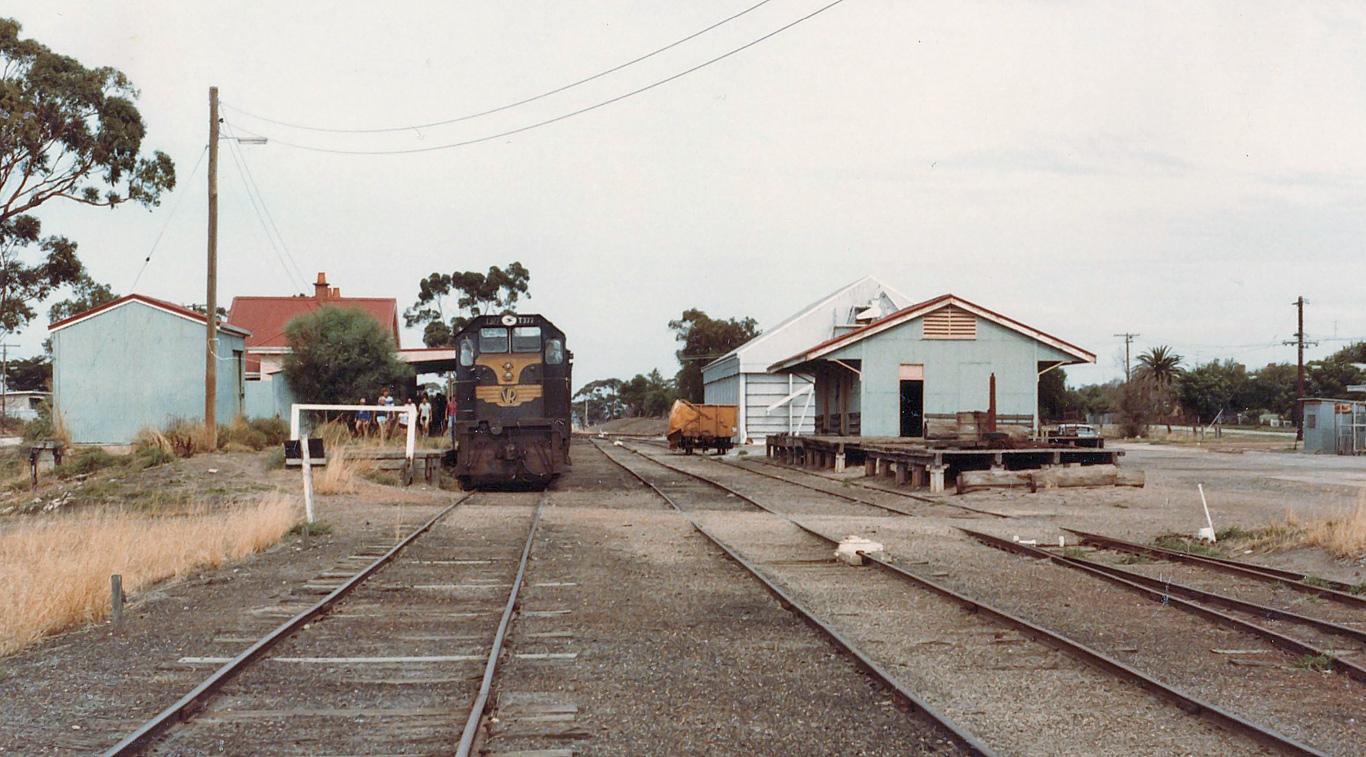
ABOVE: Looking west at Natimuk, the train was an AREA charter and was probably the last passenger train on the line, May 19 1983. (photo courtesy Bruce McLean)
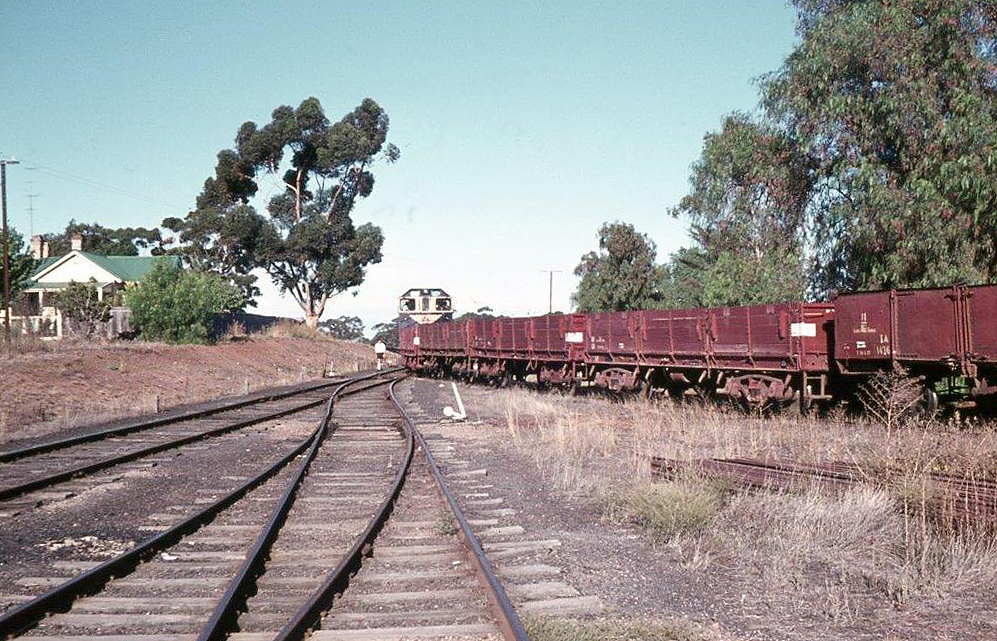
ABOVE & BELOW: Looking west, Y 140 pulls wagons out of the stockyards/silo track at Natimuk, past the stationmaster's DR, March 30 1971 (photo courtesy Doug Miles) :
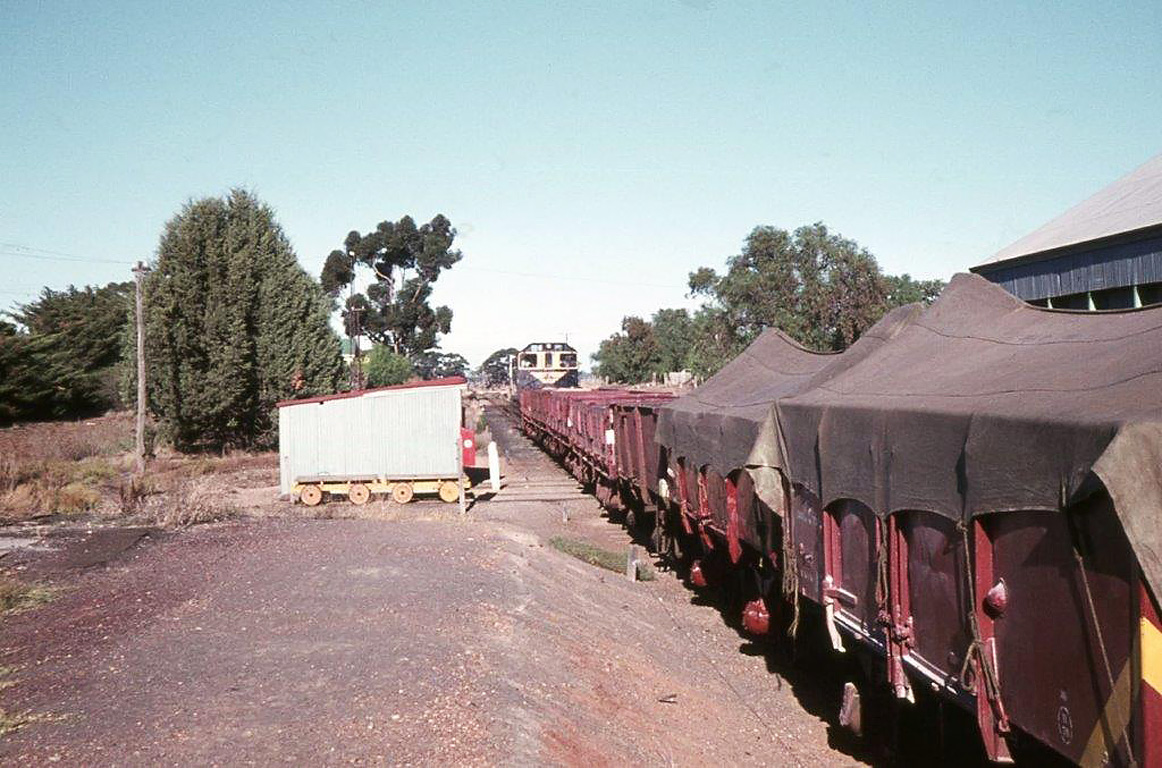
BELOW: A similiar view taken 12 years later. The DR has disappeared. May 19 1983. (photo courtesy Bruce McLean)
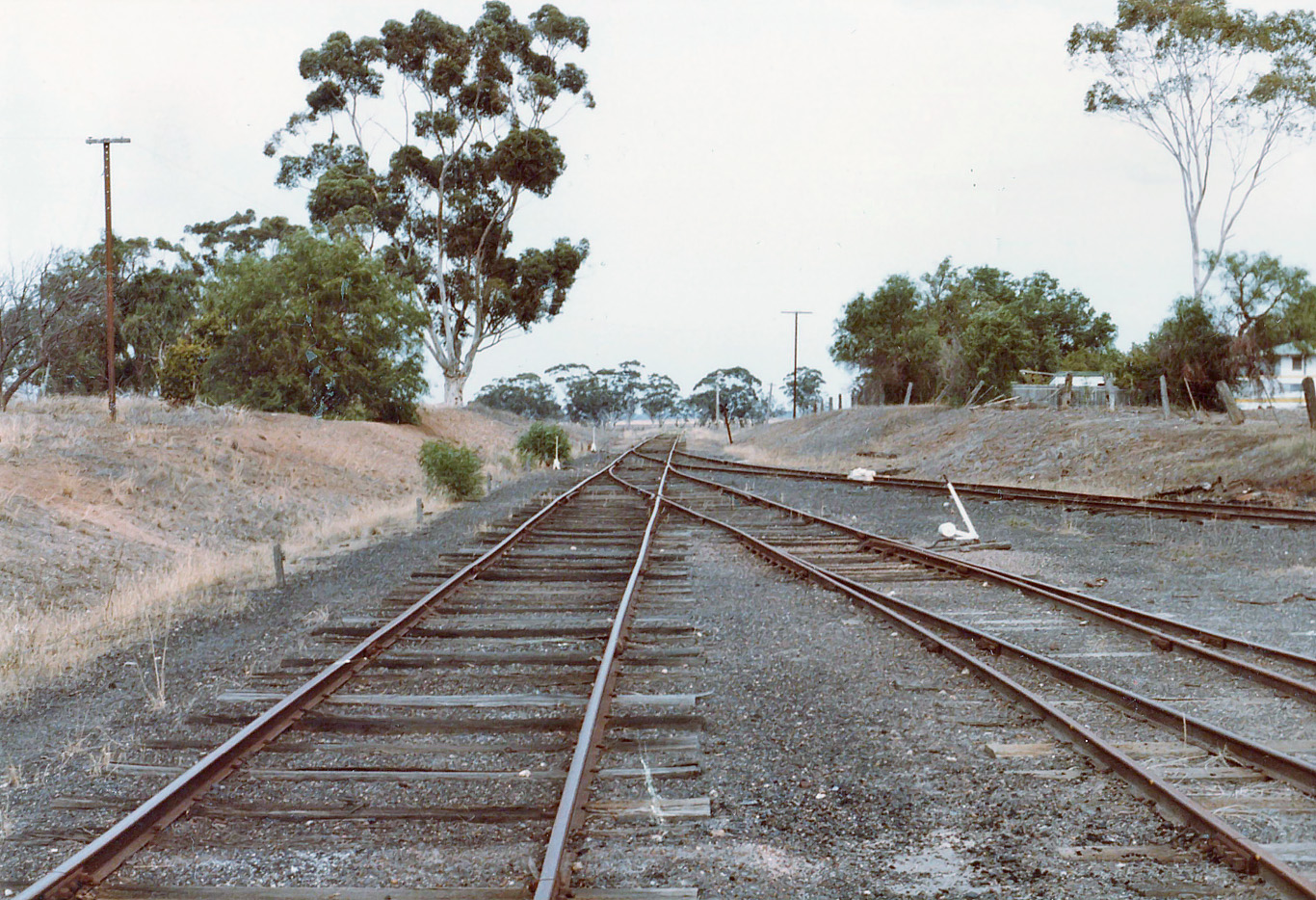
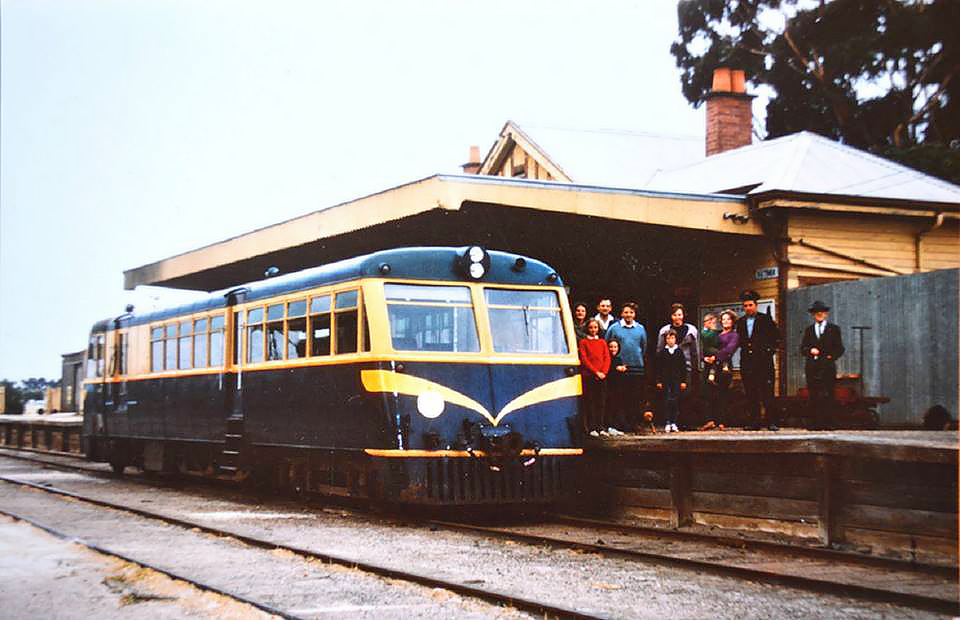
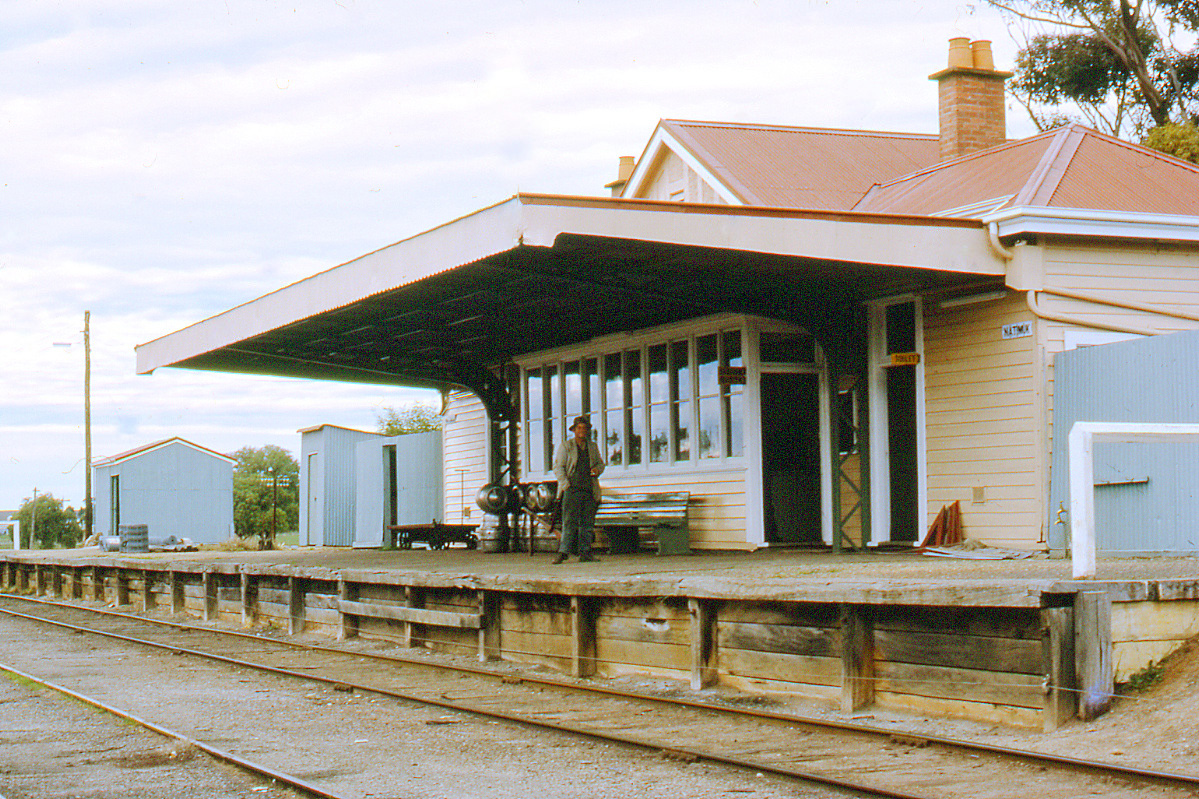
ABOVE: Natimuk Station, 17 August 1971. (photo courtesy Neville Gee)
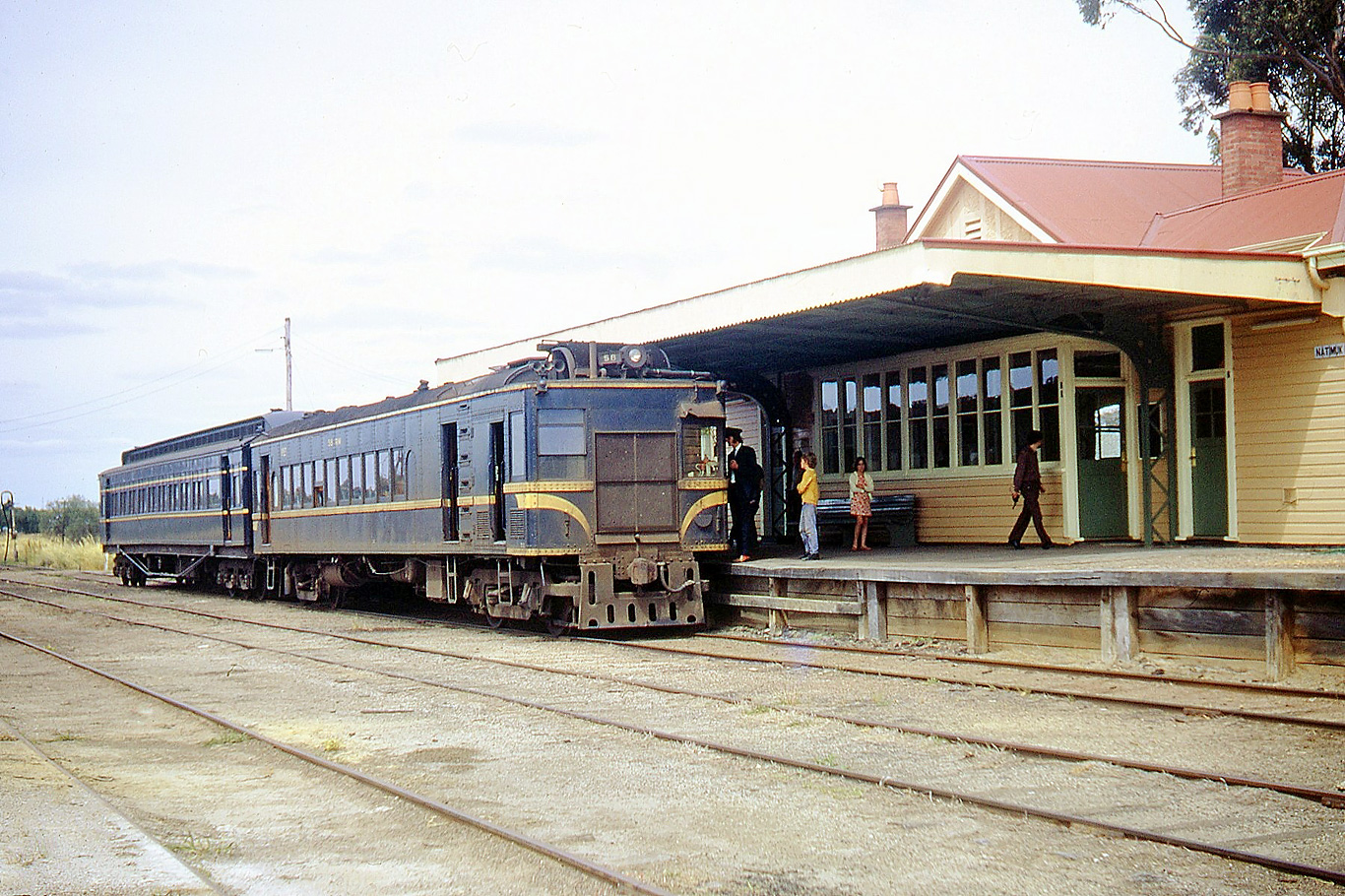
ABOVE: DERM 58 and No. 5 Sleeping Car have arrived at Natimuk from Rupanyup on a tour train to Carpolac. The sleeper was detached here. 30 November 1974 (photo courtesy Neville Gee)
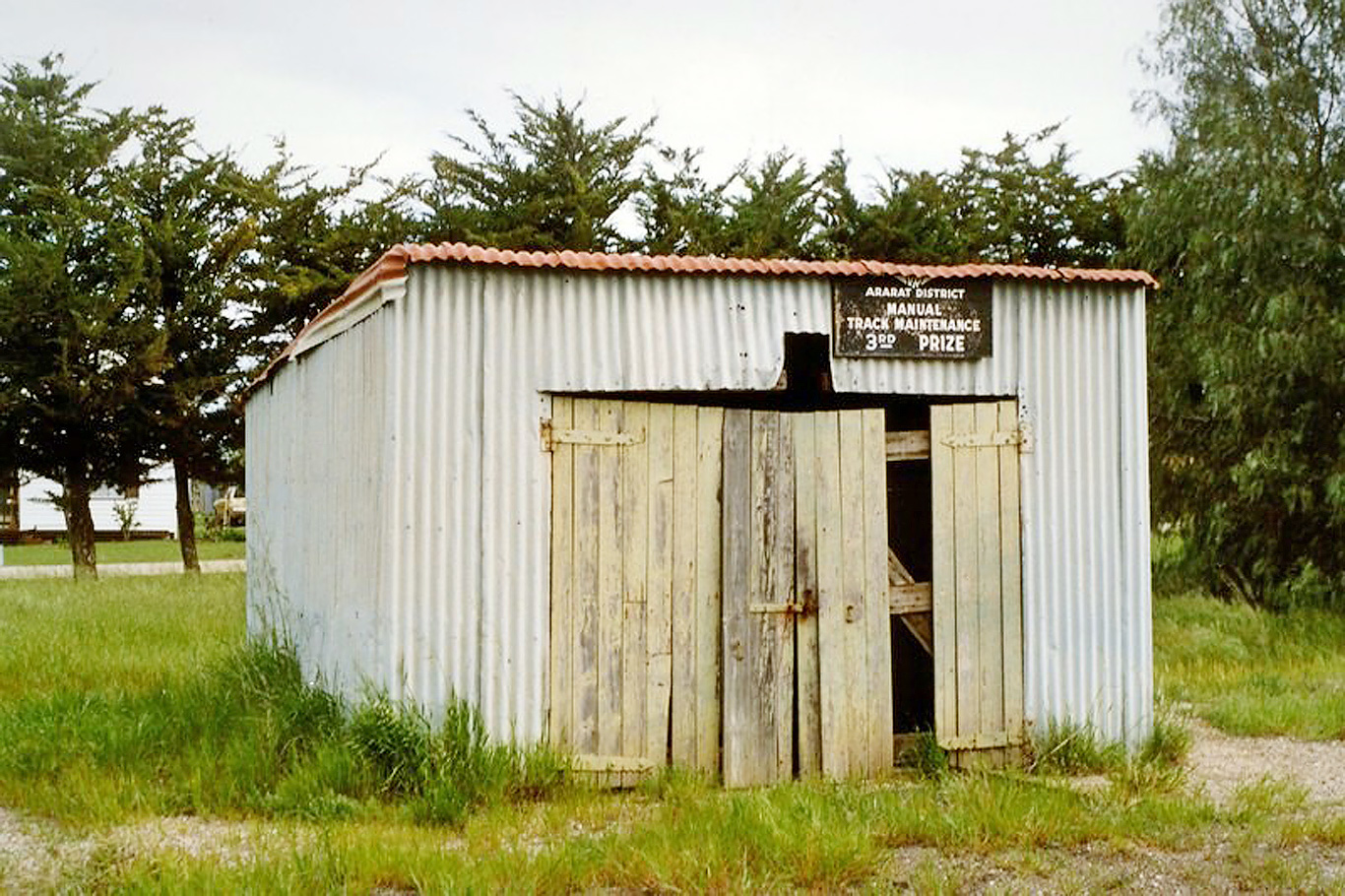
ABOVE: The gangers shed at Natimuk with their 3rd prize award displayed, it looks like their carpentry skils wouldn't even get a 3rd prize!
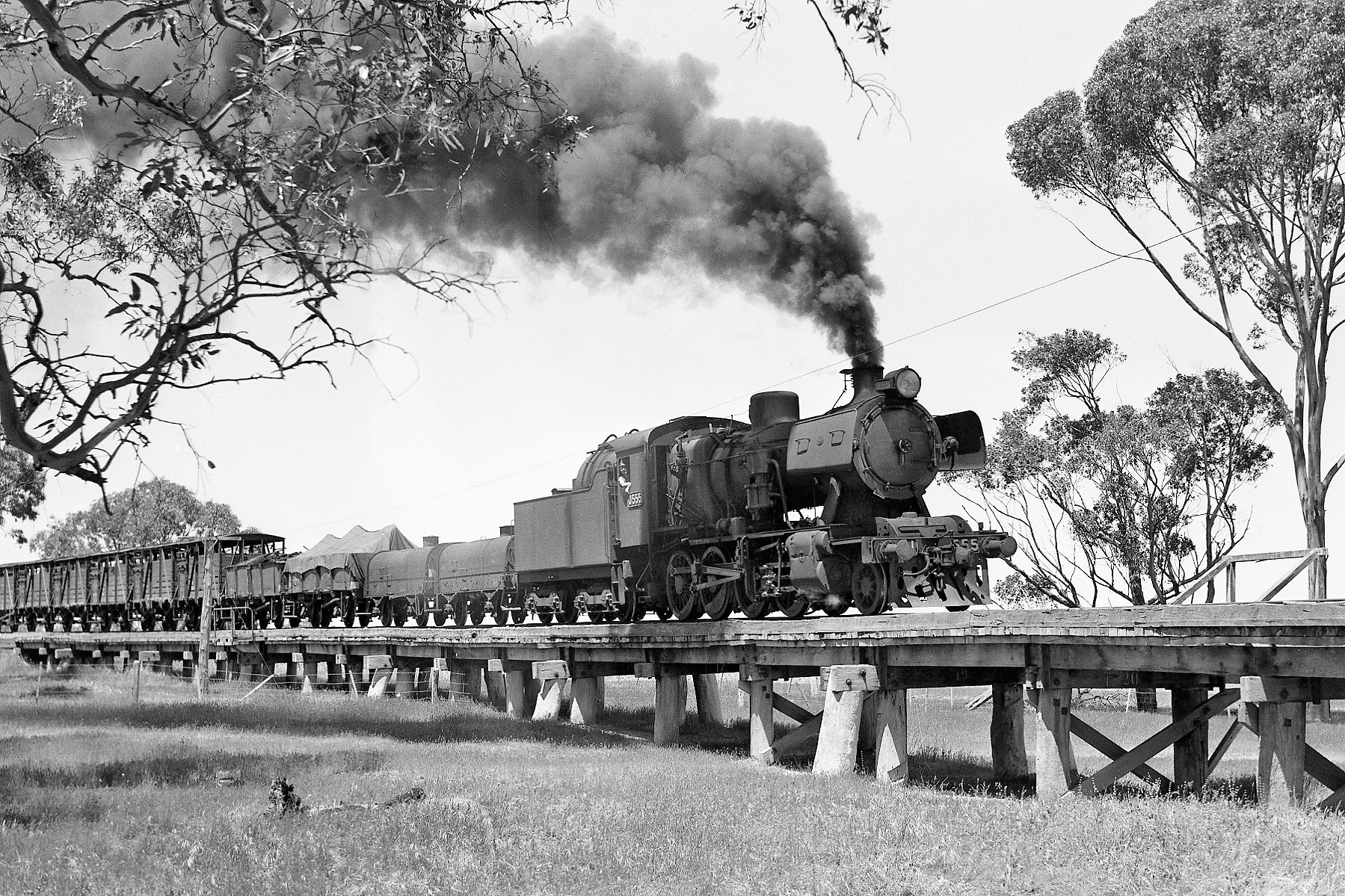
ABOVE: J 555 crossing Natimuk Creek leaving Natimuk on a Goroke goods on 11-11-1958. (photo courtesy Des Jowett)
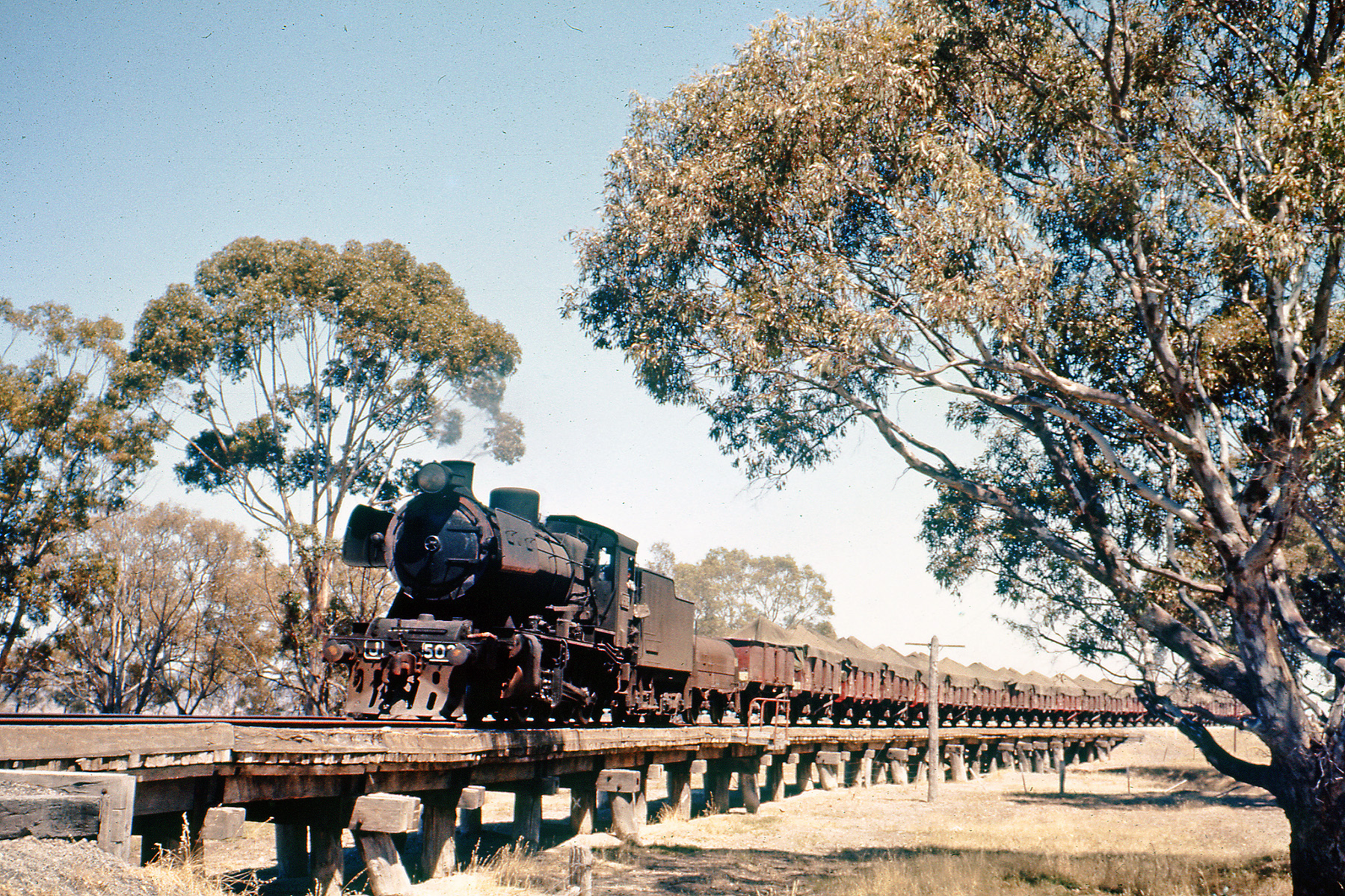
ABOVE: J 503 crosses the Natimuk creek bridge as it arrives at Natimuk on an up goods from Goroke, Jan 6 1962. (photo courtesy Des Jowett)
BELOW: At the same location on an enthusiasts special, May 19 1983. (photo courtesy Lance Cross)
Arapiles
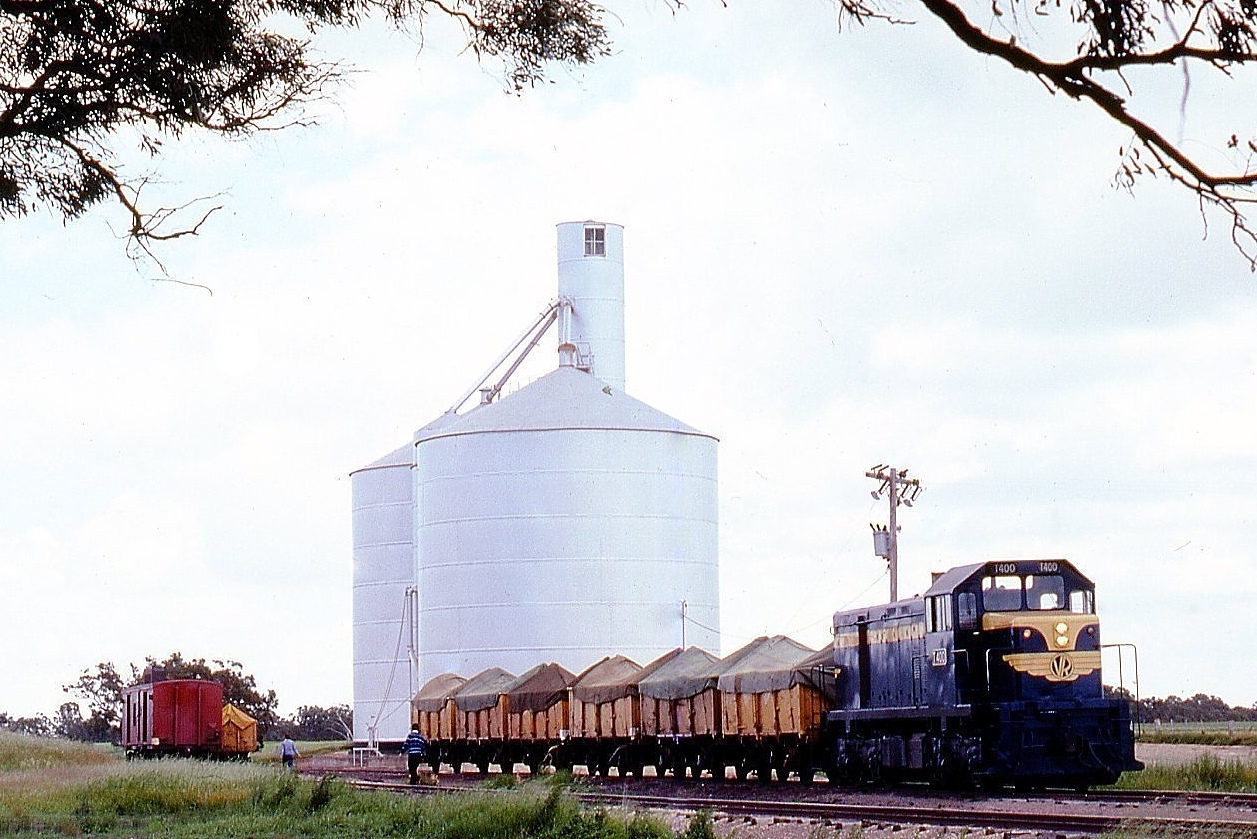
ABOVE: The fireman assists the guard as T 400 picks up several loaded grain wagons at Arapiles. BELOW: With the train made up, and scotch block back in place, it is now ready to depart Arapiles. Mitre Rock is clearly visible. 13 March 1971 (both photos courtesy Neville Gee)
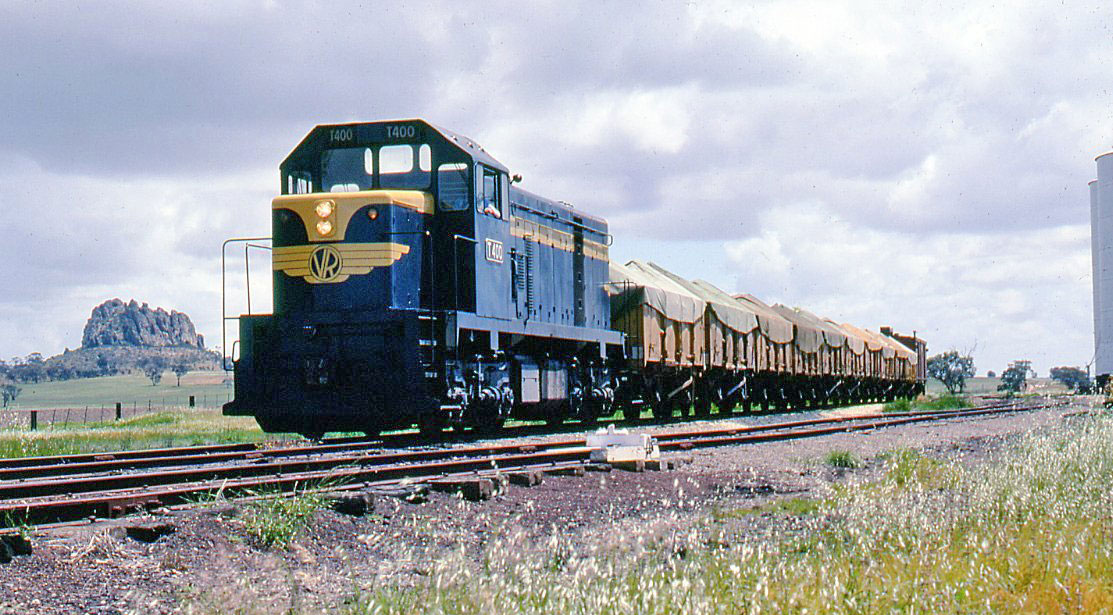
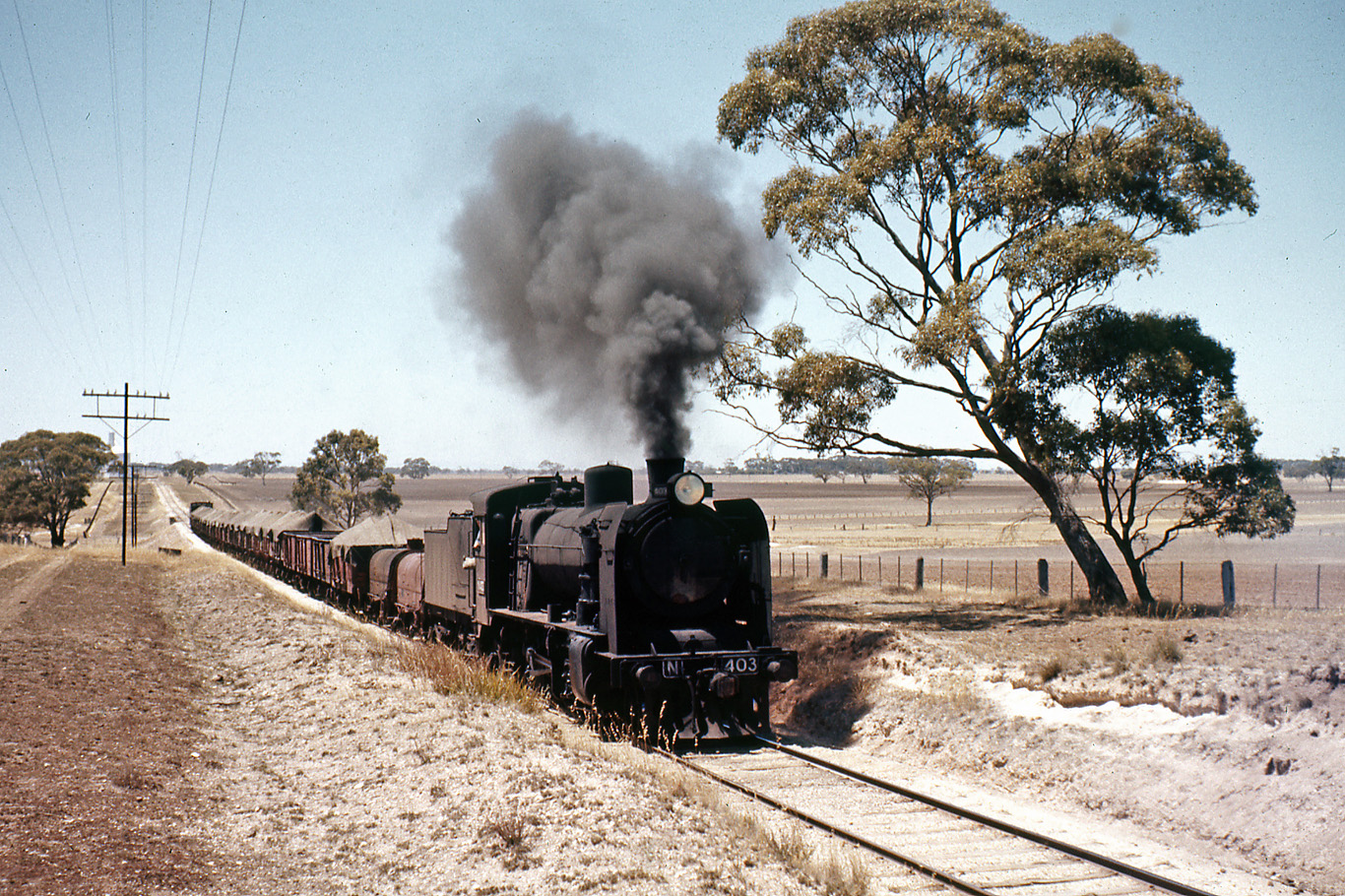
ABOVE: A down Goroke goods between Arapiles (seen in the distance on the left) and Mitre, Jan 6 1962. (photo courtesy Des Jowett)
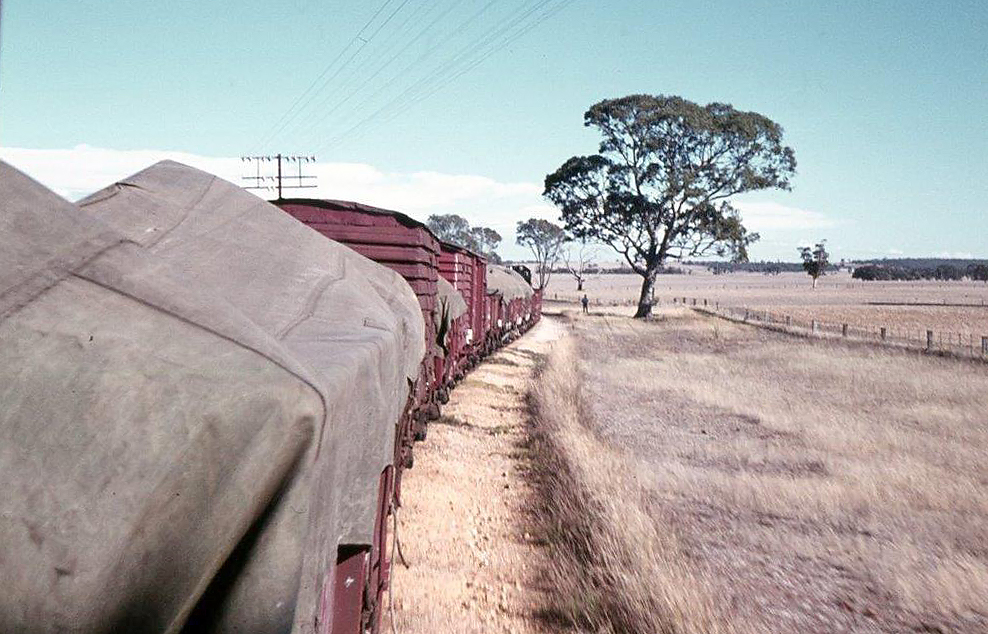
ABOVE: Approaching Mitre on a down train viewed from the guard's van, March 30 1971. (photo courtesy Doug Miles)
Mitre
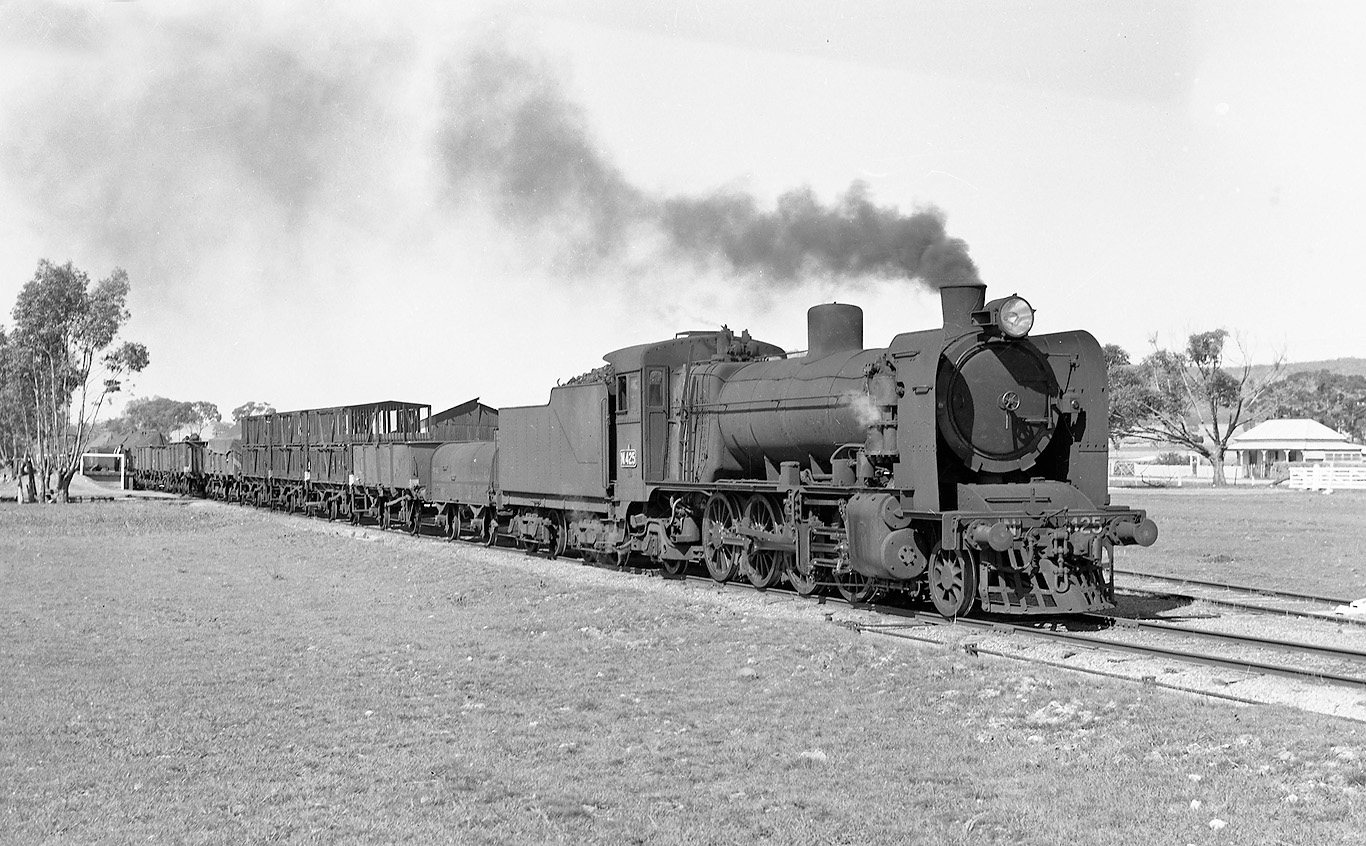
ABOVE: N 425 on the down Goroke goods at Mitre. (note water truck behind tender) Sep 12 1957. (photo courtesy Des Jowett)
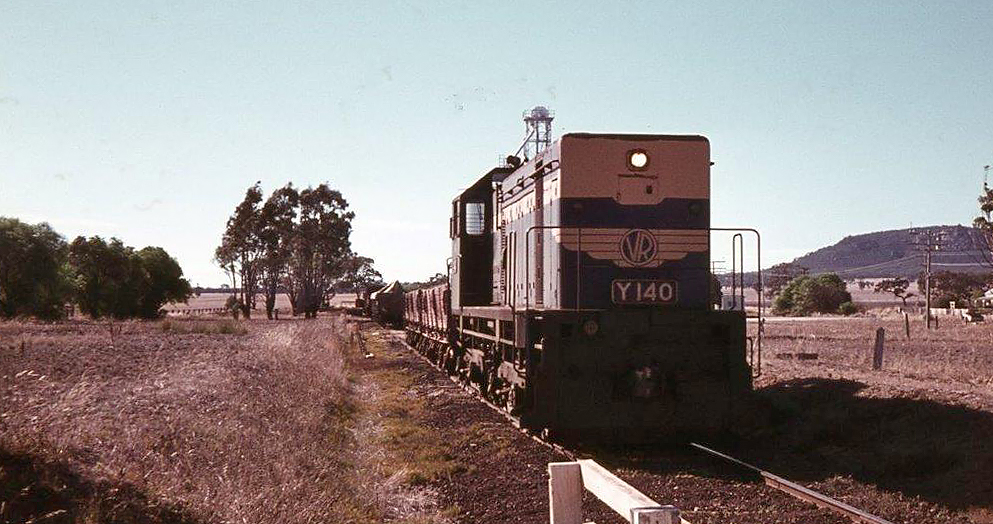
ABOVE: A down train at Mitre, March 30 1971. (photo courtesy Doug Miles)
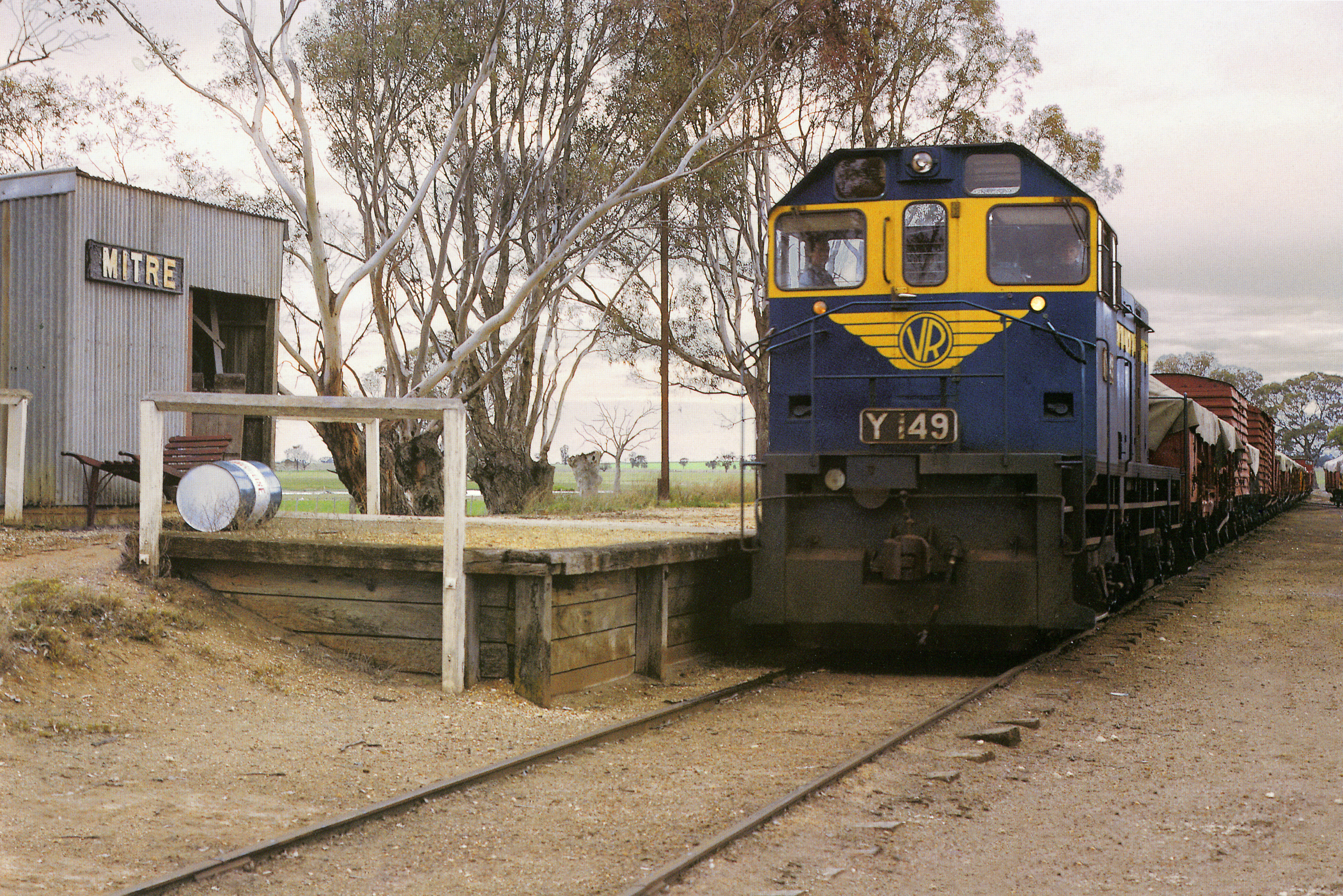
ABOVE: Y 149 heads a lengthy Carpolac bound goods at Mitre on 17 August 1971. Opened with the line in 1894 as St Mary’s, then Mitre Lake, it was renamed Mitre in 1920 after the line was deviated in 1910 to avoid the flood plain of Mitre Lake. (photo courtesy Neville Gee)
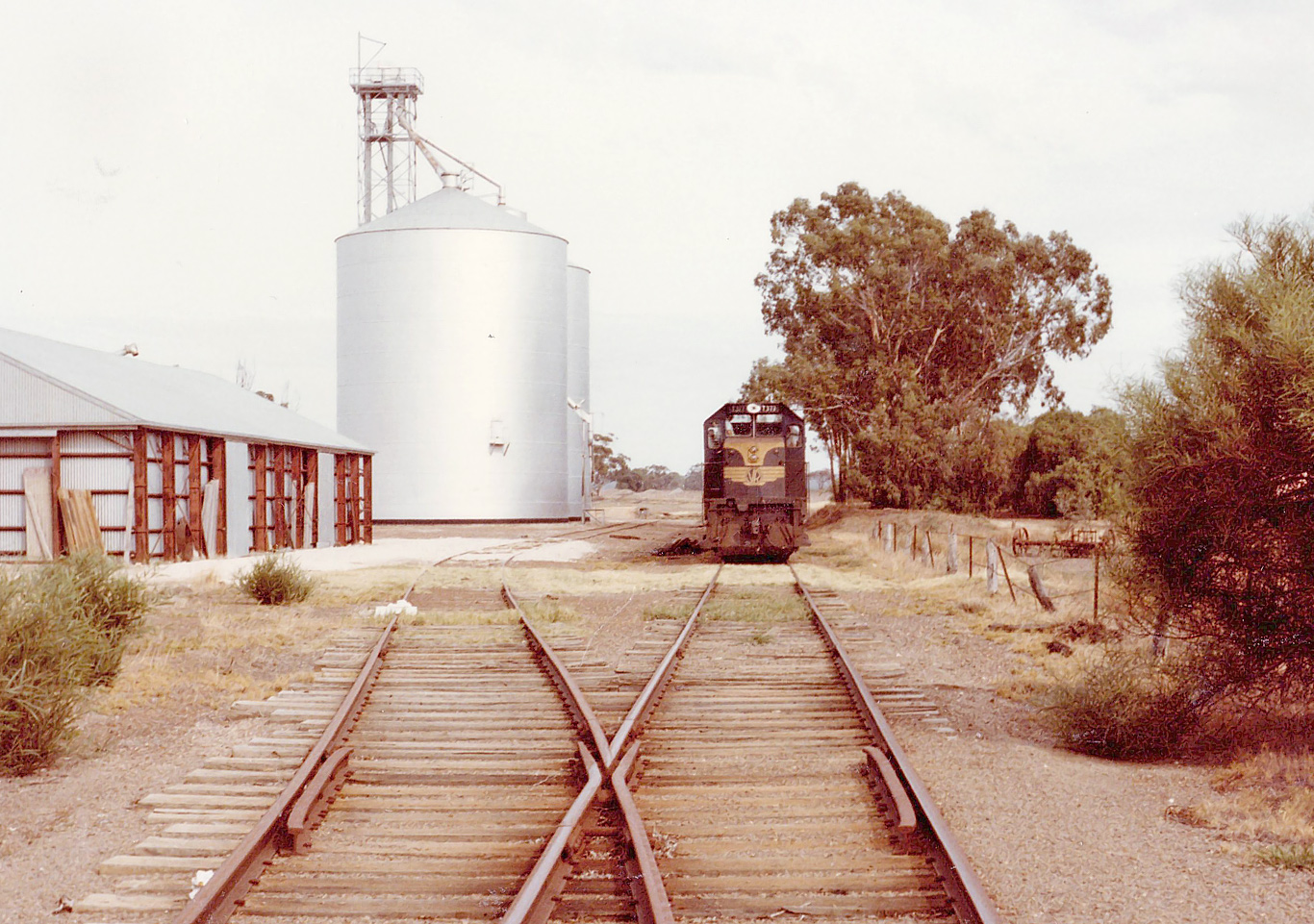
ABOVE: Looking west, an up train at Mitre, May 19 1983. (photo courtesy Bruce McLean)
Duffholme
1962 Duffholme signal arrangement diagram
1971 Duffholme signal arrangement diagram
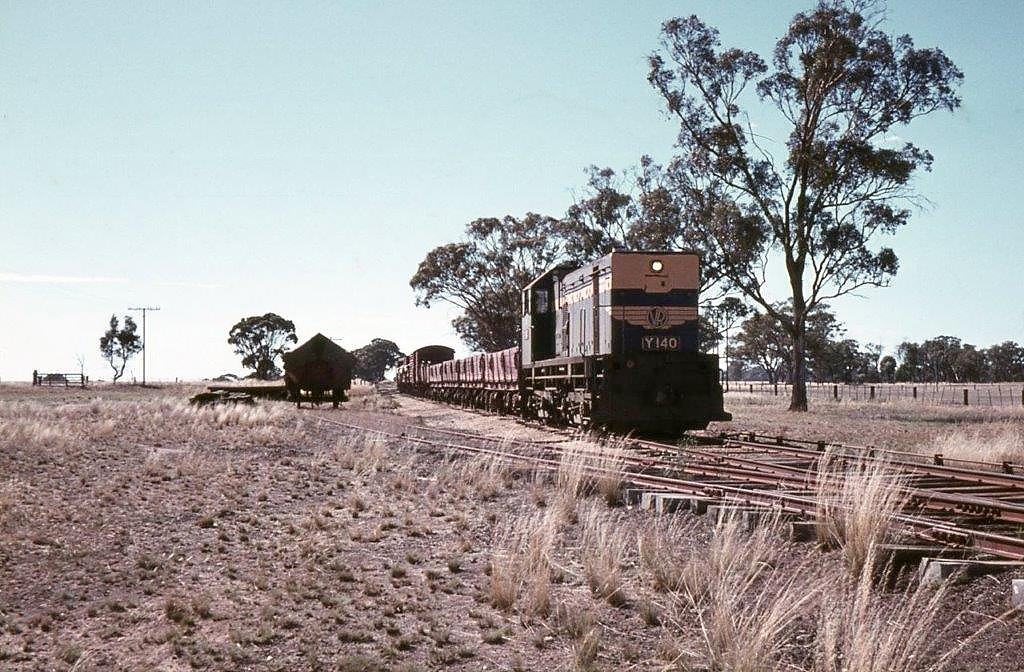
ABOVE: A down train at Duffholme, March 30 1971. (photo courtesy Doug Miles)
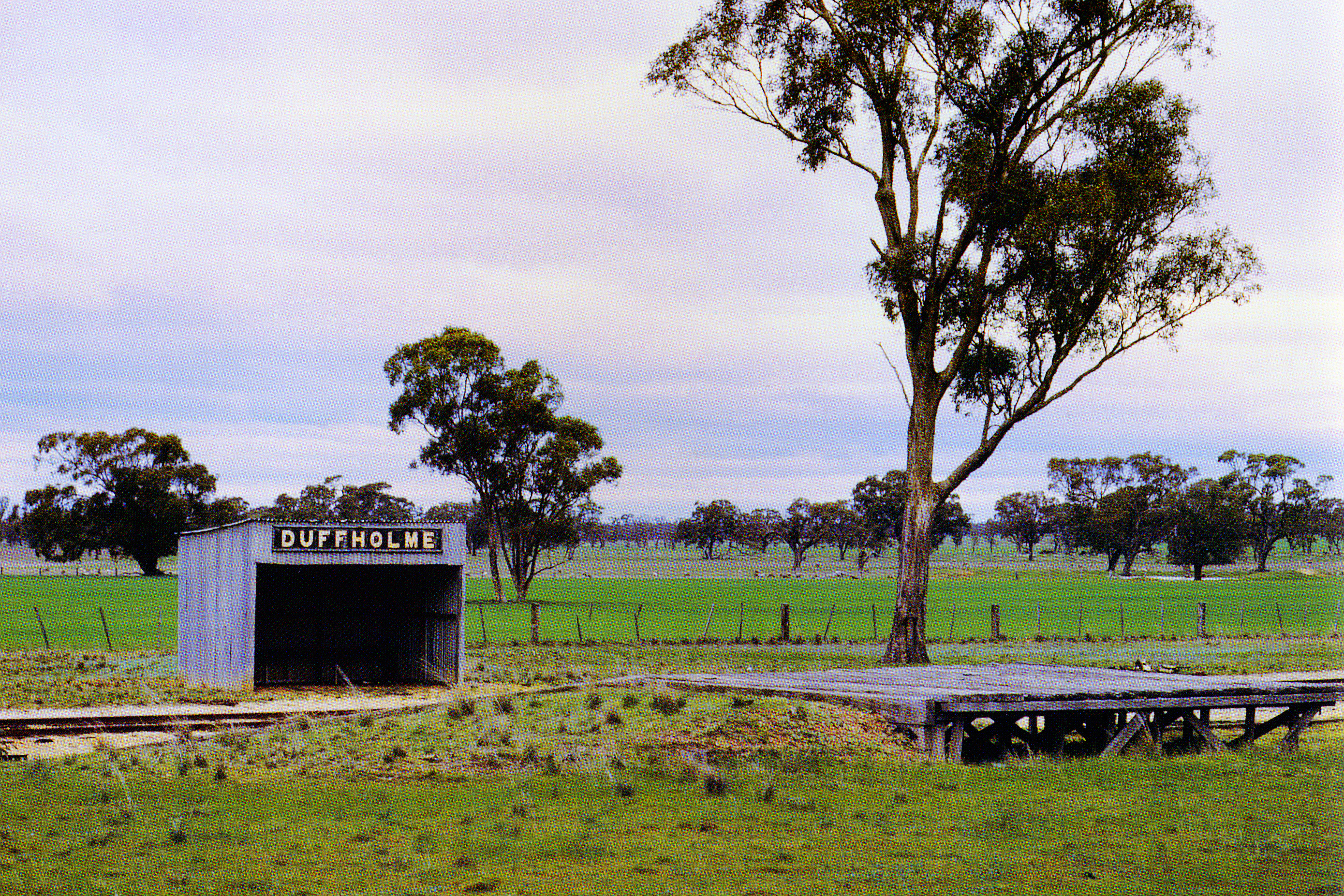
ABOVE: This small halt, originally called Nurcoung, was renamed Duffholme after Jane Duff who saved her two brothers that were lost in the bush for nine days in 1864. It was an NC (No-one in Charge) Railmotor Stopping Place. 17 August 1971. (photo courtesy Neville Gee)
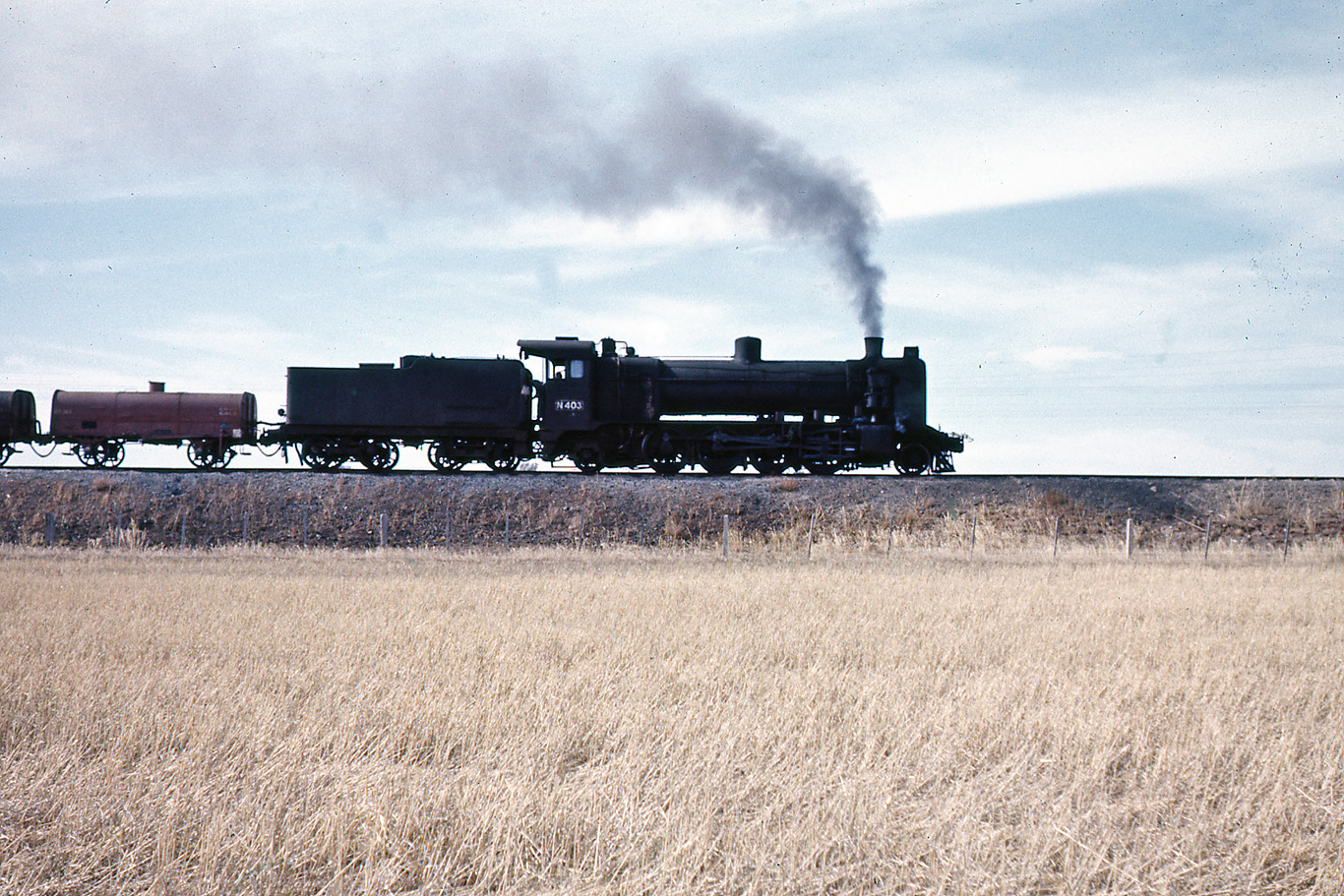
ABOVE: N 403 on an Up goods from Goroke going up Gymbowen Bank on the Up side of Gymbowen. The leading water truck is in use with the hose between tender and truck in use. The date is 6-1-1962. There must have been a problem with the water supply at Goroke to be using the water truck. (photo courtesy Des Jowett)
Gymbowen
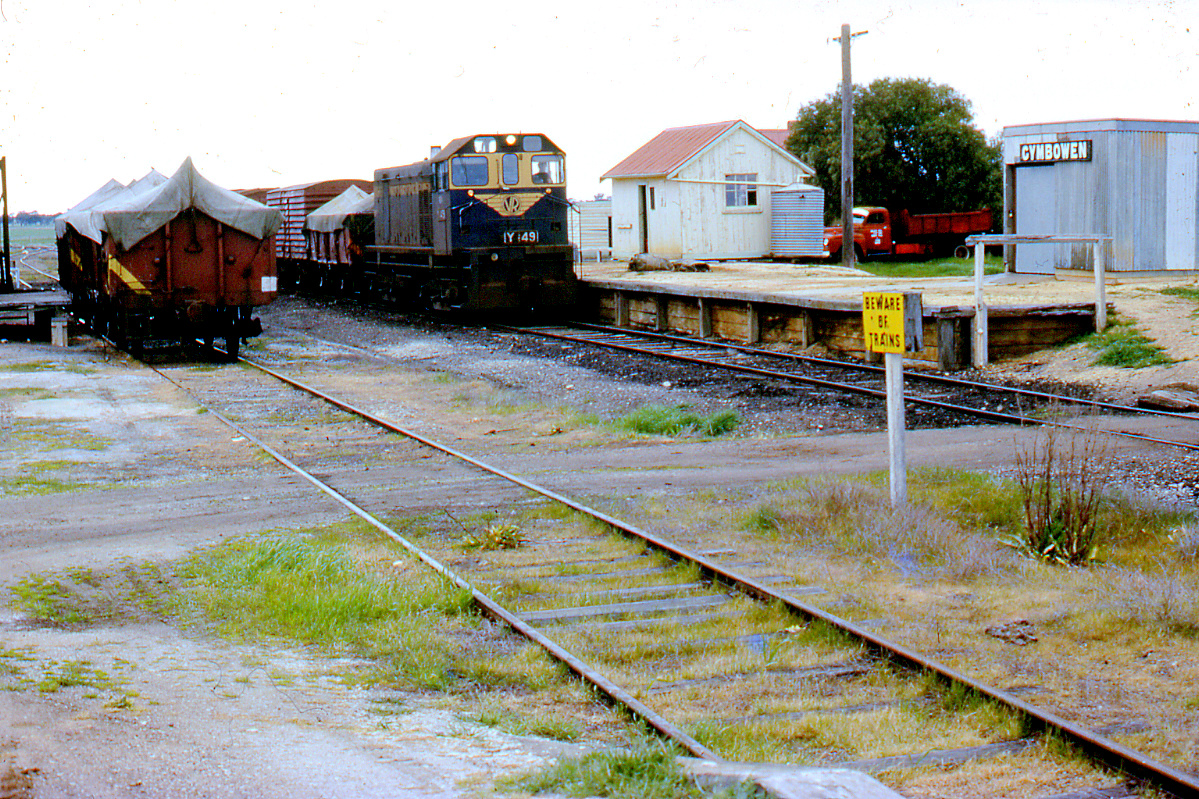
ABOVE: Y 149 coasts non-stop through Gymbowen with the Carpolac goods. 17 August 1971 (photo courtesy Neville Gee)
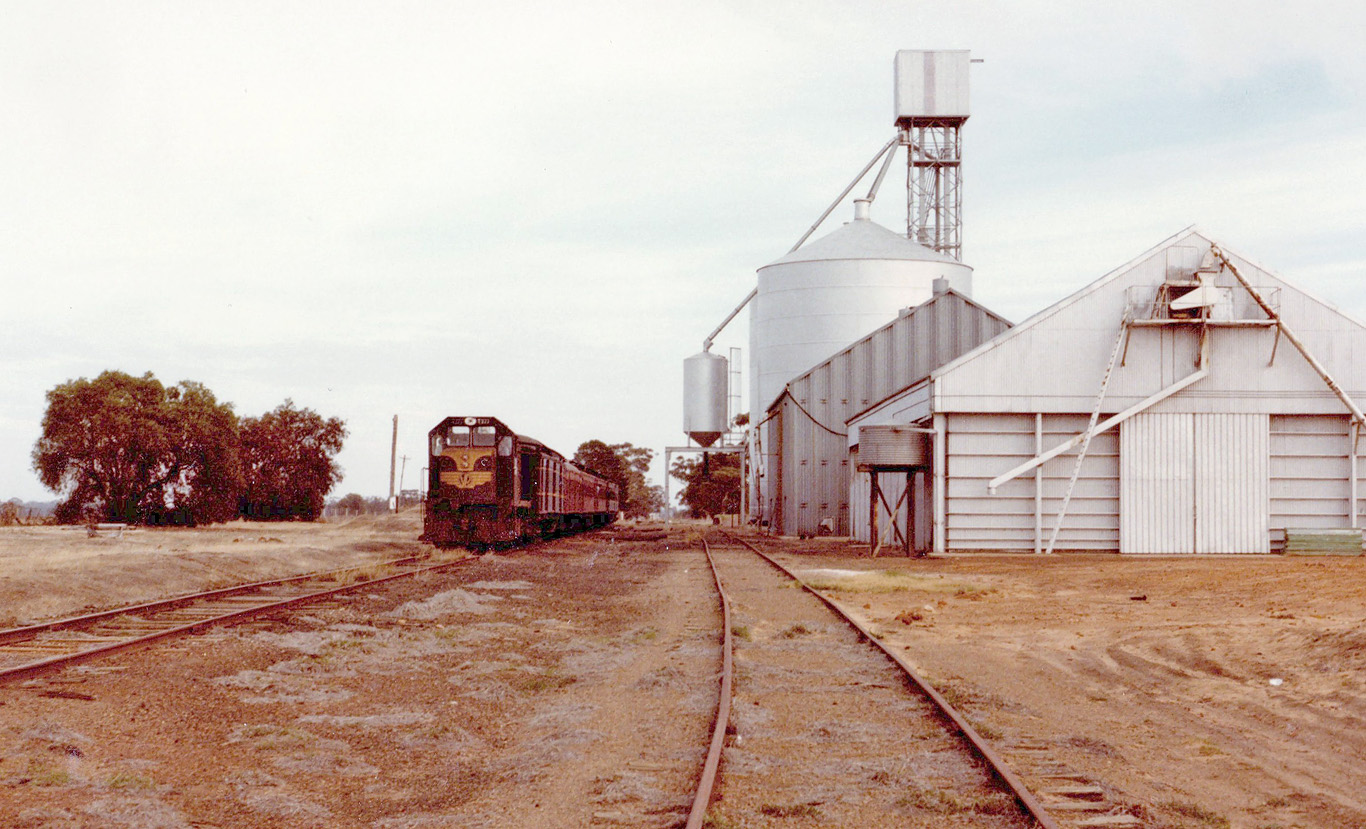
ABOVE: Gymbowen looking west, May 19 1983. (photo courtesy Bruce McLean)
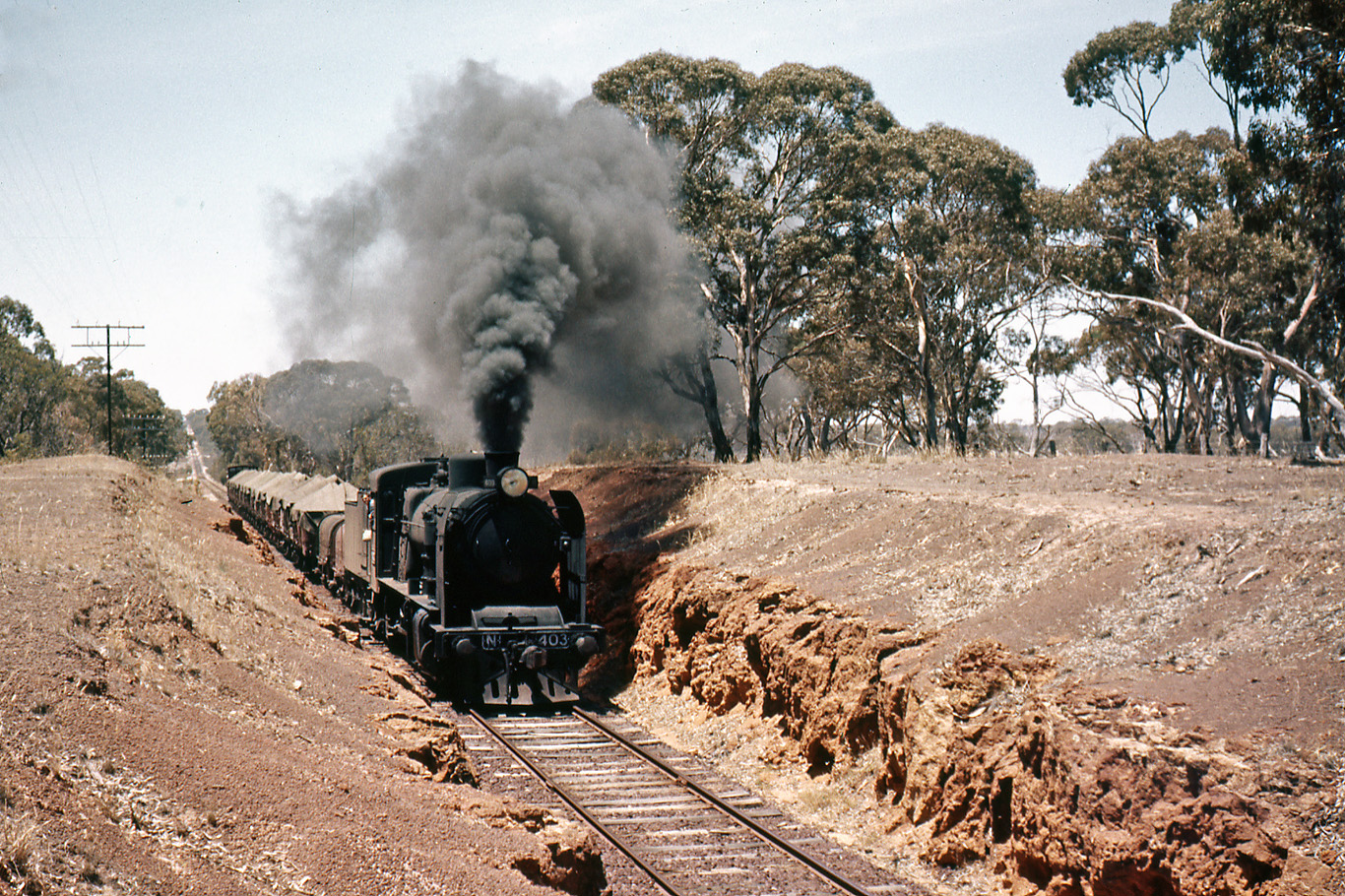
ABOVE: A down Goroke goods between Gymbowen and Goroke. The Rail Motor Stopping Place No 70 was at the bottom of the grade. When the Goroke line was opened, locomotive water was available here at water tanks pumped from a spring in an adjacent property, Jan 6 1962. (photo courtesy Des Jowett)
Goroke
1966 Goroke signal arrangement diagram
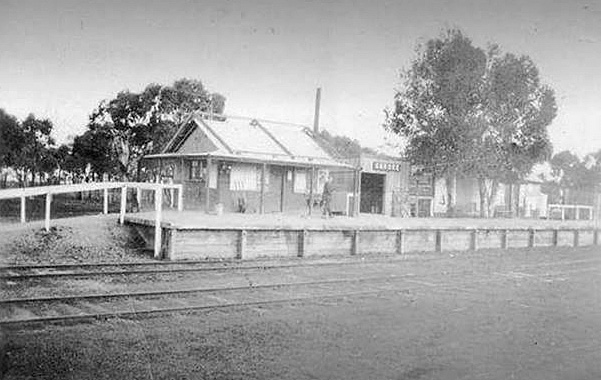
ABOVE: This photo shows the original Goroke station building that was replaced when the station building from Sandford (Casterton line) was moved there in 1955. Photo date unknown.
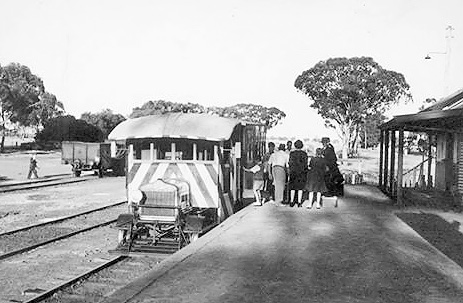
ABOVE: A circa 1945 photo with an AEC railmotor at Goroke. The building shown is once again the original that was replaced in 1955.
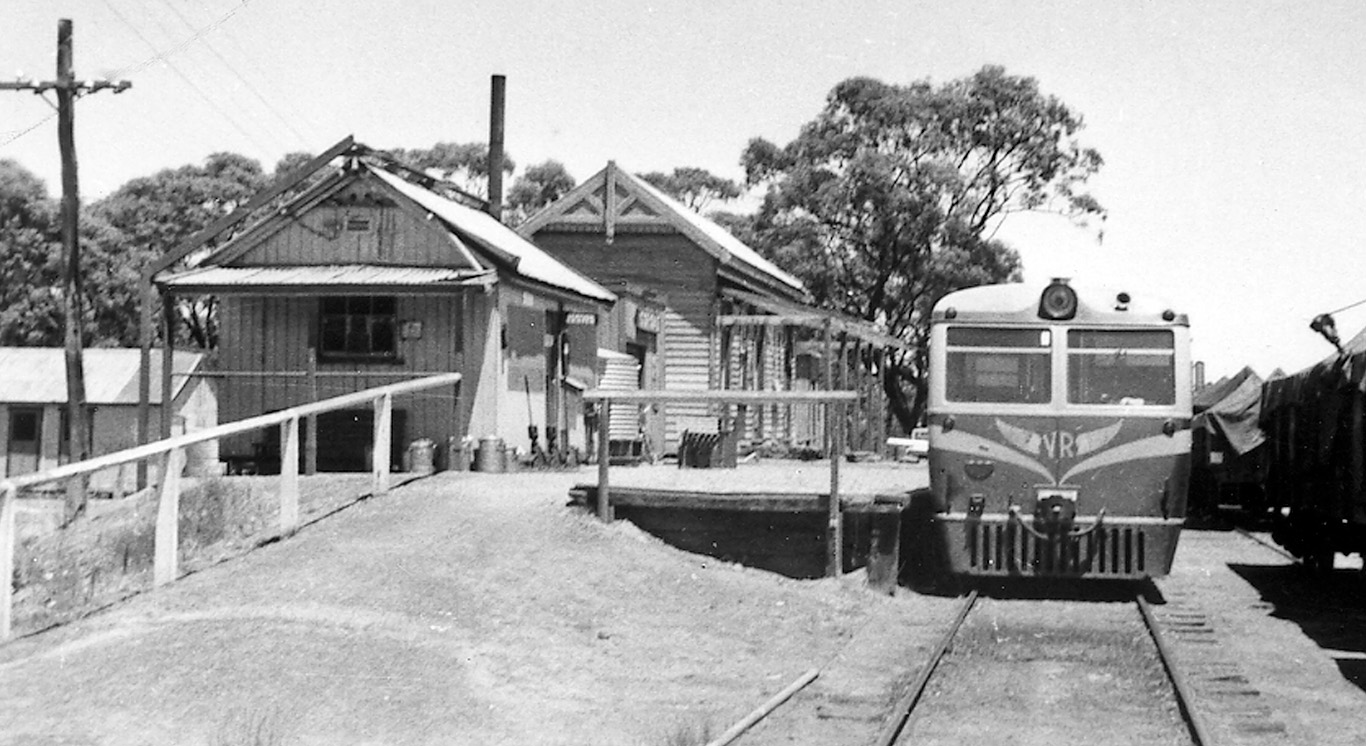
ABOVE; The new Goroke station building which was moved from Sandford looks like it is almost ready for business at which time the portable will be removed. A Walker railcar waits for departure for the run to Horsham. Jan 7 1956. (photo courtesy Des Jowett)
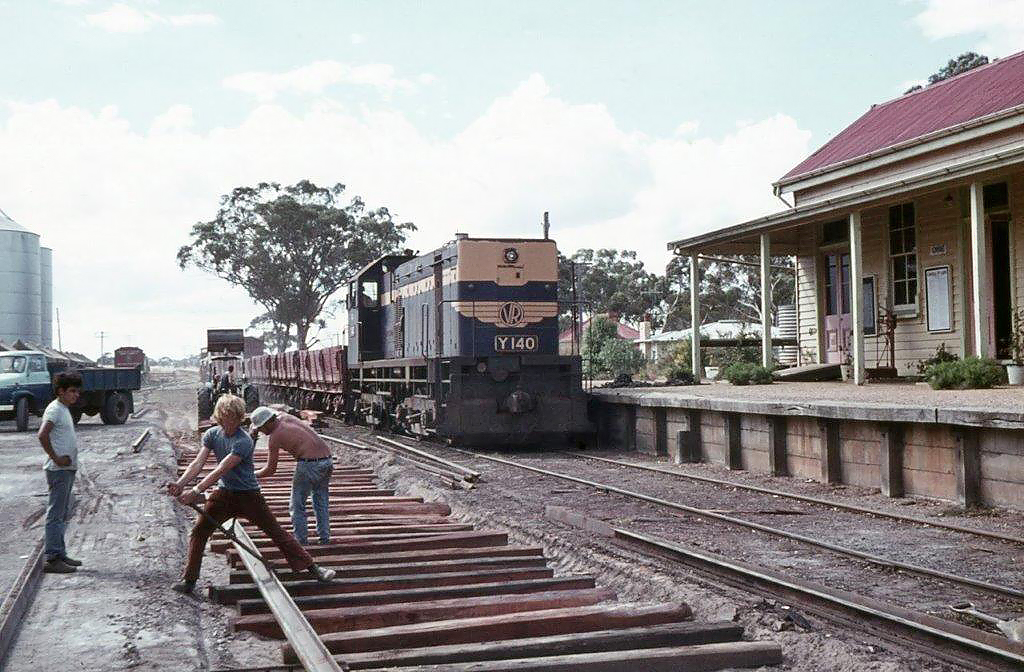
ABOVE: The local gang is hard at work at Goroke. It looks like they are relaying and/or re-sleepering No. 2 road as a down train watches on. March 30 1971. (photo courtesy Doug Miles)
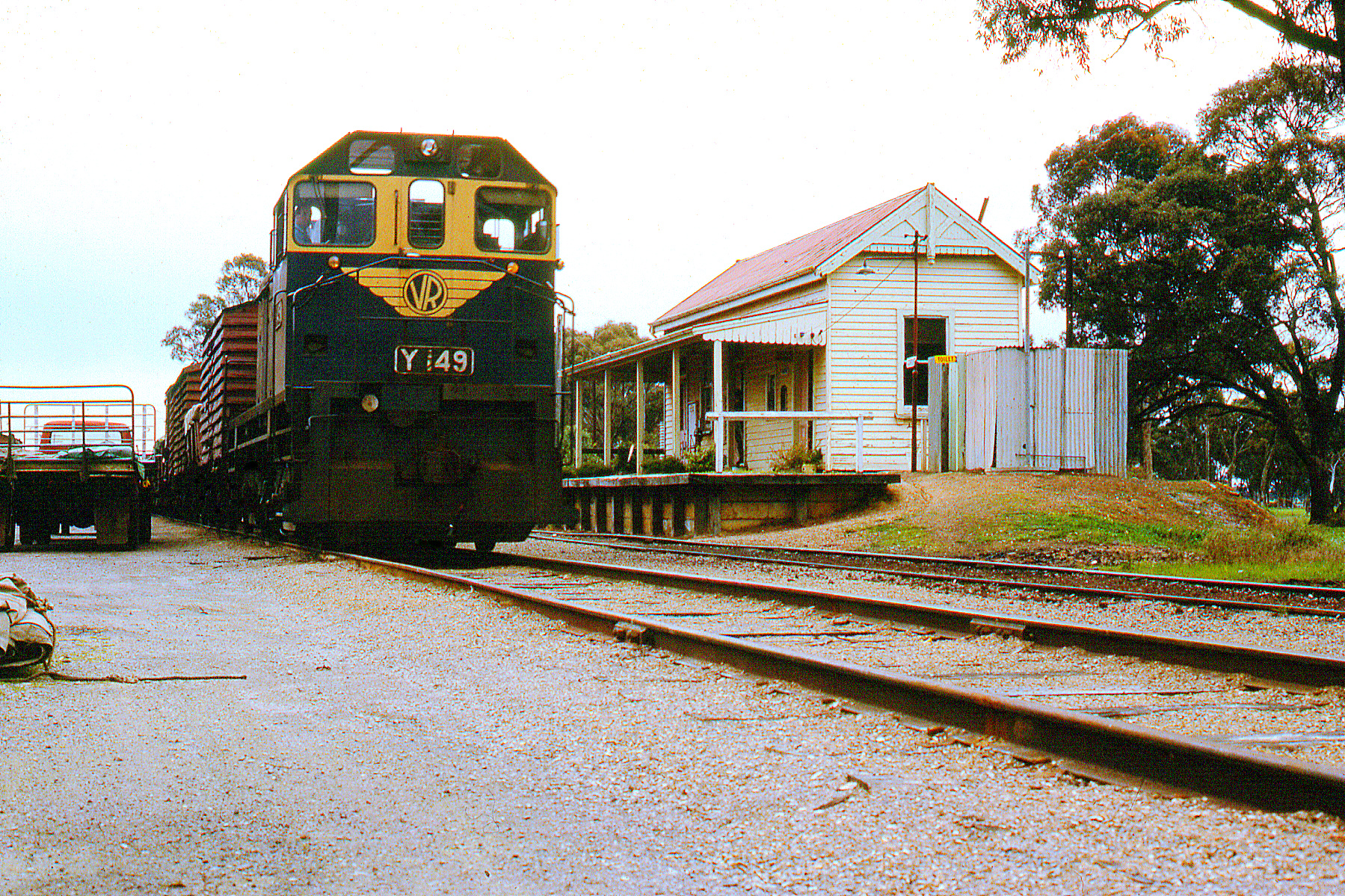
ABOVE: Unloading of wagons directly onto road trucks at Goroke has commenced soon after arrival of the goods train from Horsham. 17 August 1971. (photo courtesy Neville Gee)
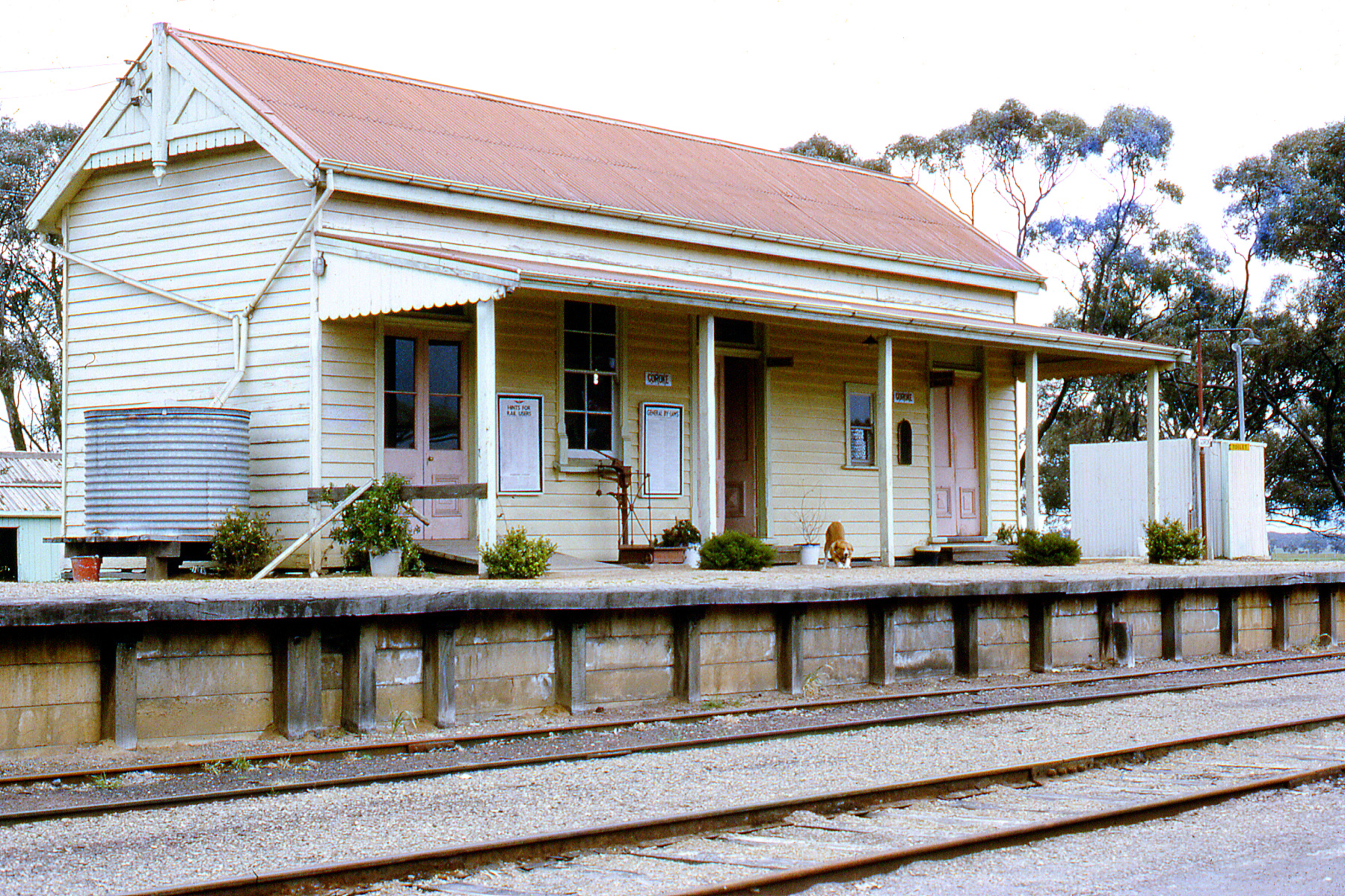
ABOVE: Goroke Station and the SM’s dog. This is the building from Sandford on the Casterton line. 17 August 1971. (photo courtesy Neville Gee)
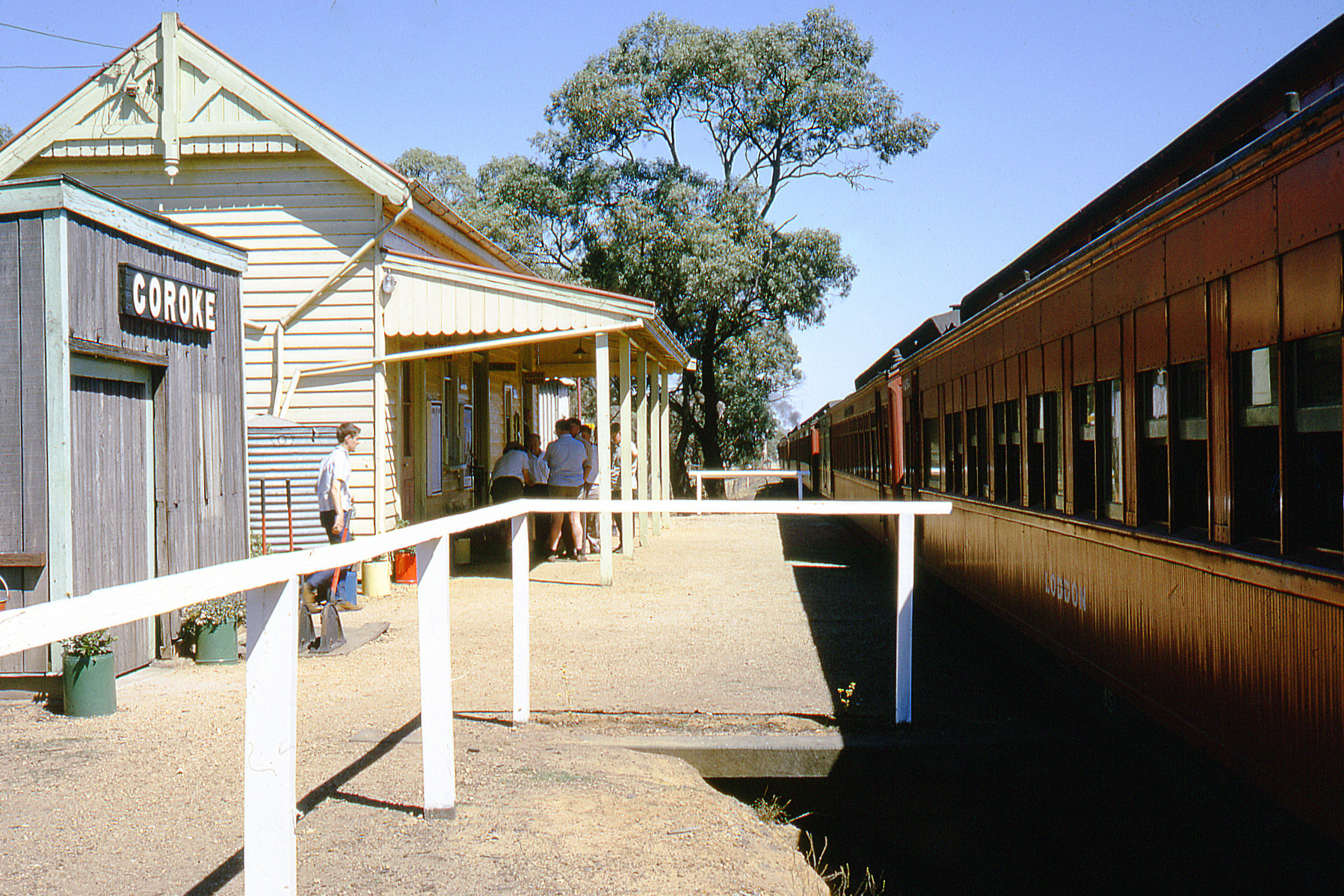
ABOVE: In March 1967 the well maintained station facilities at Goroke remained much as they were when the rail motor service ceased running in 1965. (photo courtesy Neville Gee)
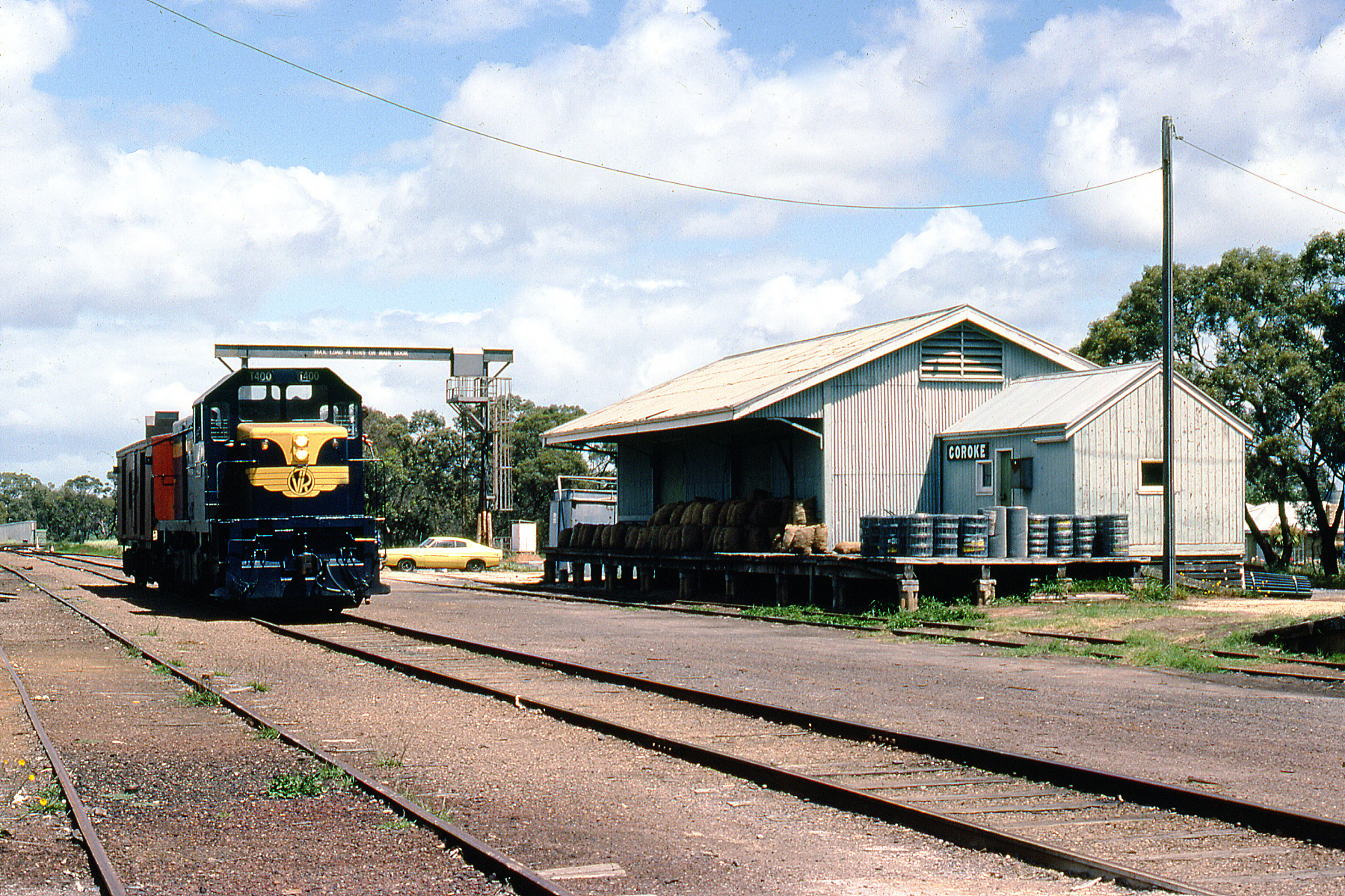
ABOVE: The station building having been relocated to a local farm by 1981, all operations were transferred to the goods platform where a small office was located. T 400 has just arrived Bona from Carpolac. 3 November 1981 (photo courtesy Neville Gee)
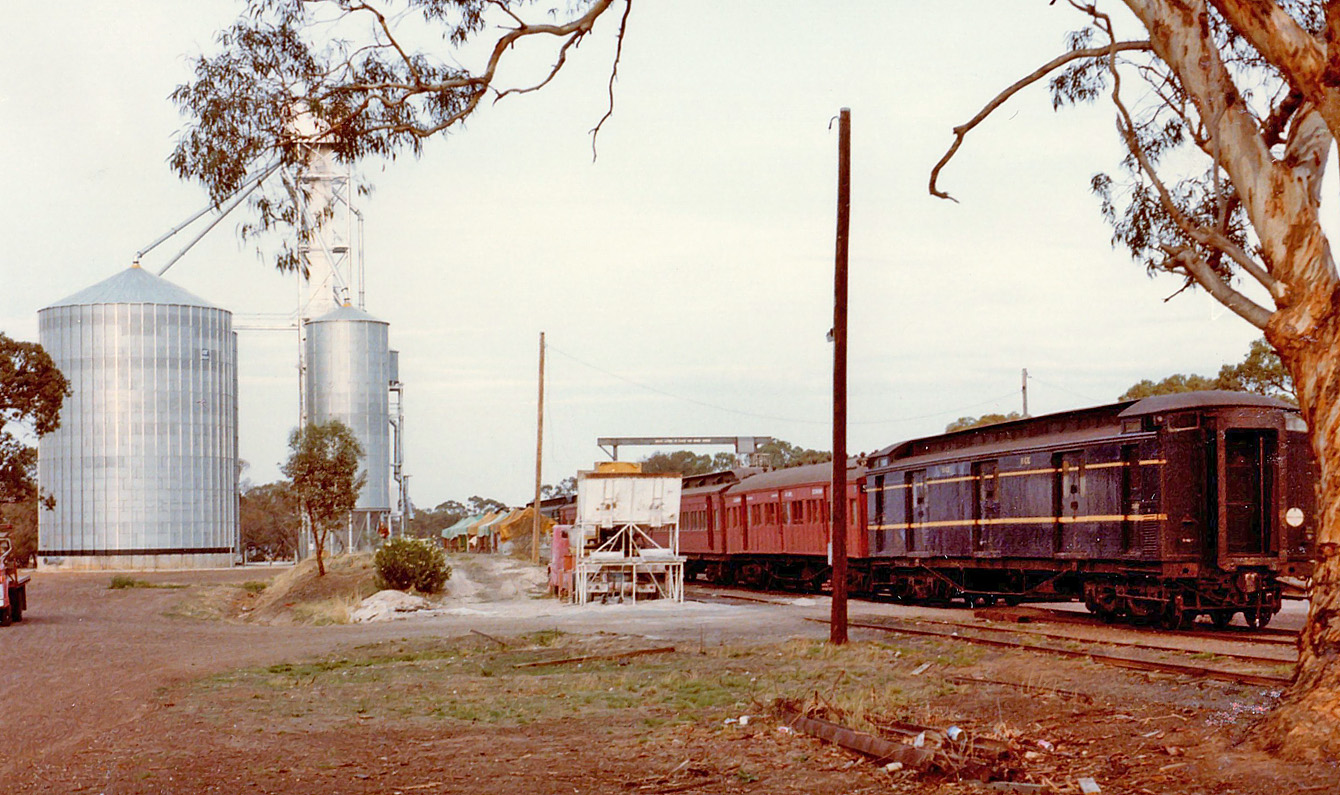
ABOVE: Goroke looking west with the AREA tour train, May 19 1983. (photo courtesy Bruce McLean)
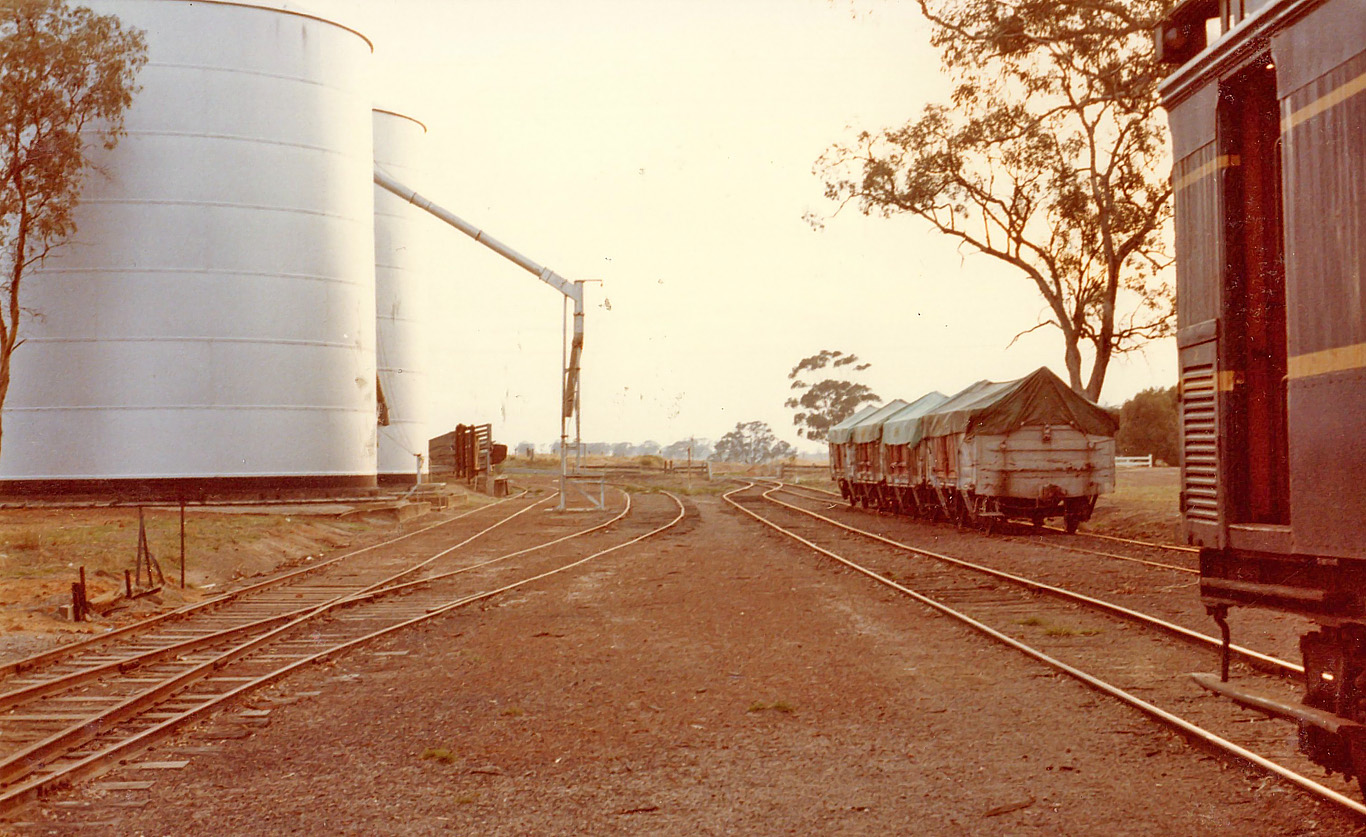
ABOVE: Goroke looking east, back towards Horsham. May 19 1983. (photo courtesy Bruce McLean)
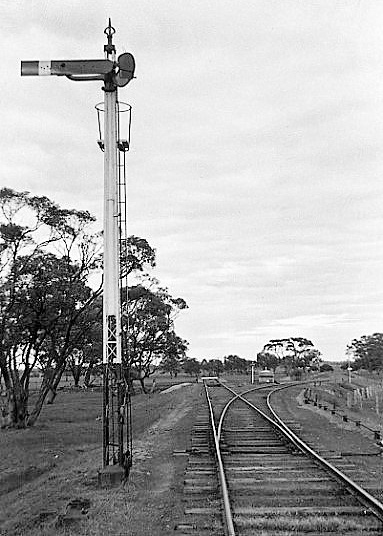
ABOVE: Goroke was the terminus of the line from 1894 until 1927. During that time the end of the line was the ashpit and turntable track, seen on the left. When construction started on the Carpolac line they just installed a turnout for the line to Carpolac off the turntable track. The home could only be placed to proceed when the points were laying to the right, to Carpolac. Moves to the turntable did not need the home signal. Sep 25 1958. This signal was abolished Aug 8 1967. In 1971 the down end of the yard was substantially rearranged as shown in the signal diagram at the top of the page. (photo courtesy Weston Langford)
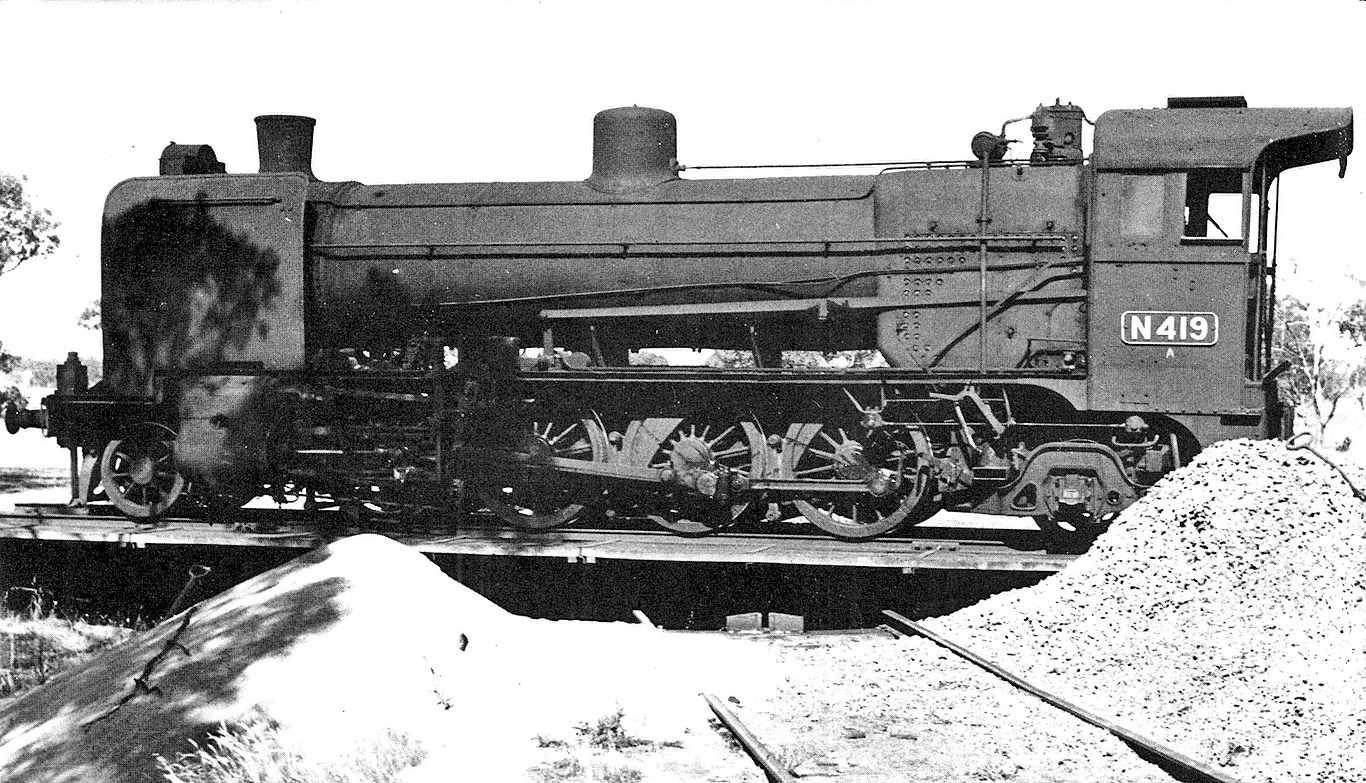
ABOVE & BELOW: When the line to Goroke was opened in 1894 there were no turning facilities at the terminus. The engine and crews formerly at Noradjuha were transferred to Natimuk making the Noradjuha turntable redundant. The line from East Natimuk to Noradjuha was to close on 2-8-1897 but local objections resulted in a reduced train service to three days per week. In 1900 the 50 foot turntable from Noradjuha was removed to Goroke, later requiring J, K and N class to be cut and turned (the engine and tender divided and turned separately) as they were too long for a 50 foot turntable. According to instructions in the 1953 General Appendix (p150-1) it required two empty roads to enable the engine to run around the tender so that the tender was always coupled to the engine for the move to and from the turntable. This was near impossible to have at Goroke as the train arrived in No 1 road and loading always occupied No. 2 and 3 roads. When the train arrived at Goroke the loco and water truck (until loco water was available at Goroke around 1960 a water truck was attached at Natimuk to all down trains) ran to the ash pit on the turntable road to enable the tender to be uncoupled from the engine. The water hoses and safety chains were uncoupled and a short steel bar pushed the drawbar pin up into the cab where it was removed on K and N class 400 to 429. J and N class 450-499 had a steel plate that slid away to enable the drawbar pin to drop out. Oil burners were not divided due to the oil feed pipe and tank steam heat pipe. The engine unit then pushed the tender and water truck back into No1 road, then ran forward to be turned after which it ran into No 2 road. The tender and water truck then ran by gravity onto the turntable for turning controlled by the water truck hand brake. The engine then came to the turntable and attached the safety chains to the tender to haul it back over the ashpit where the drawgear pin was replaced and water hoses re-coupled. On 11-4-1958 a new 53 foot turntable came into use enabling J and K class to be turned but N class still frequently ran to Goroke requiring to be cut and turned but using any four wheel wagon after the water truck was discontinued. Oil burning N class always ran tender first to Goroke to enable the water truck to be used on the Up journey. The Engine Requirement time for a cut and turn was 50 minutes (done properly)! Finally the 53 foot turntable was sold for removal in December 1969. Photos date Nov 27 1957. (photos and caption by Des Jowett)
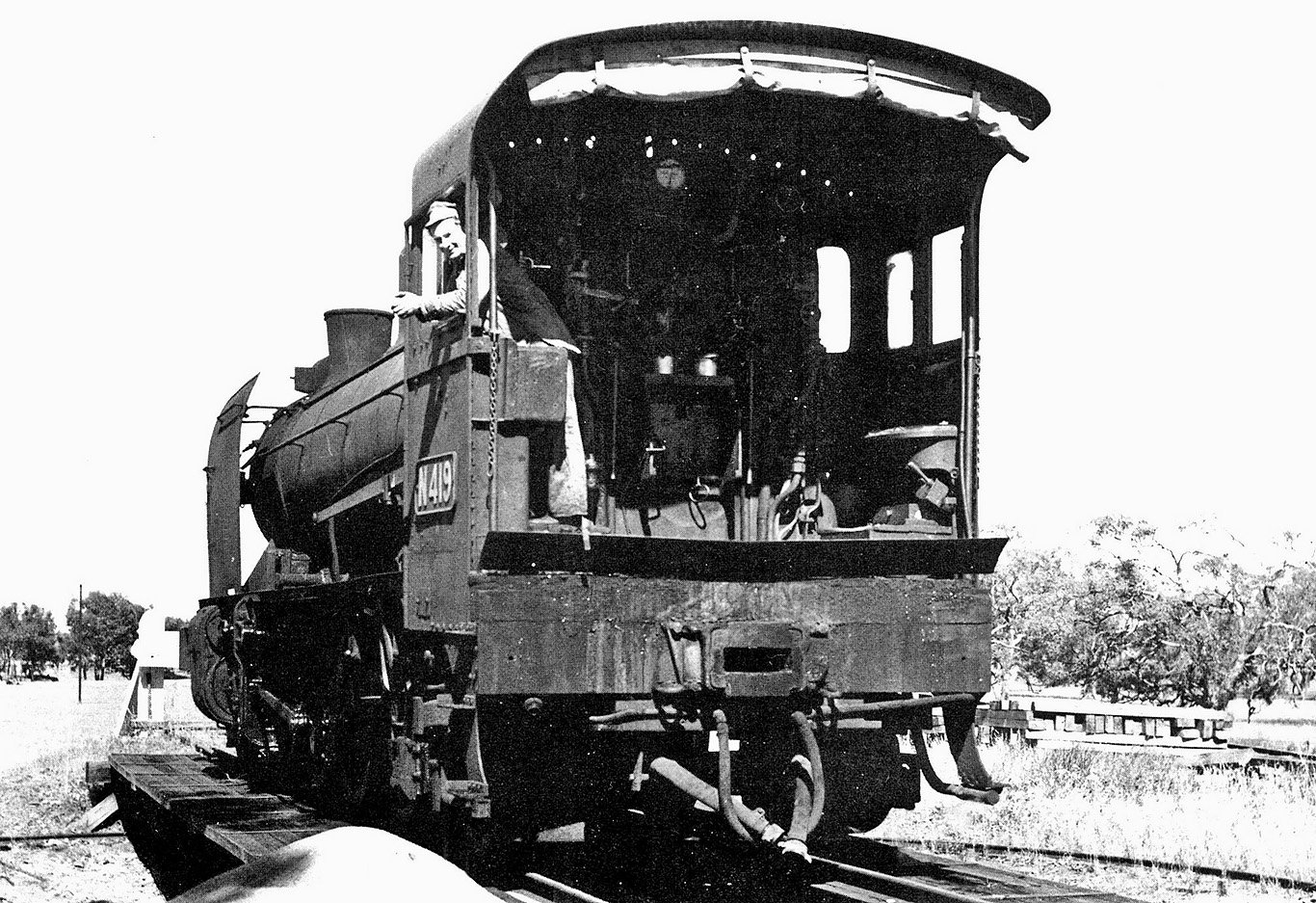
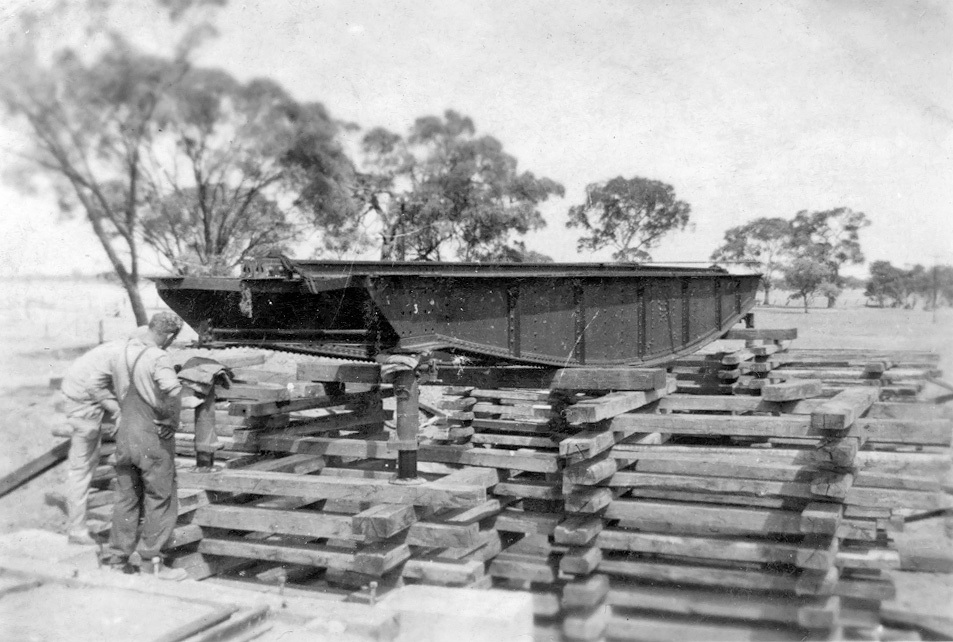
ABOVE: The 53 foot turntable being installed at Goroke which eliminated the need to split locos to turn them. This turntable came into service April 11 1958. Photo courtesy the late Bob Dunn who was works foreman at Dimboola at the time.
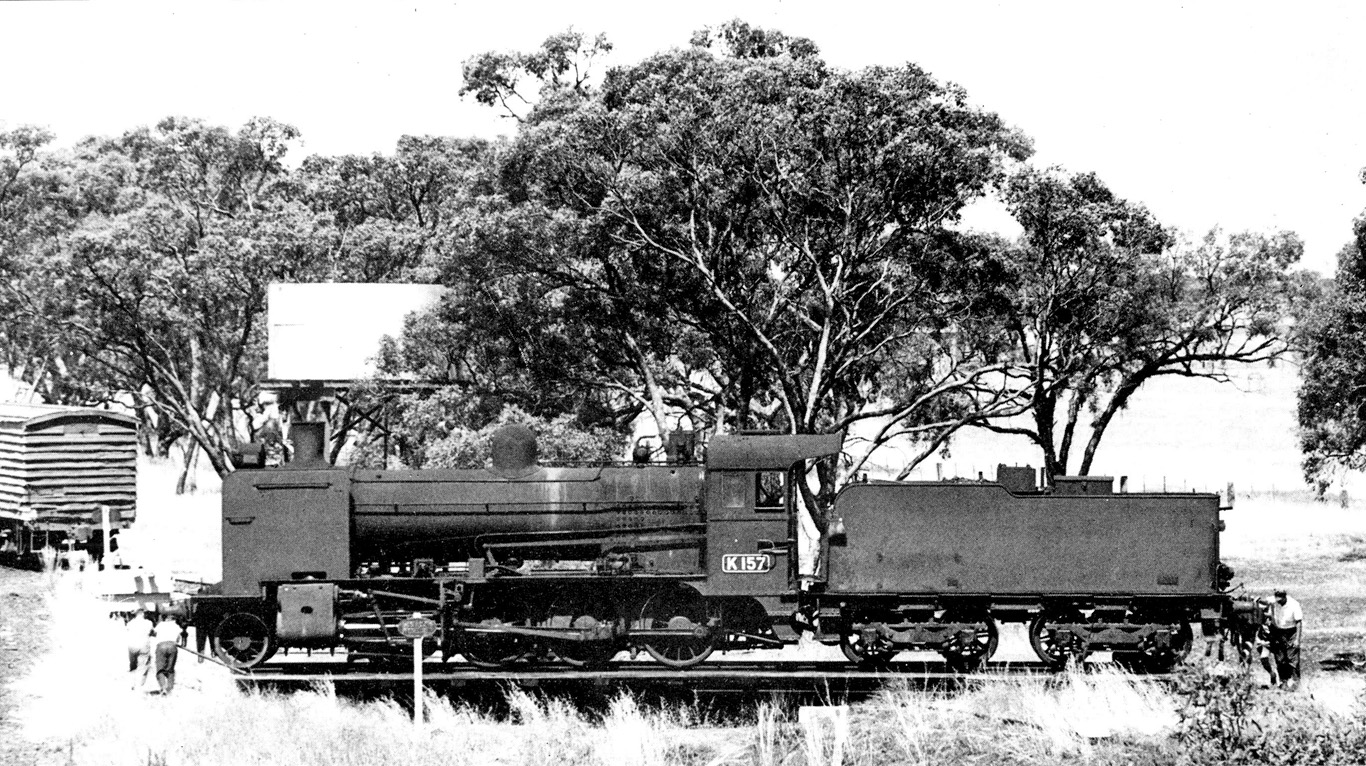
ABOVE: K 157 on the 53 foot Goroke turntable, Jan 2 1969. (photo courtesy Robert Carlisle)
MORTAT
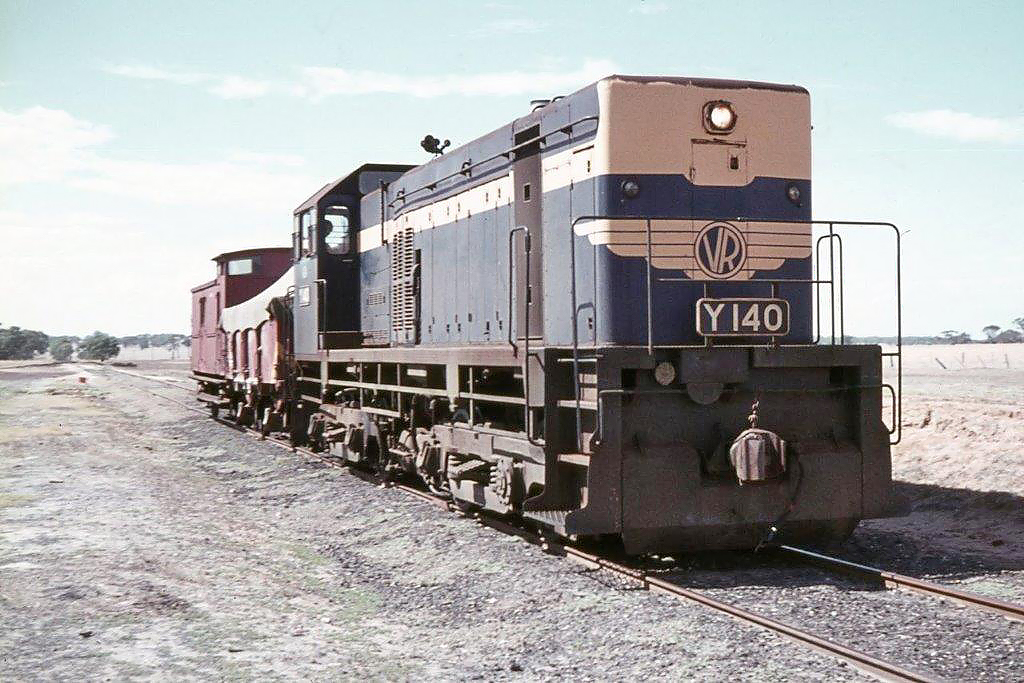
ABOVE: Sadly for our photograher the journey ended at Mortat where Y 140 dropped off the single GY and returned towards Horsham bona (loco and van) March 30 1971. (photo courtesy Doug Miles)
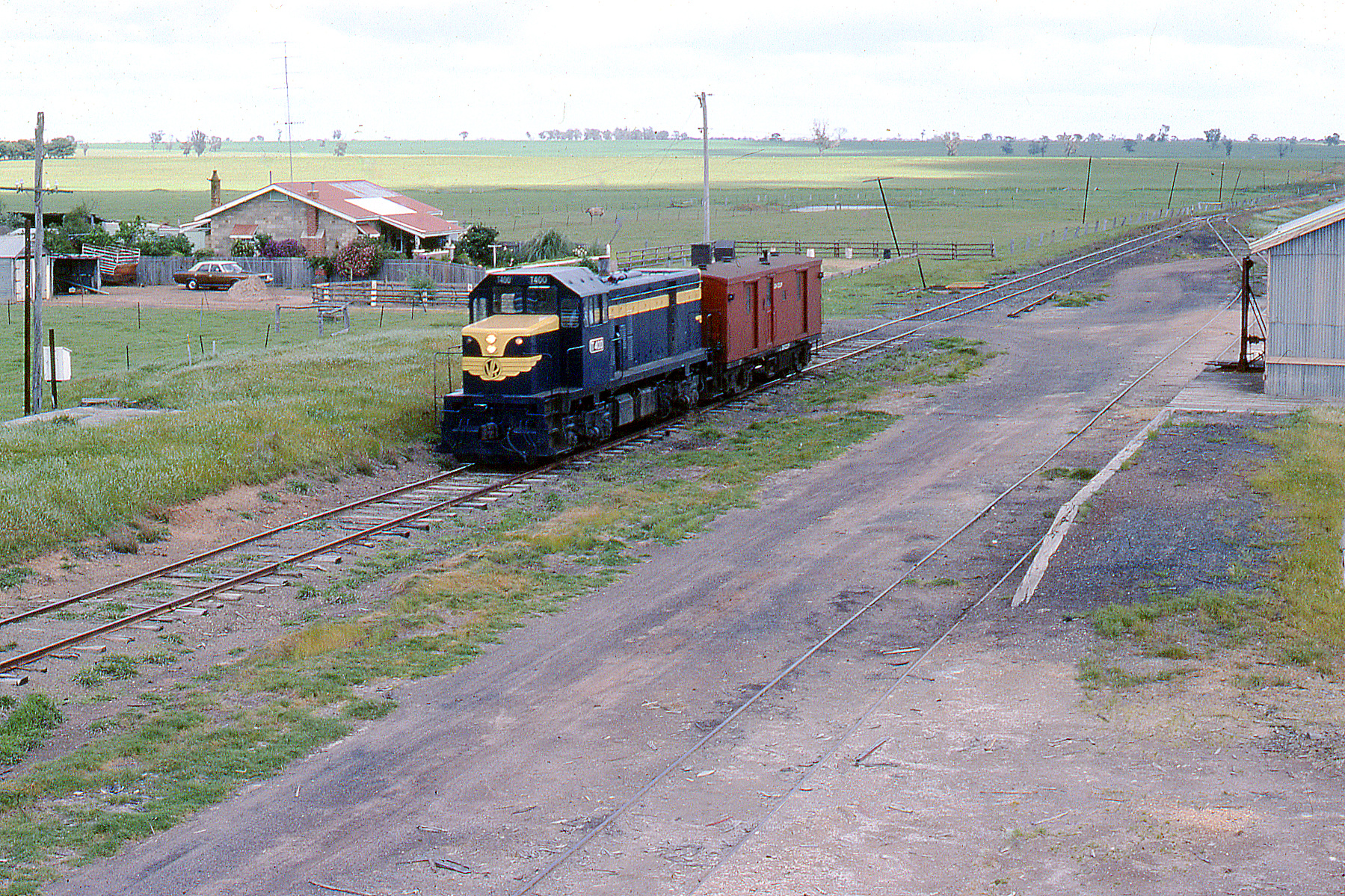
ABOVE: On 3 November 1981 T 400 passes through Mortat with only the concrete base of the shed remaining on the cut back platform. The DR was the only occupied building locally and the siding looks to have had little recent use. (photo courtesy Neville Gee)
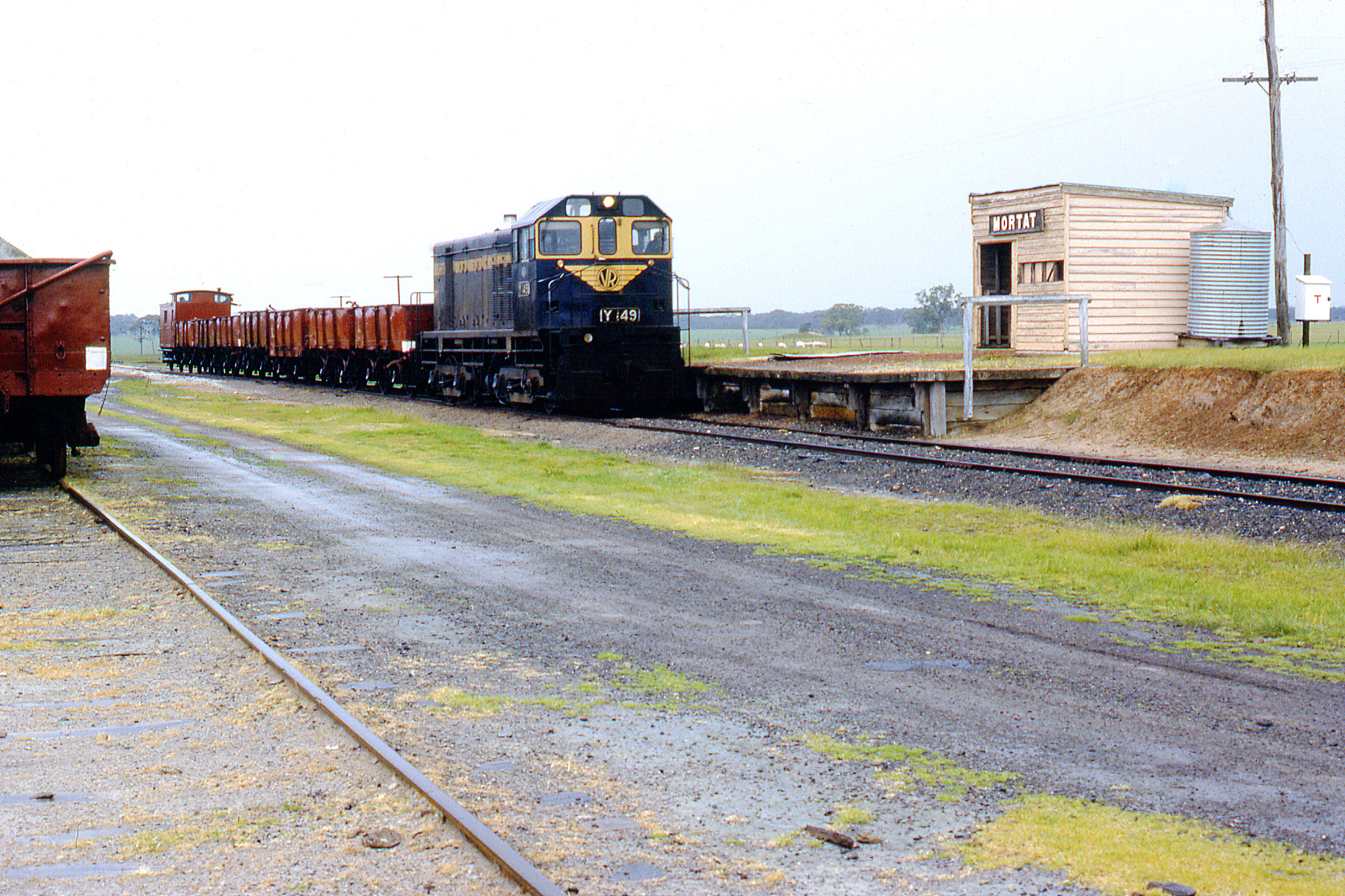
ABOVE: With a load of just seven empty wagons plus Z van Y 149 passes the passenger platform at Mortat on a wet winters day. 17 August 1971 (photo courtesy Neville Gee)
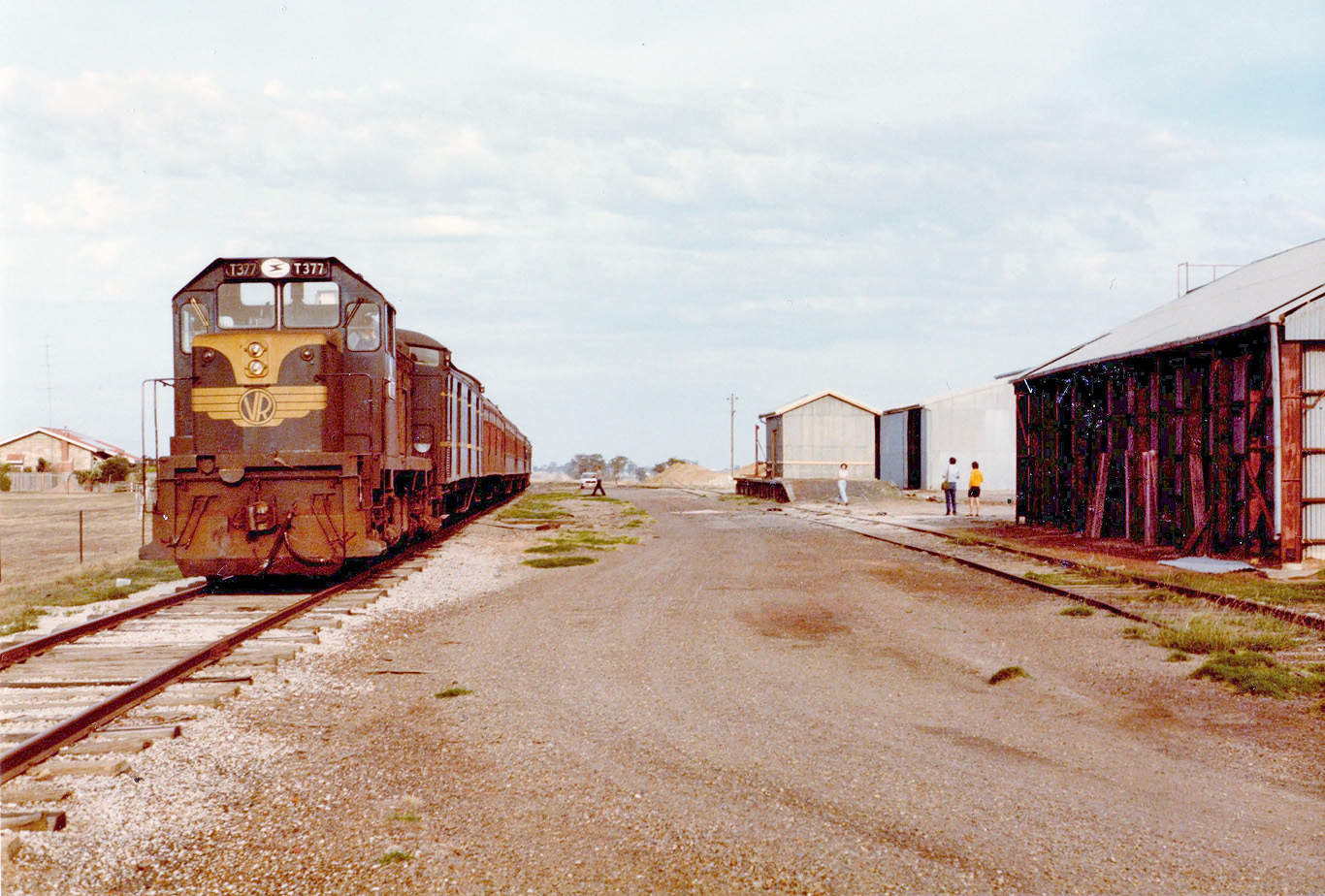
ABOVE: Mortat looking west, May 19 1983. (photo courtesy Bruce McLean)
Carpolac
1940 Carpolac signal arrangement diagram
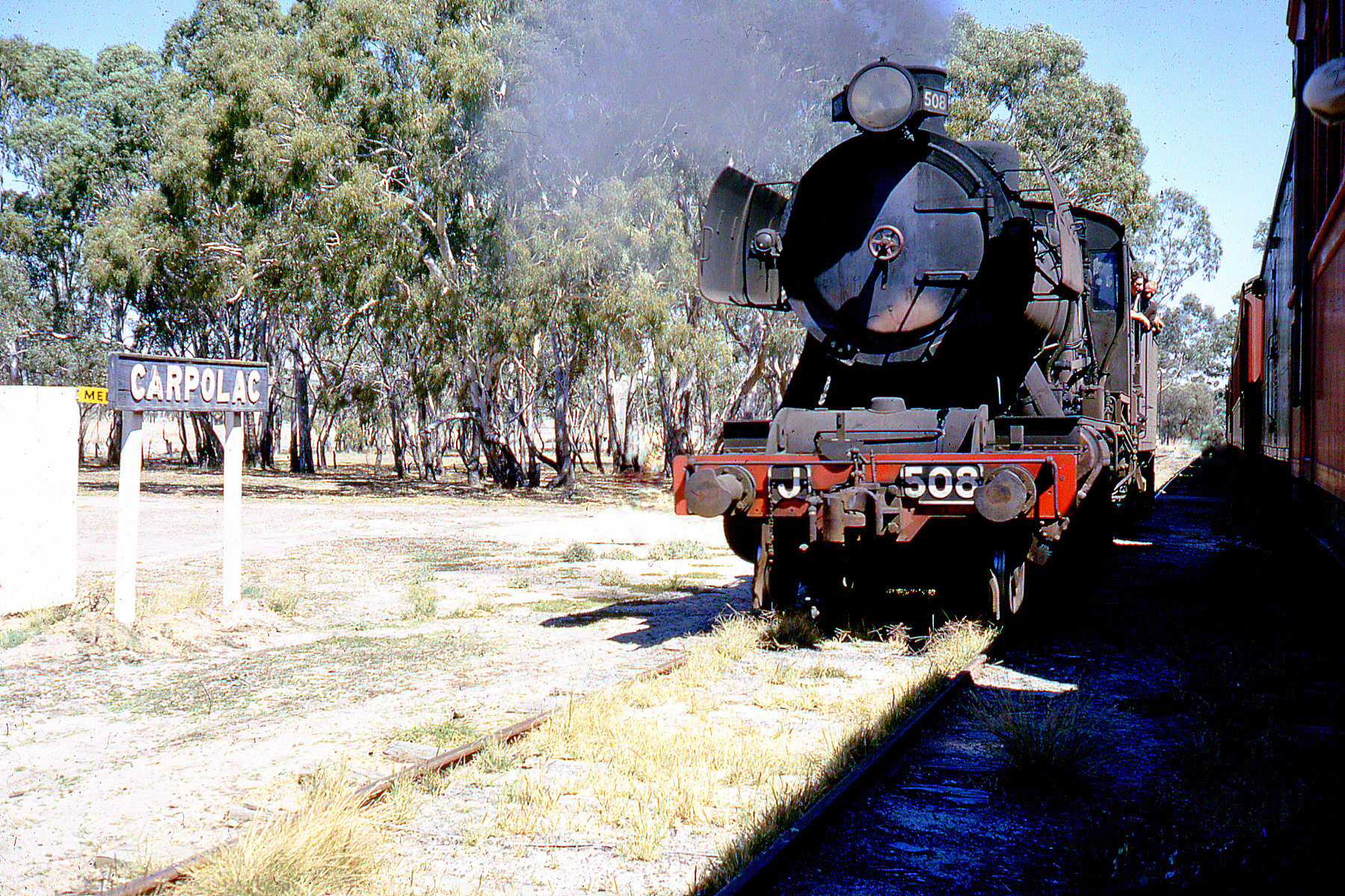
ABOVE: J 508 runs around its train at Carpolac 13 March 1967. A passenger platform was never built here which was unusual for a rail terminus. A proposed extension for the line into South Australia came to nothing and the line was closed in 1986 after a relatively short life of 59 years. (photo courtesy Neville Gee)
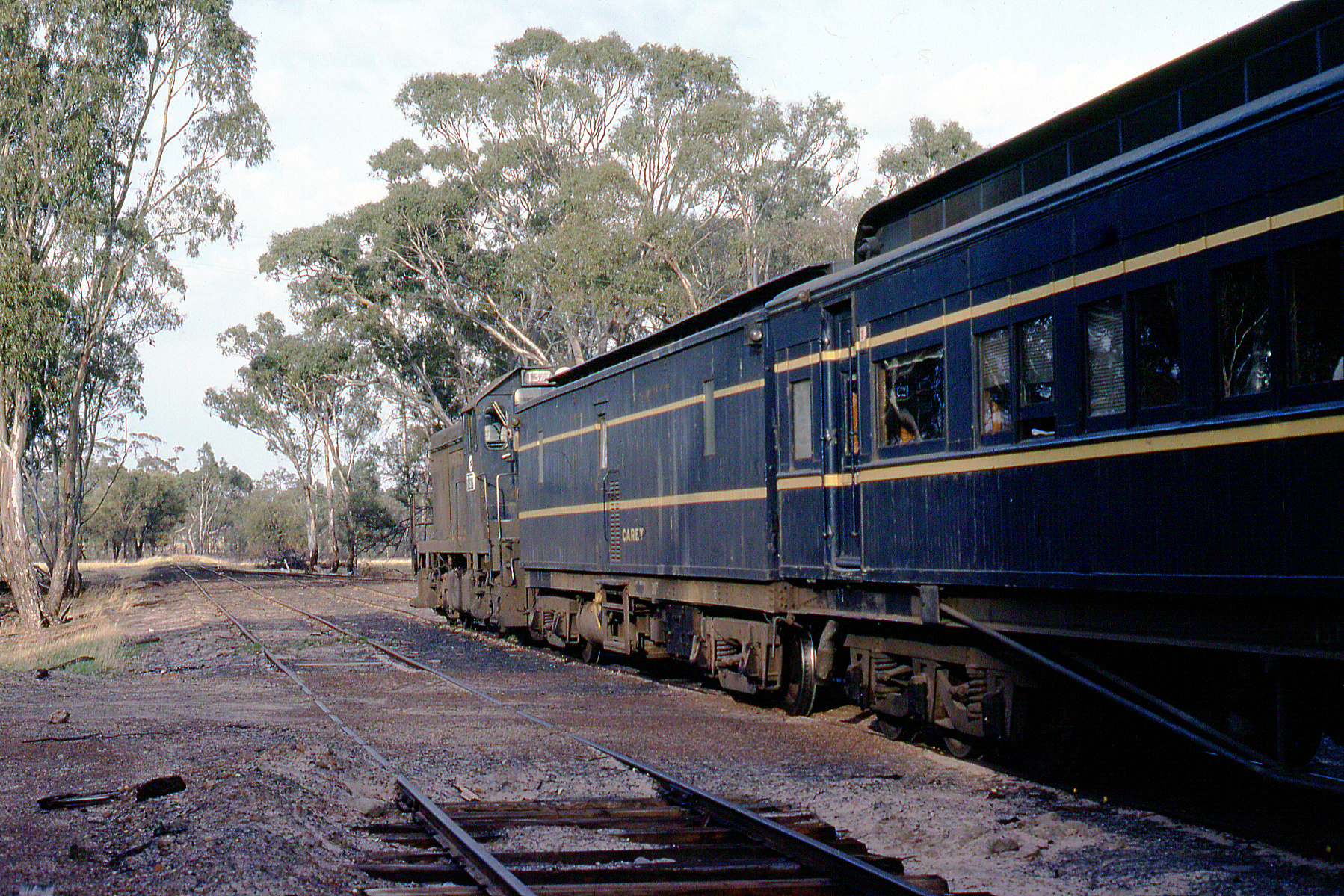
ABOVE: Facing towards the buffers T 377 has arrived at Carpolac with a tour special. May 1983. (photo courtesy Neville Gee)
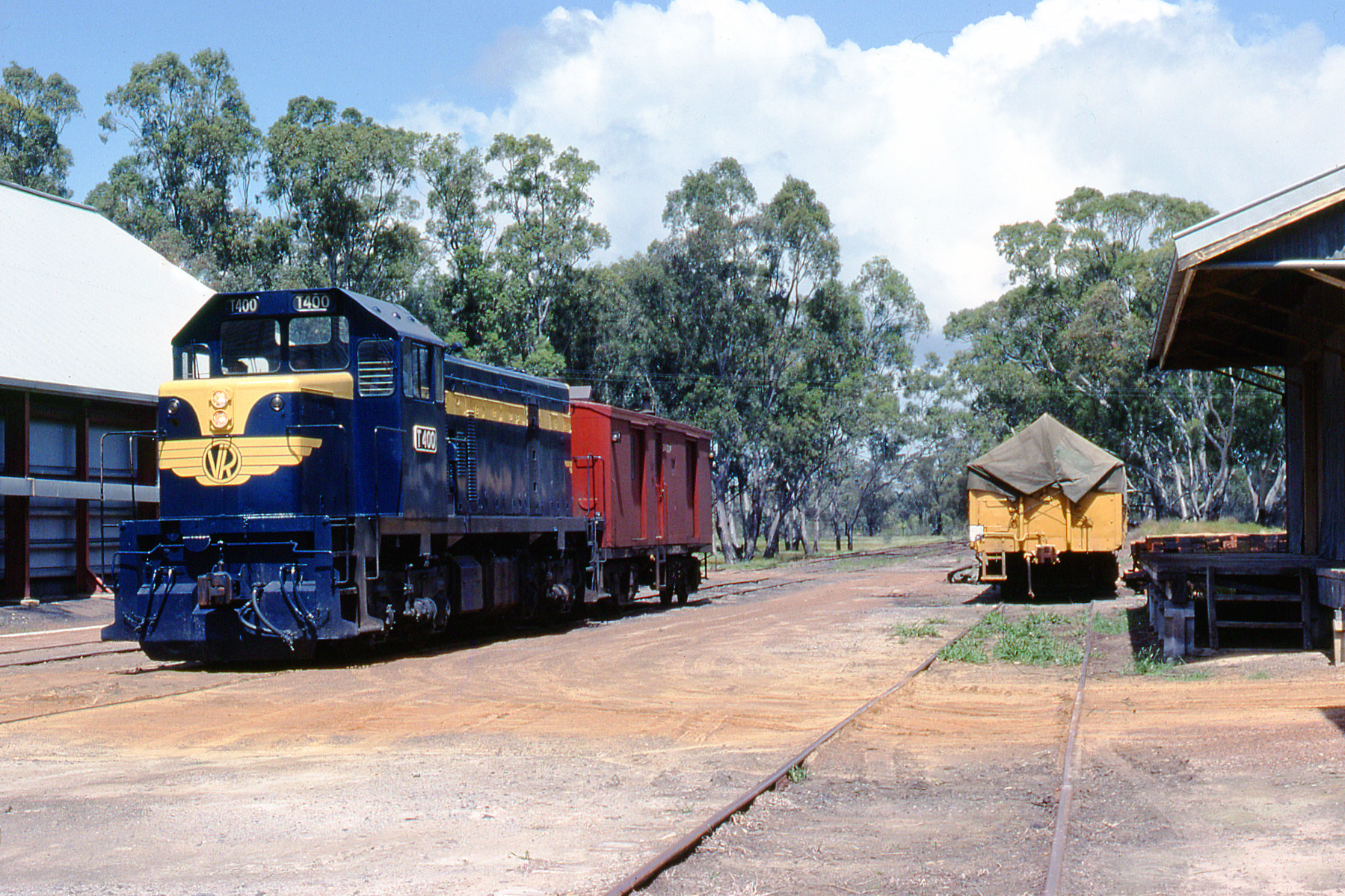
ABOVE: A very clean T 400 is ready to depart Carpolac, running Bona to Goroke. 3 November 1981. (photo courtesy Neville Gee)
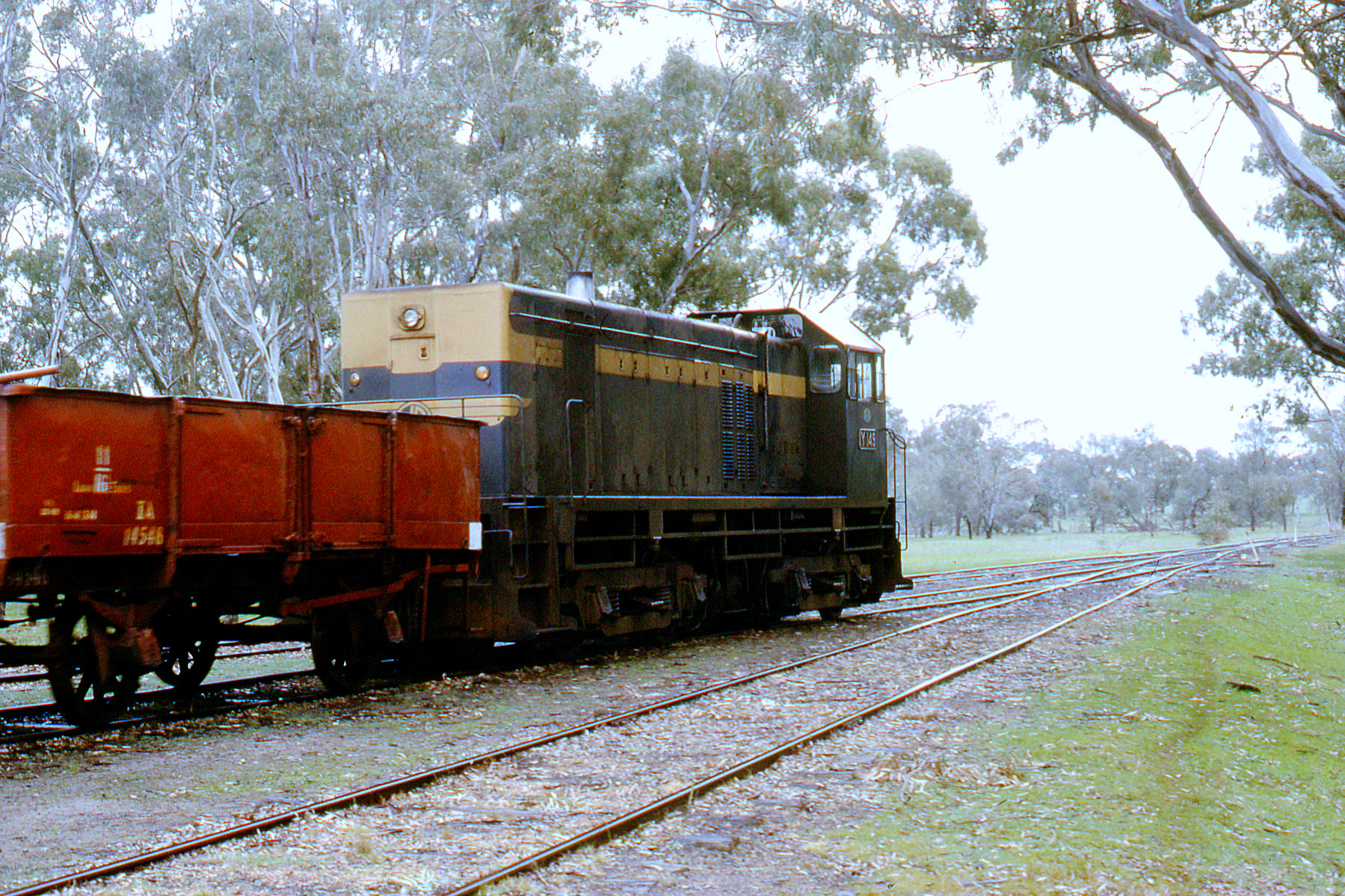
ABOVE: Y 149 has just arrived at the down end of the yard at Carpolac with this view facing towards the dead end. 17 August 1971. (photo courtesy Neville Gee)
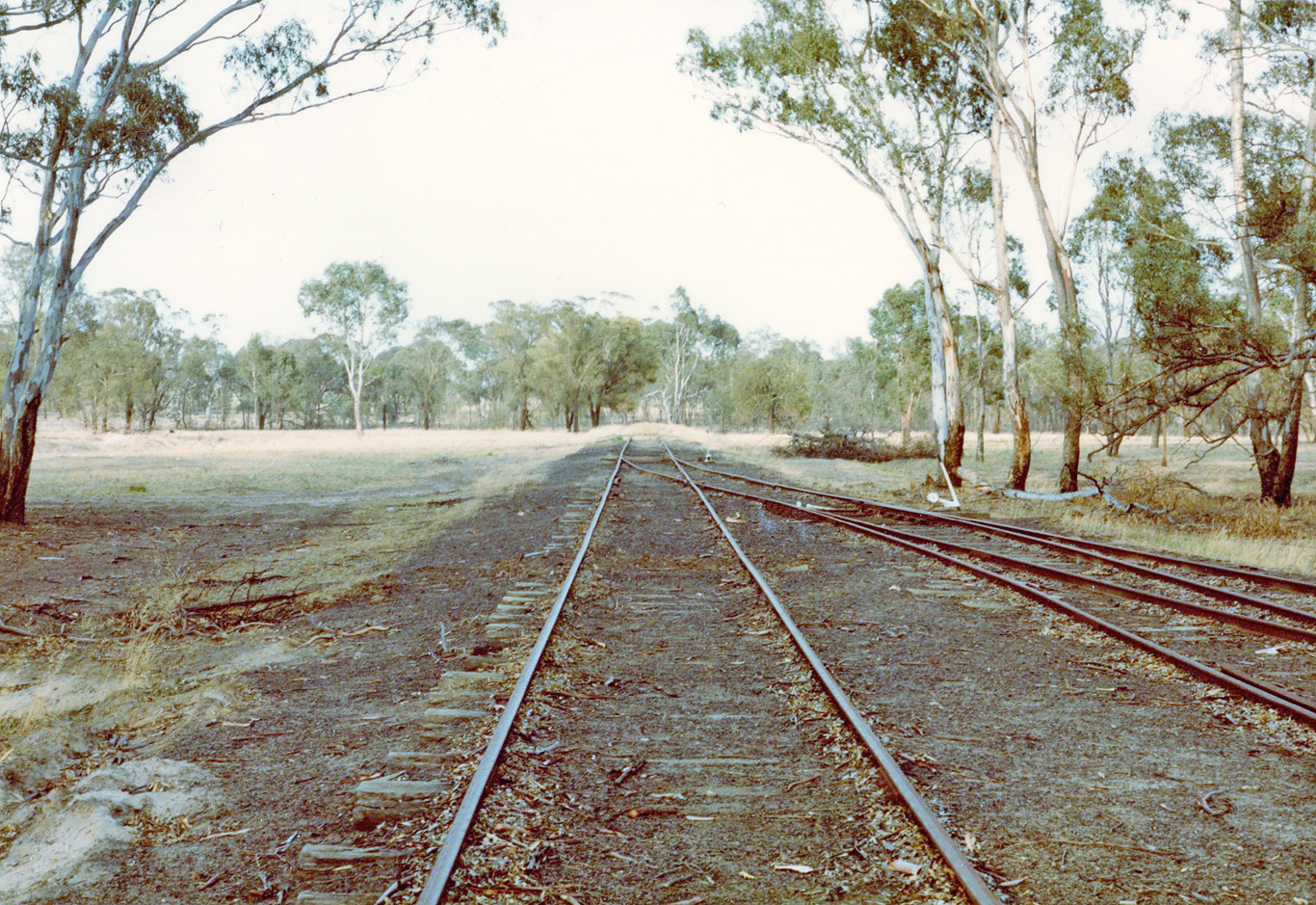
ABOVE: Carpolac looking west, at the end of the line, May 19 1983. (photo courtesy Bruce McLean)
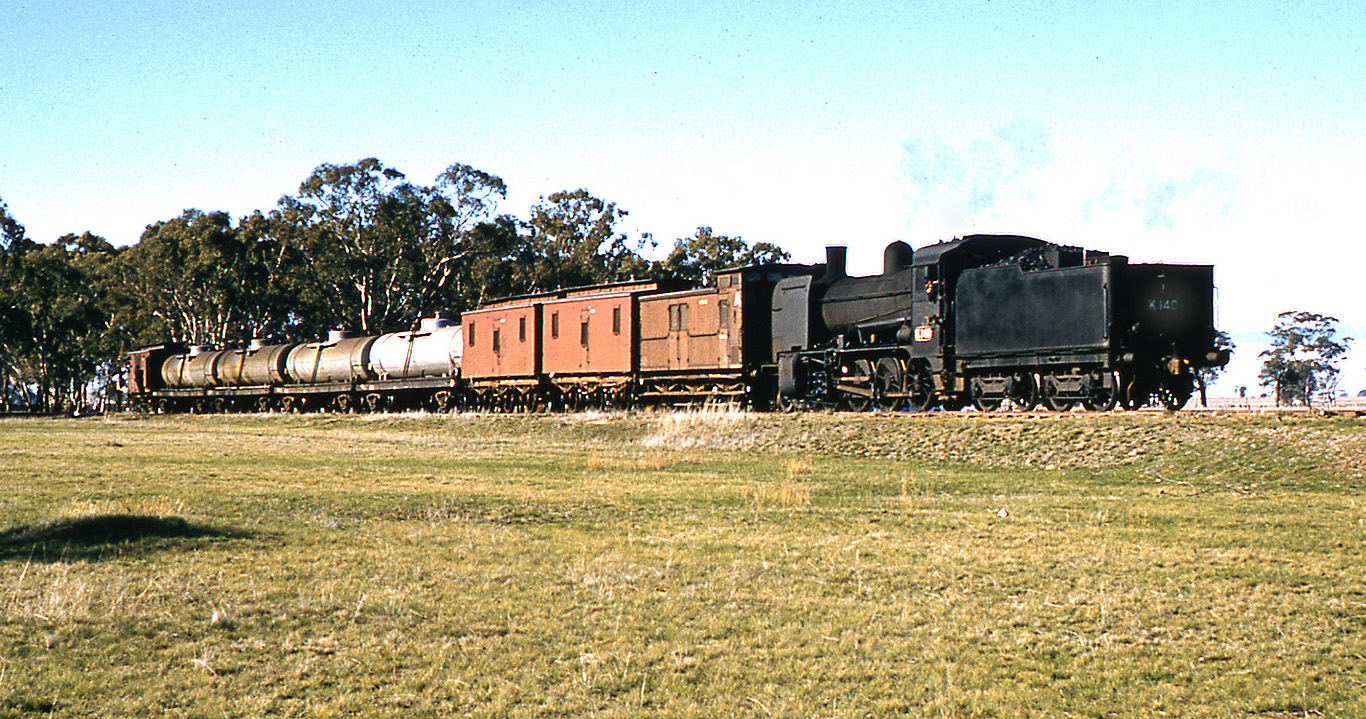
ABOVE: K 159 has the Weedex train hard up against the buffers, July 13 1957. (photo courtesy Des Jowett)
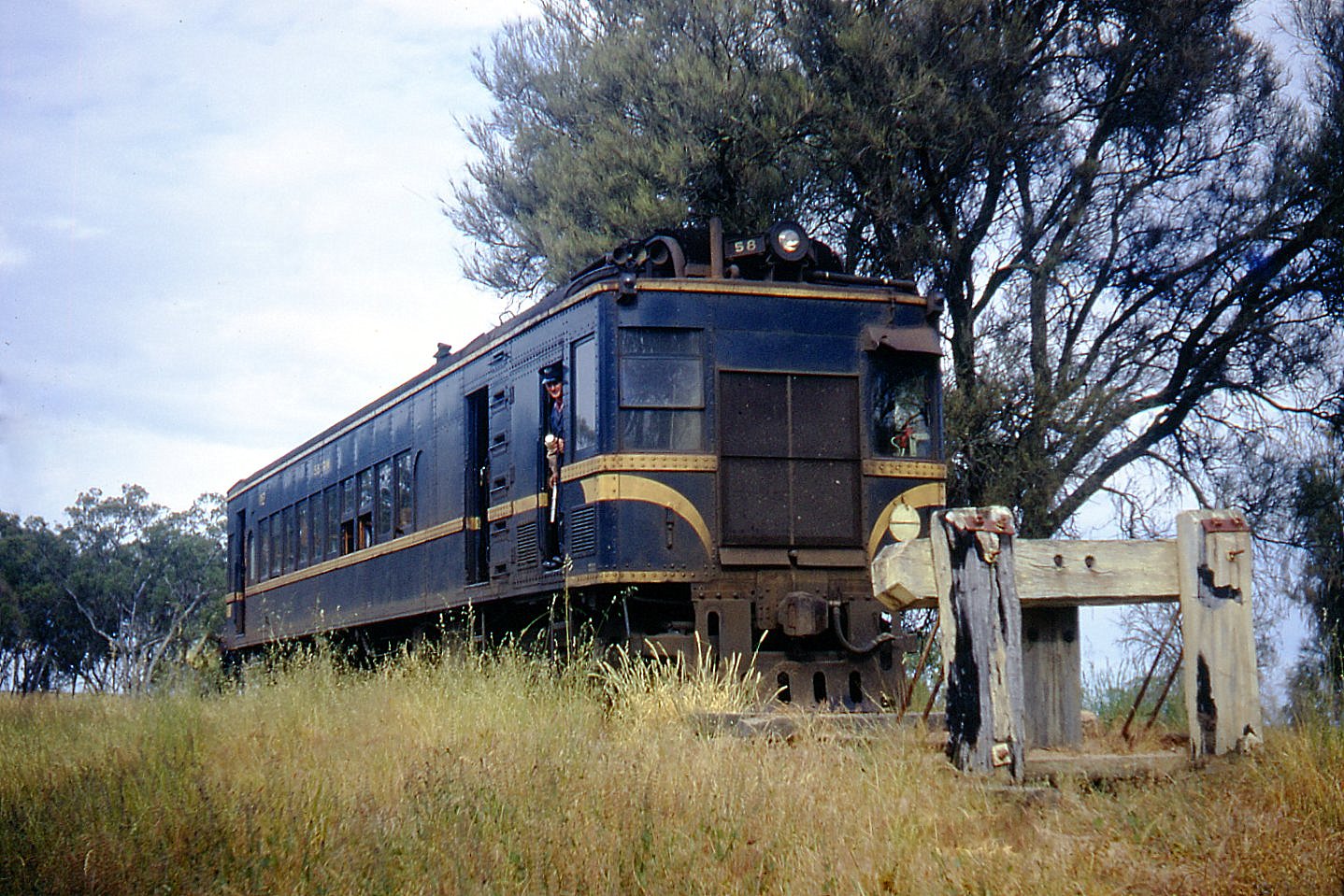
ABOVE: End of the line at Carpolac with DERM 58. 30 November 1974. (photo courtesy Neville Gee)
BELOW: From the winter 1959 VR public timetable. Of particular interest is that the down service could pick up students at a pedestrian crossing 1 mile out of Horsham, on Fridays only!
